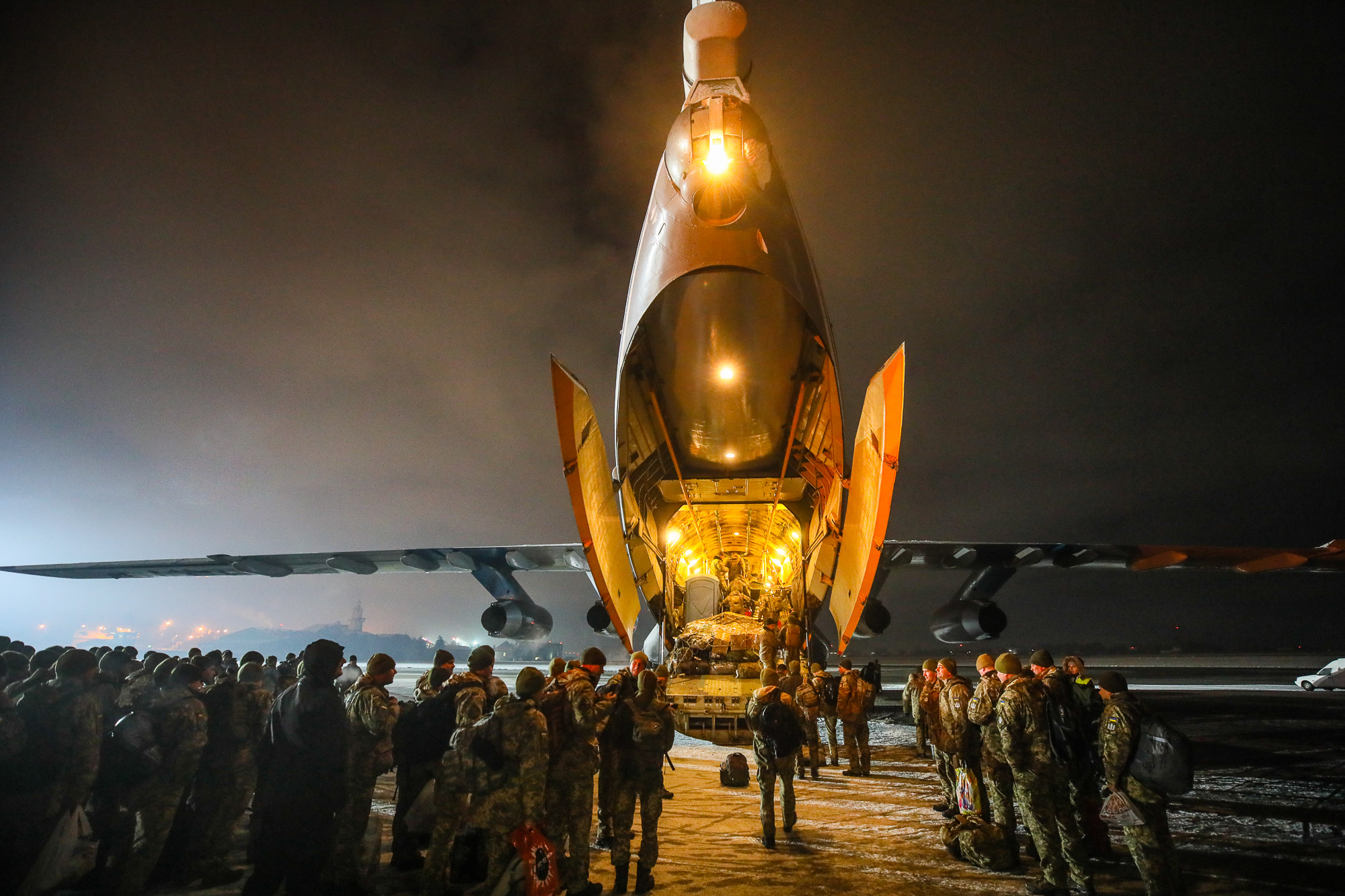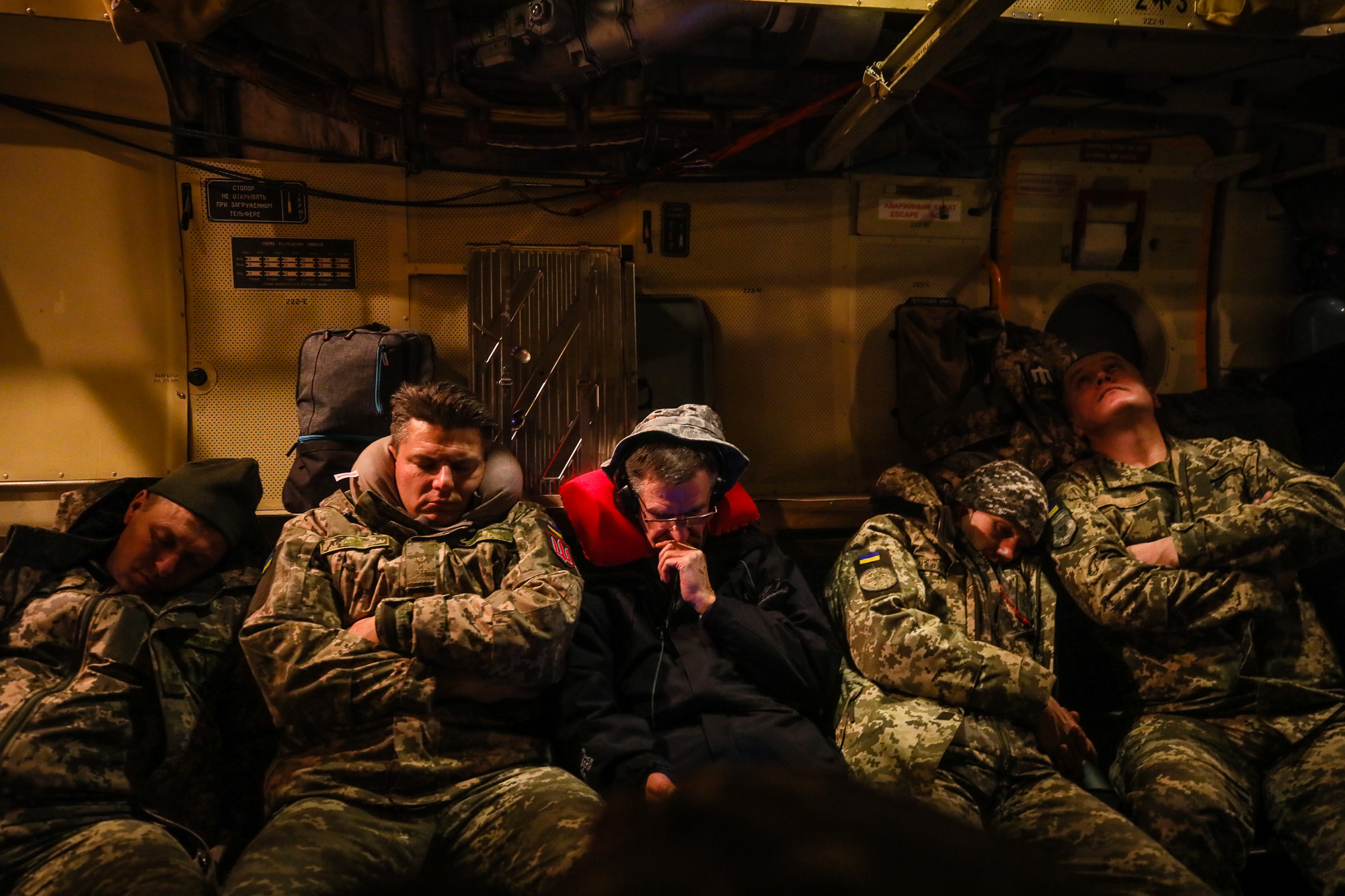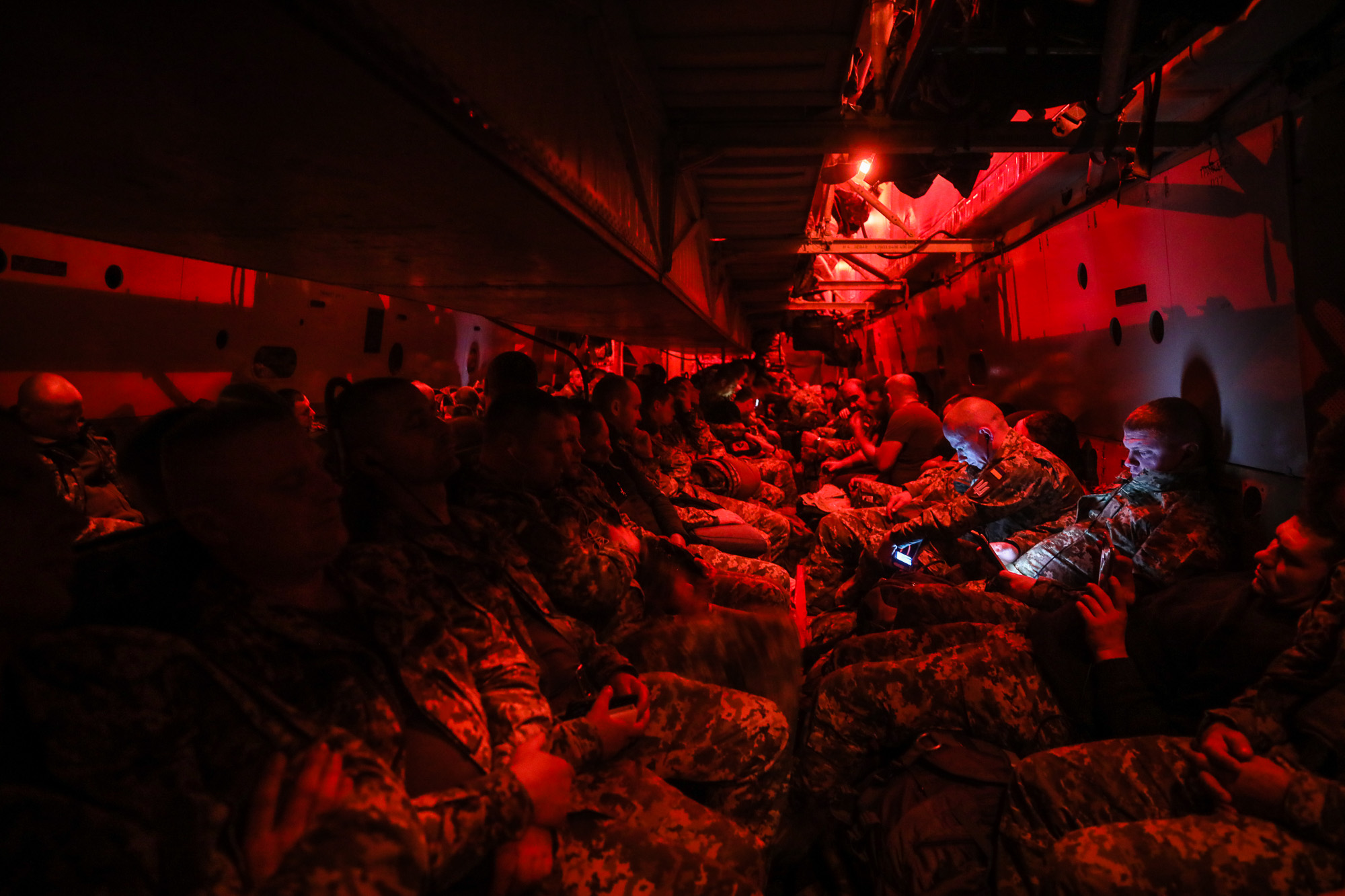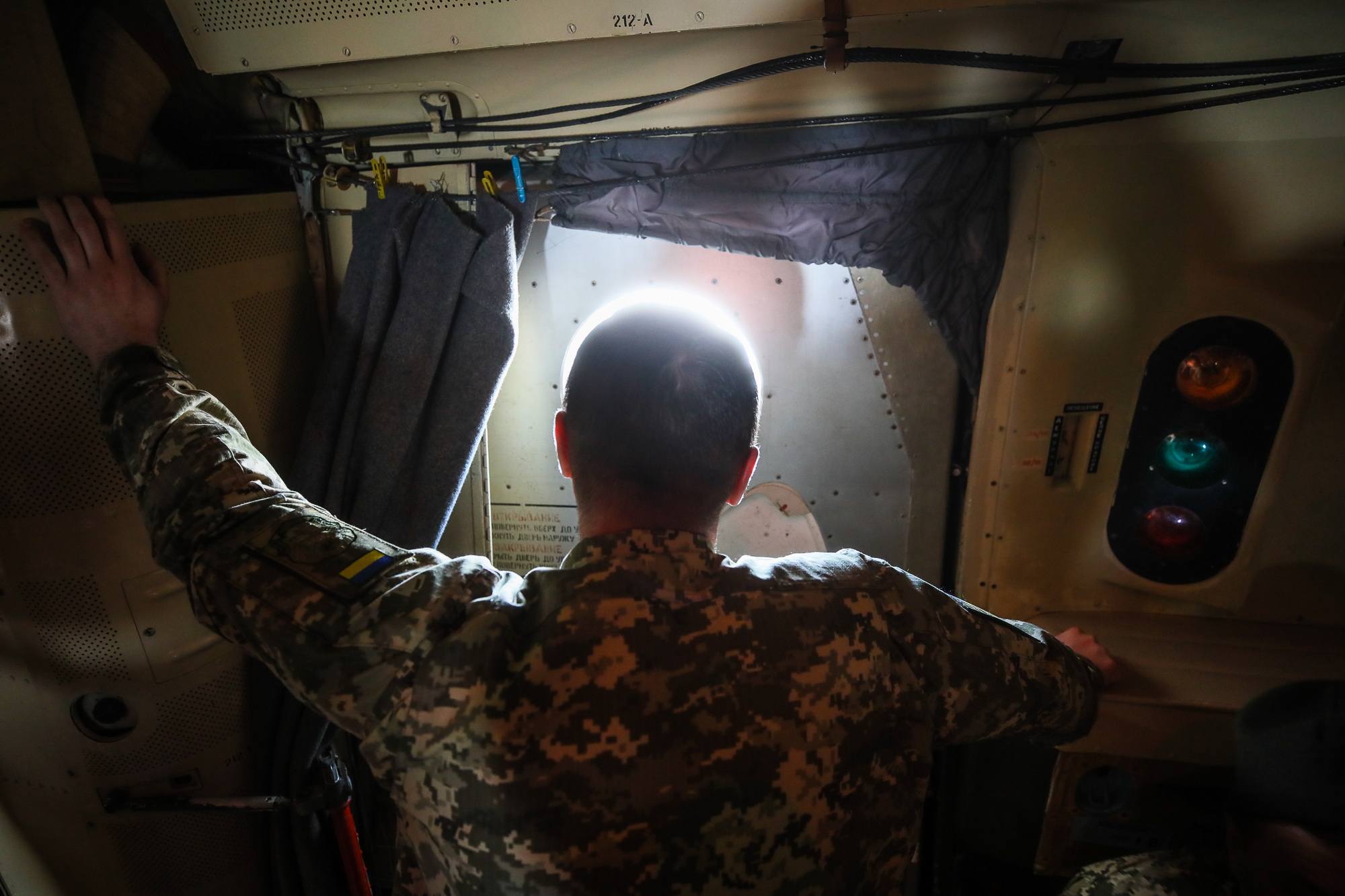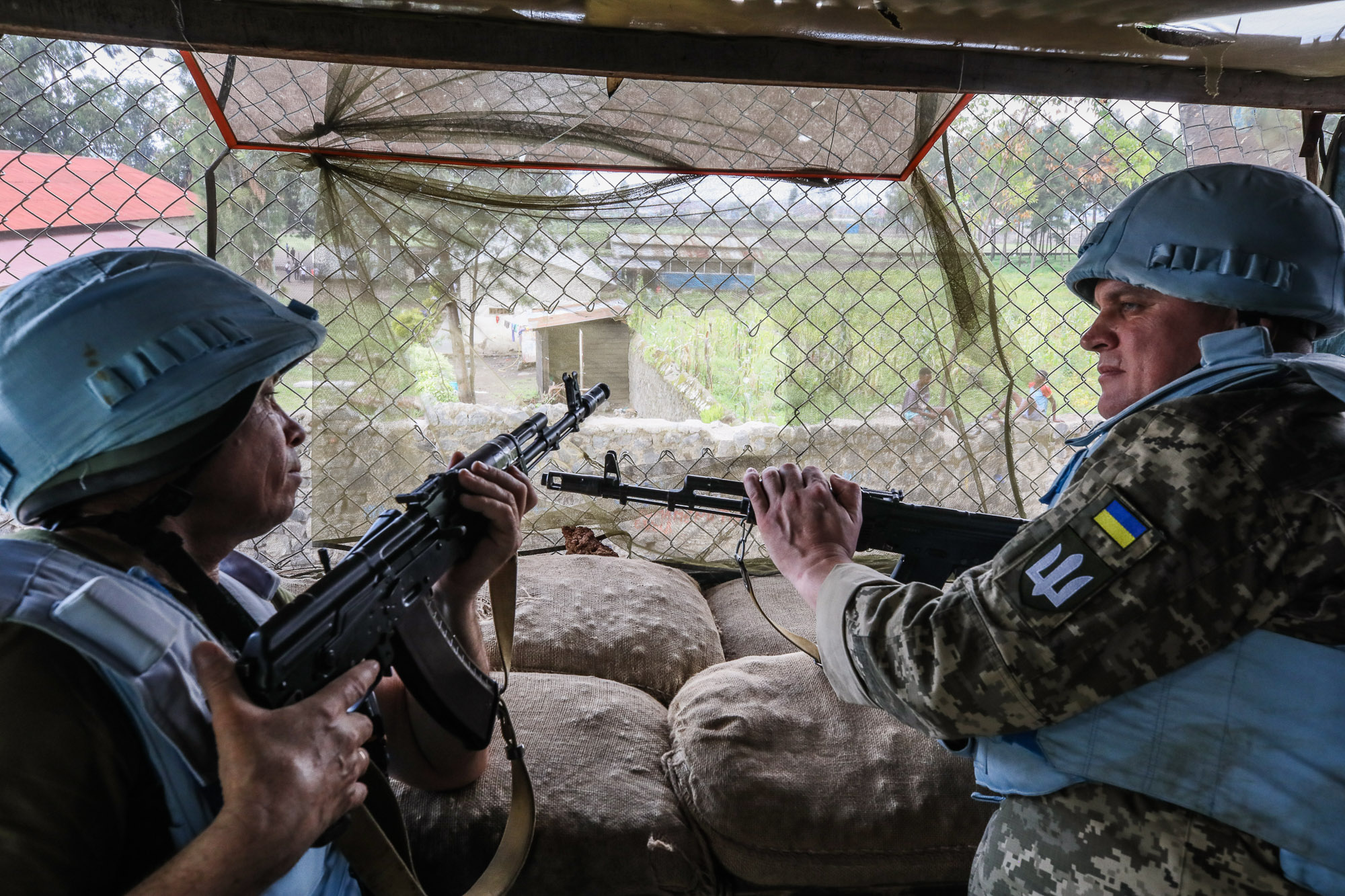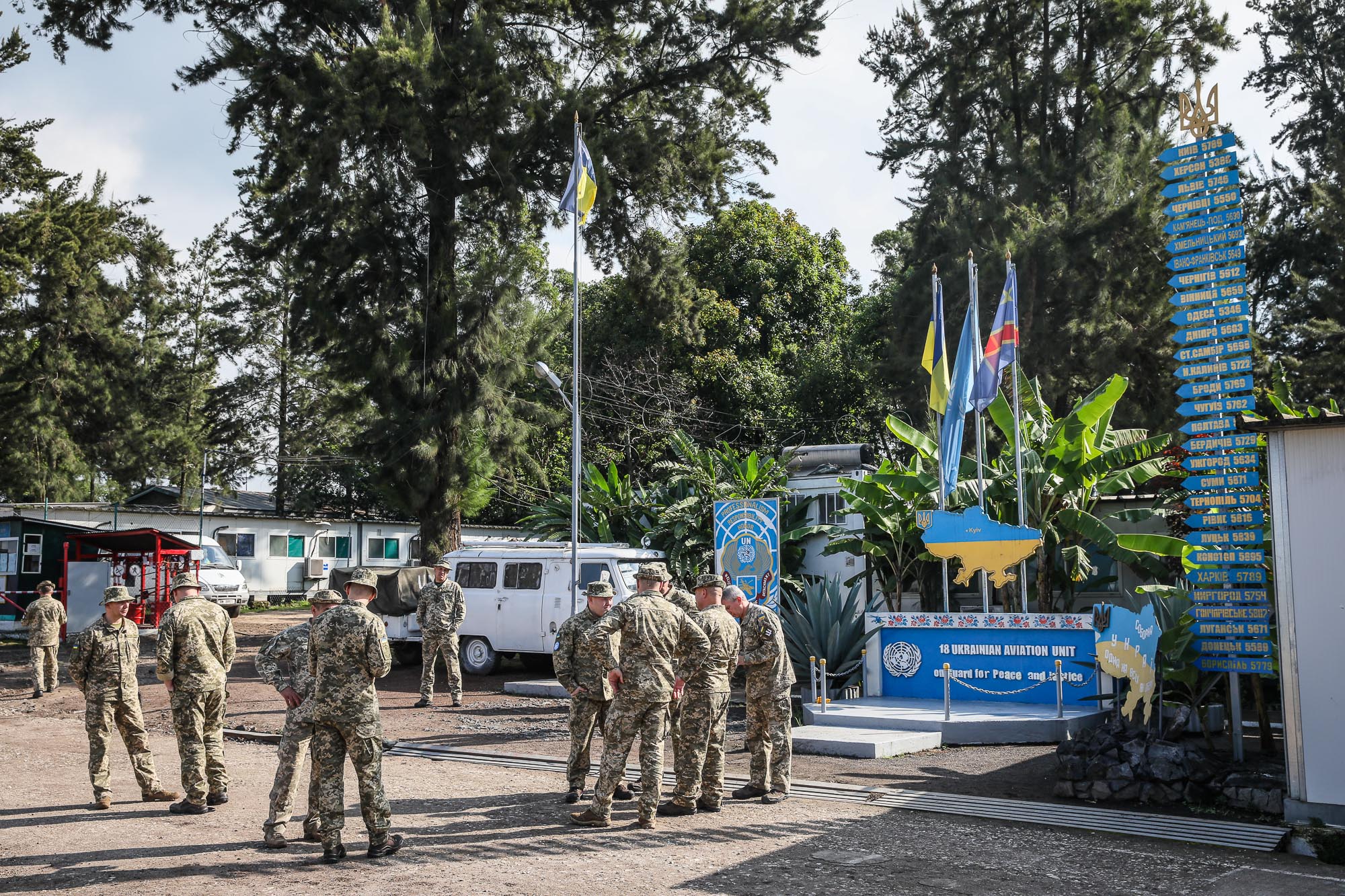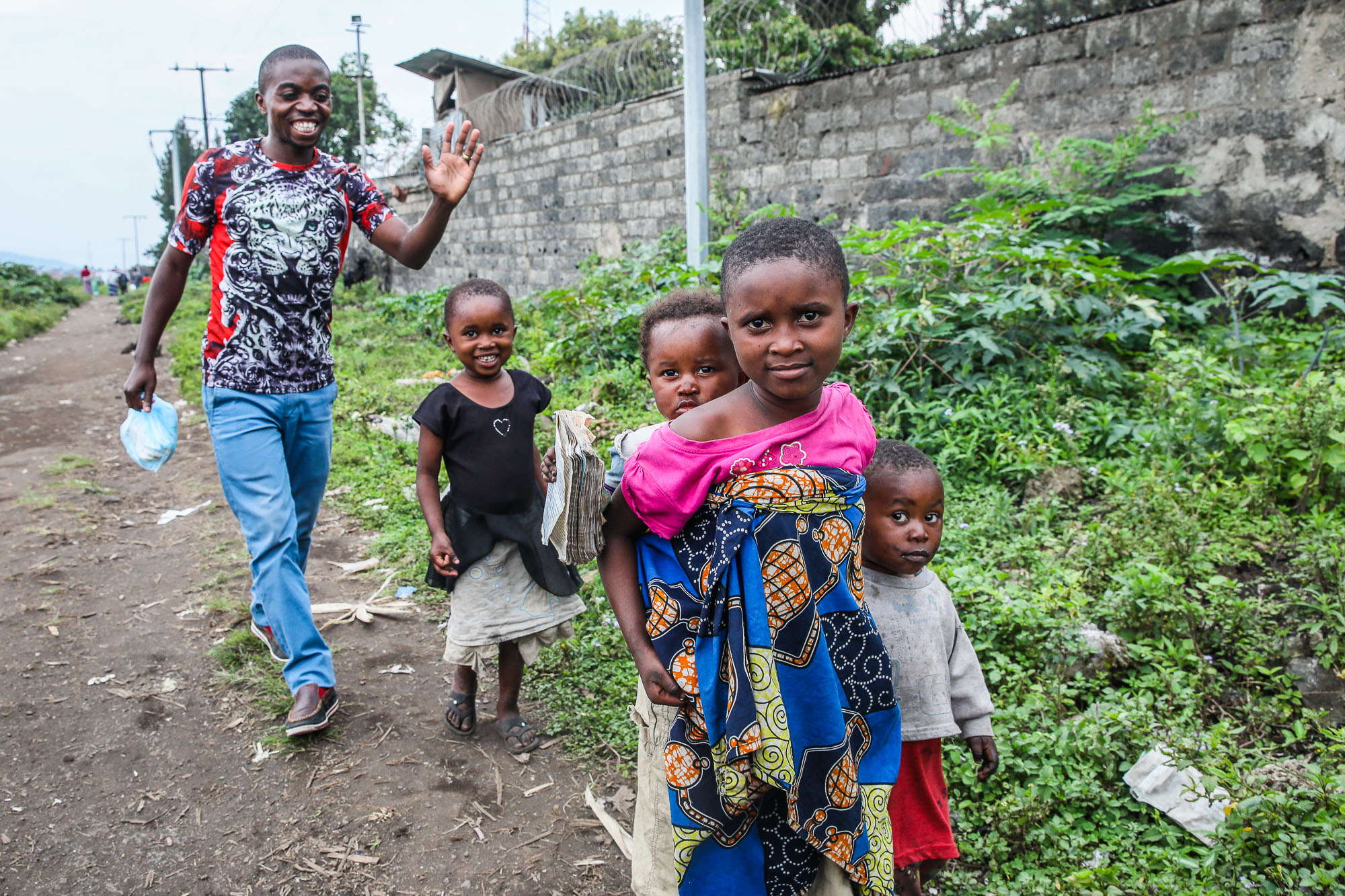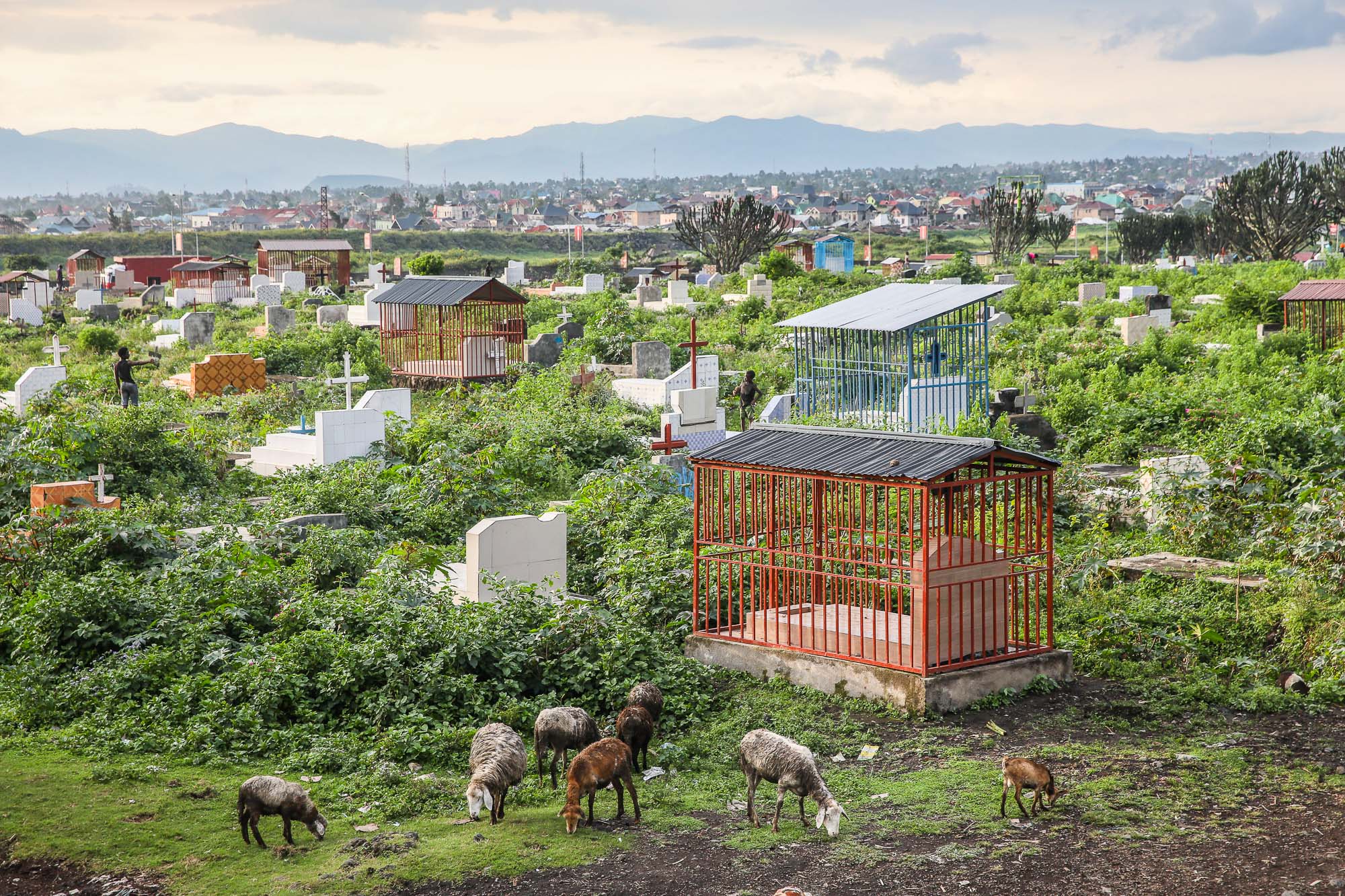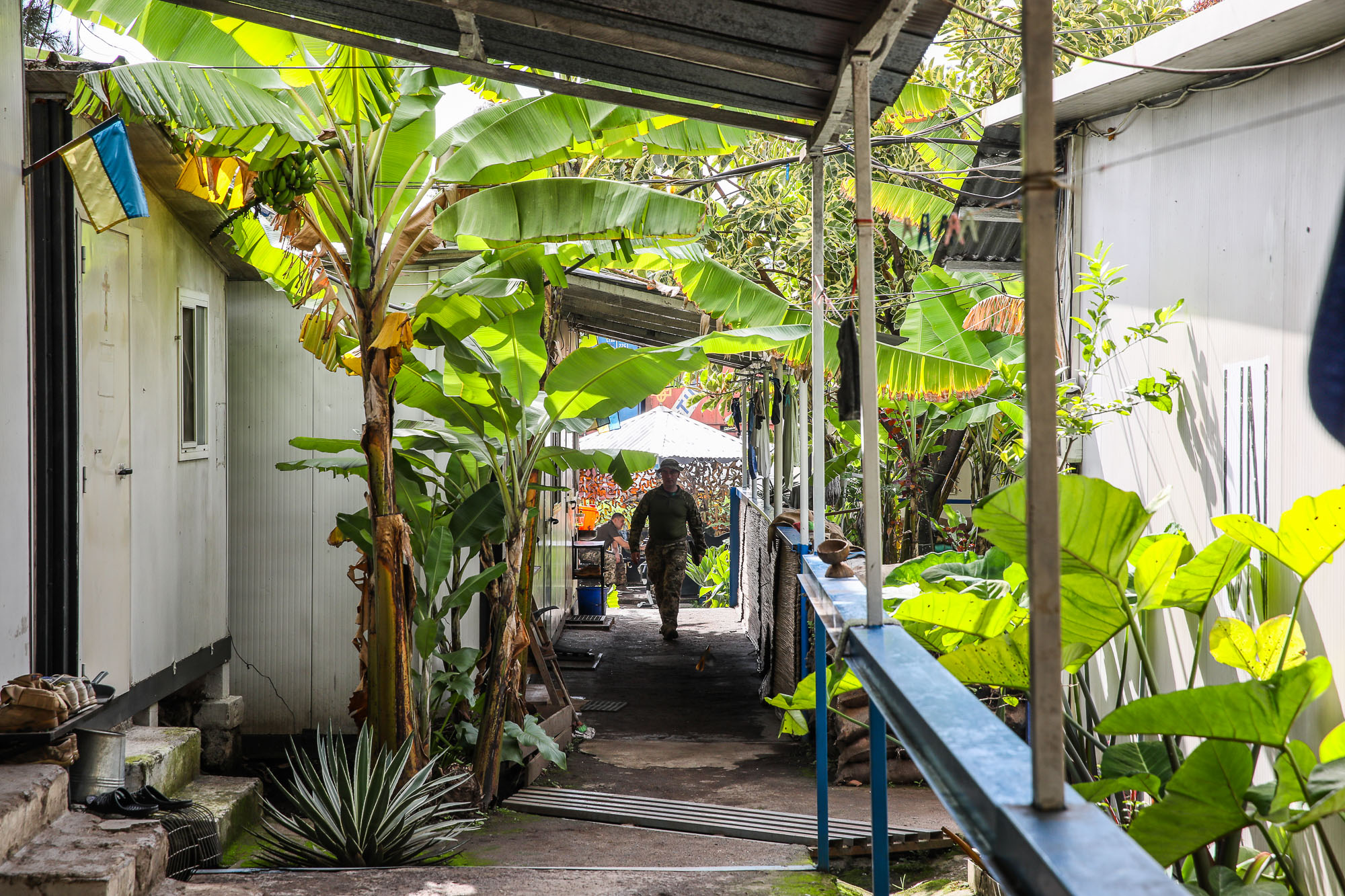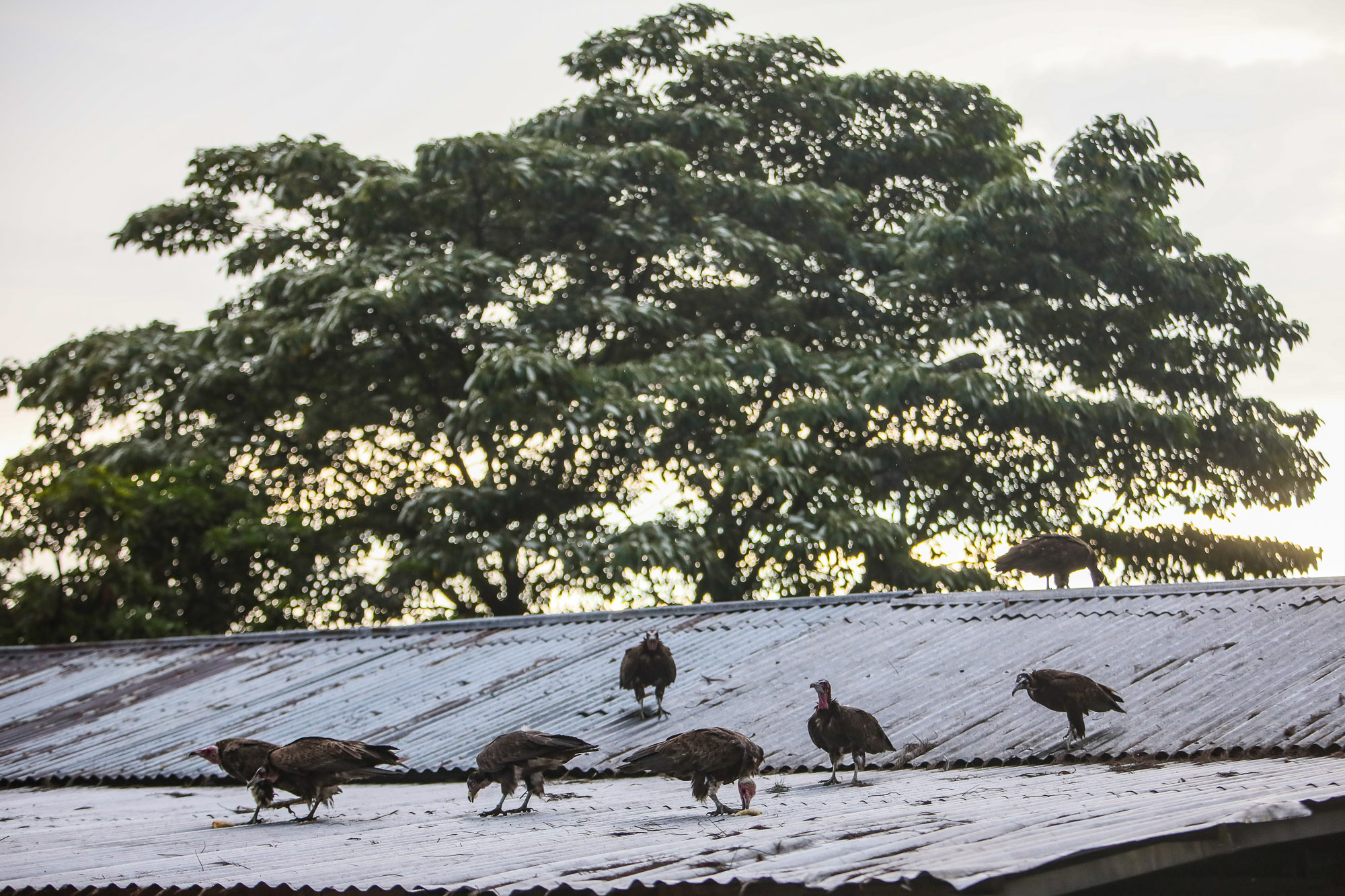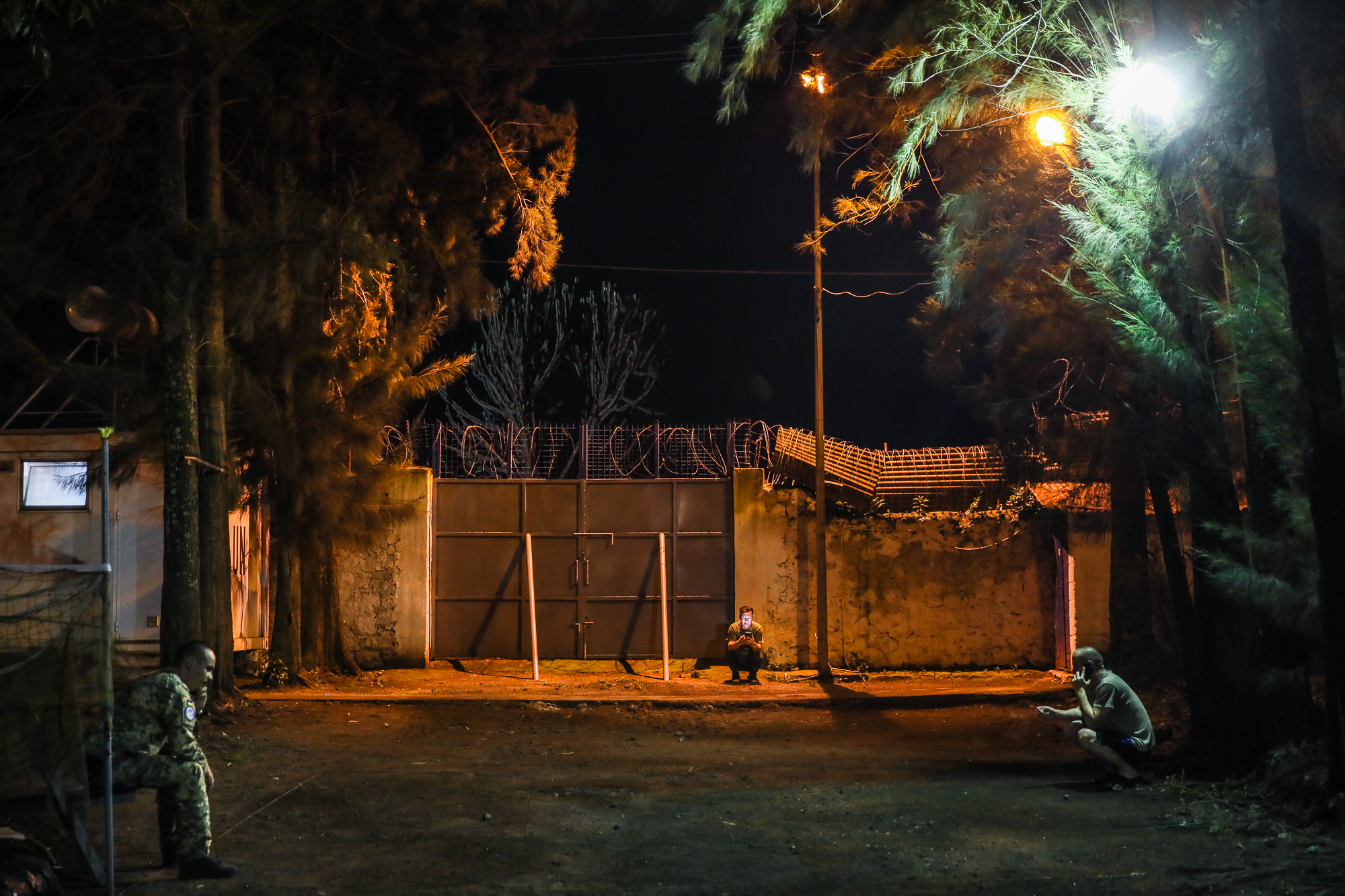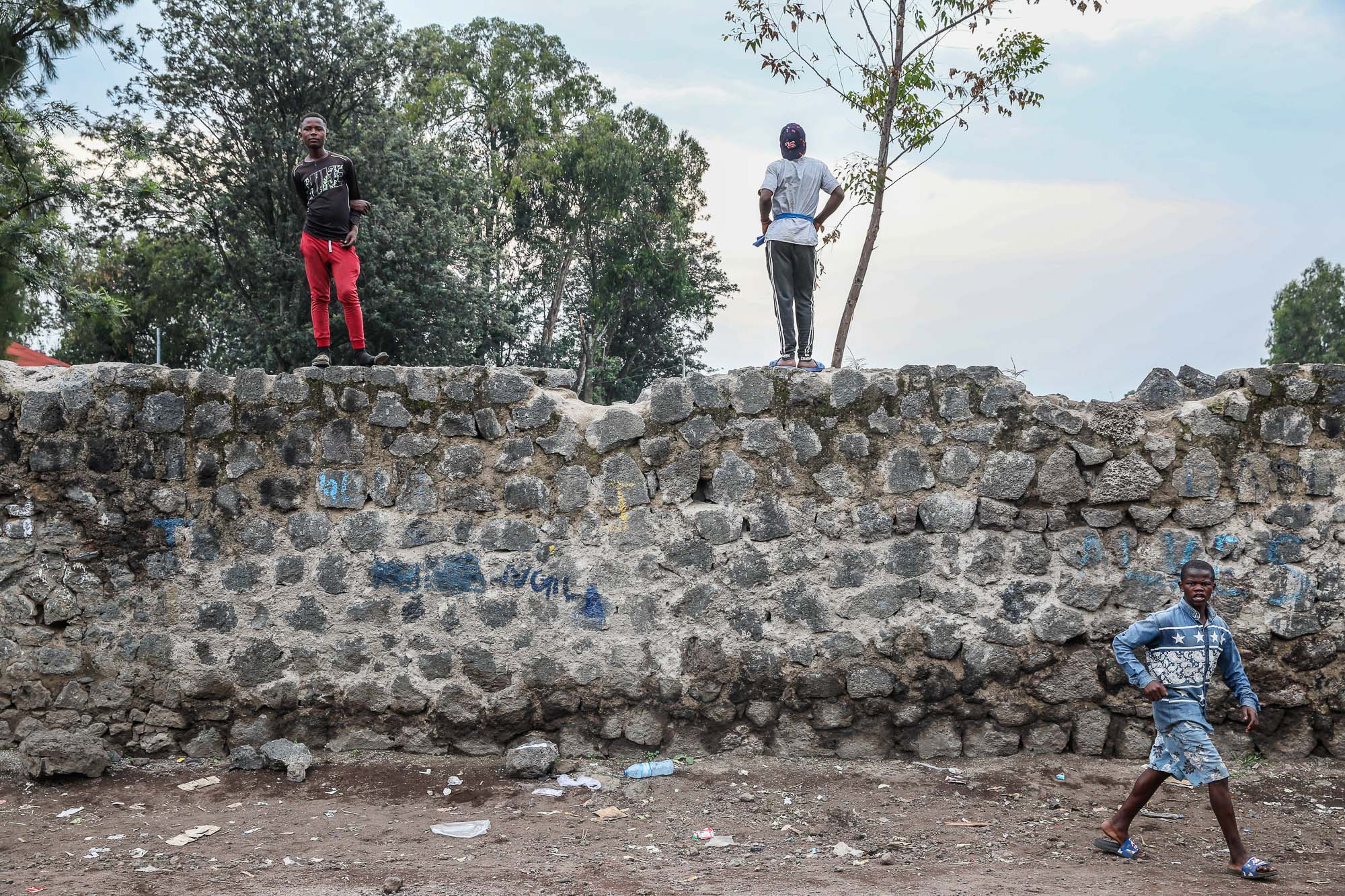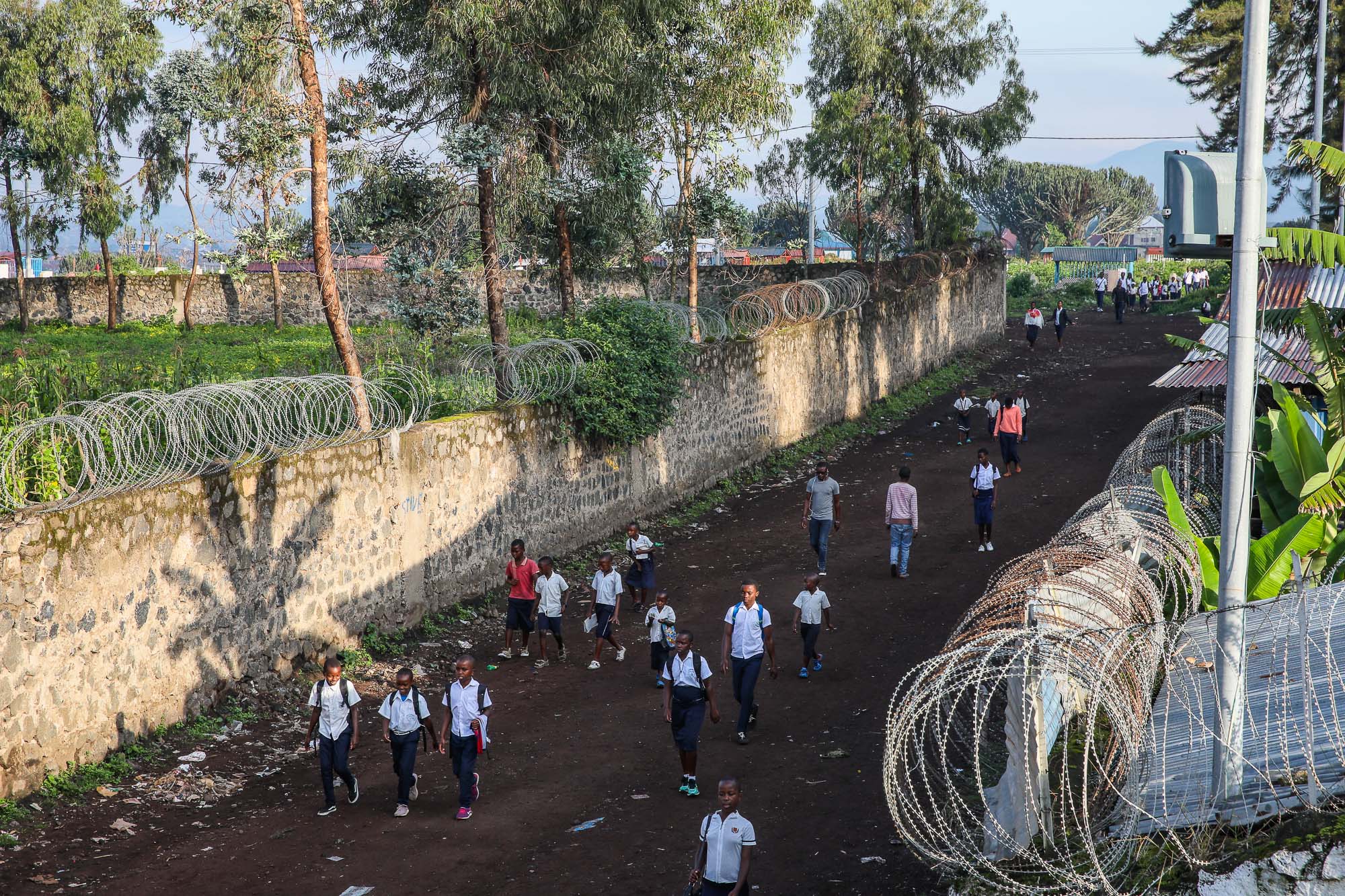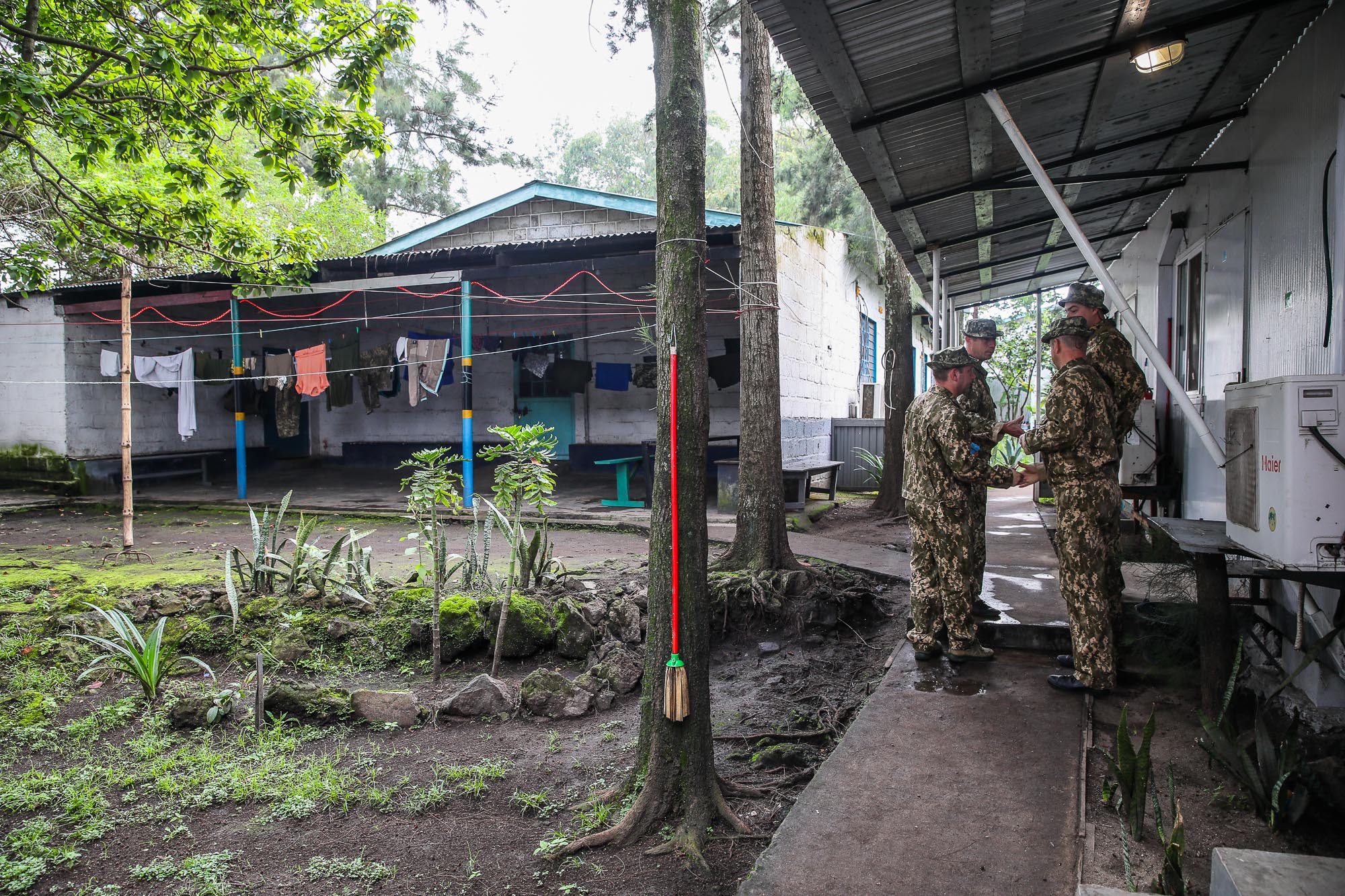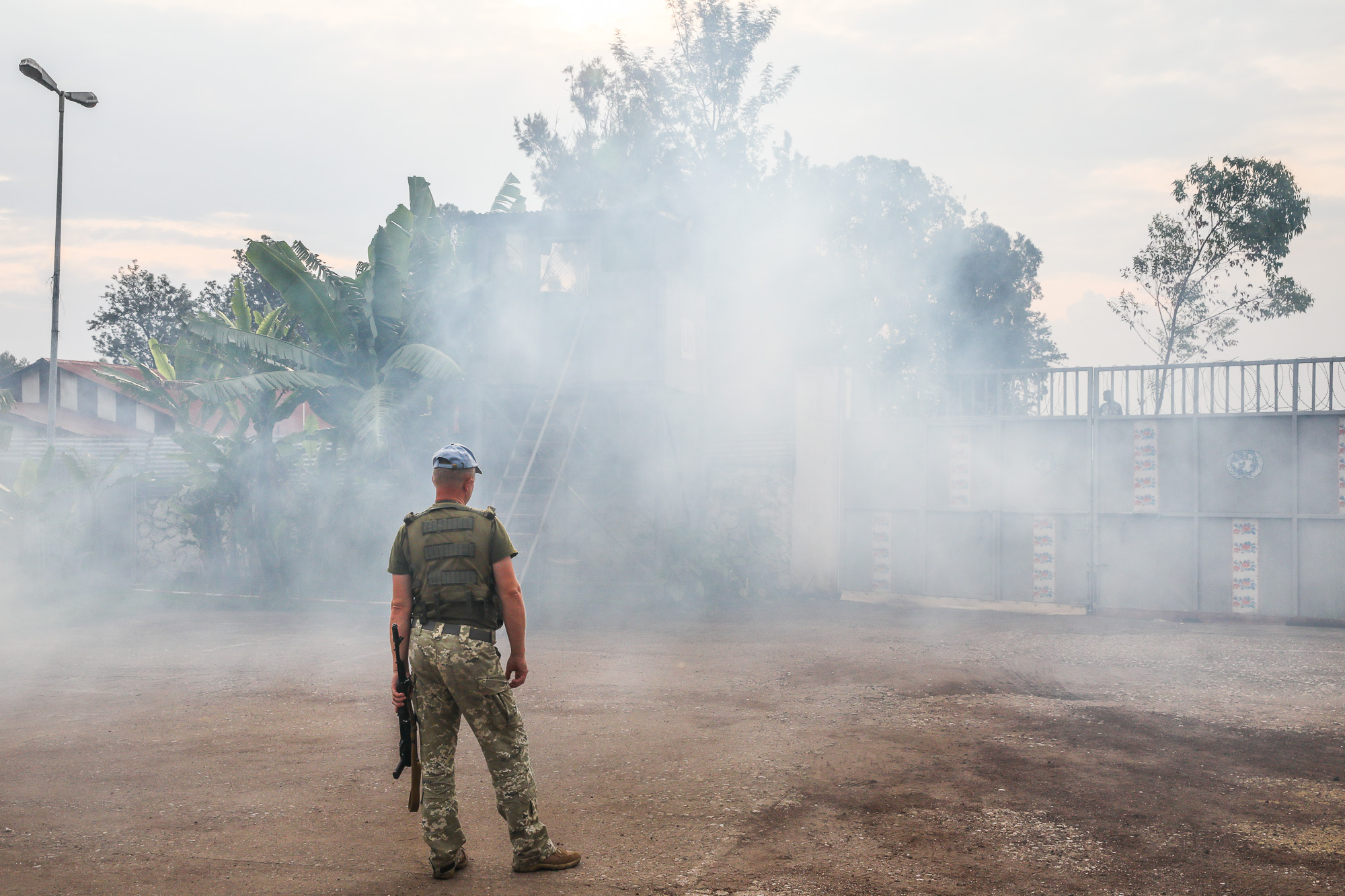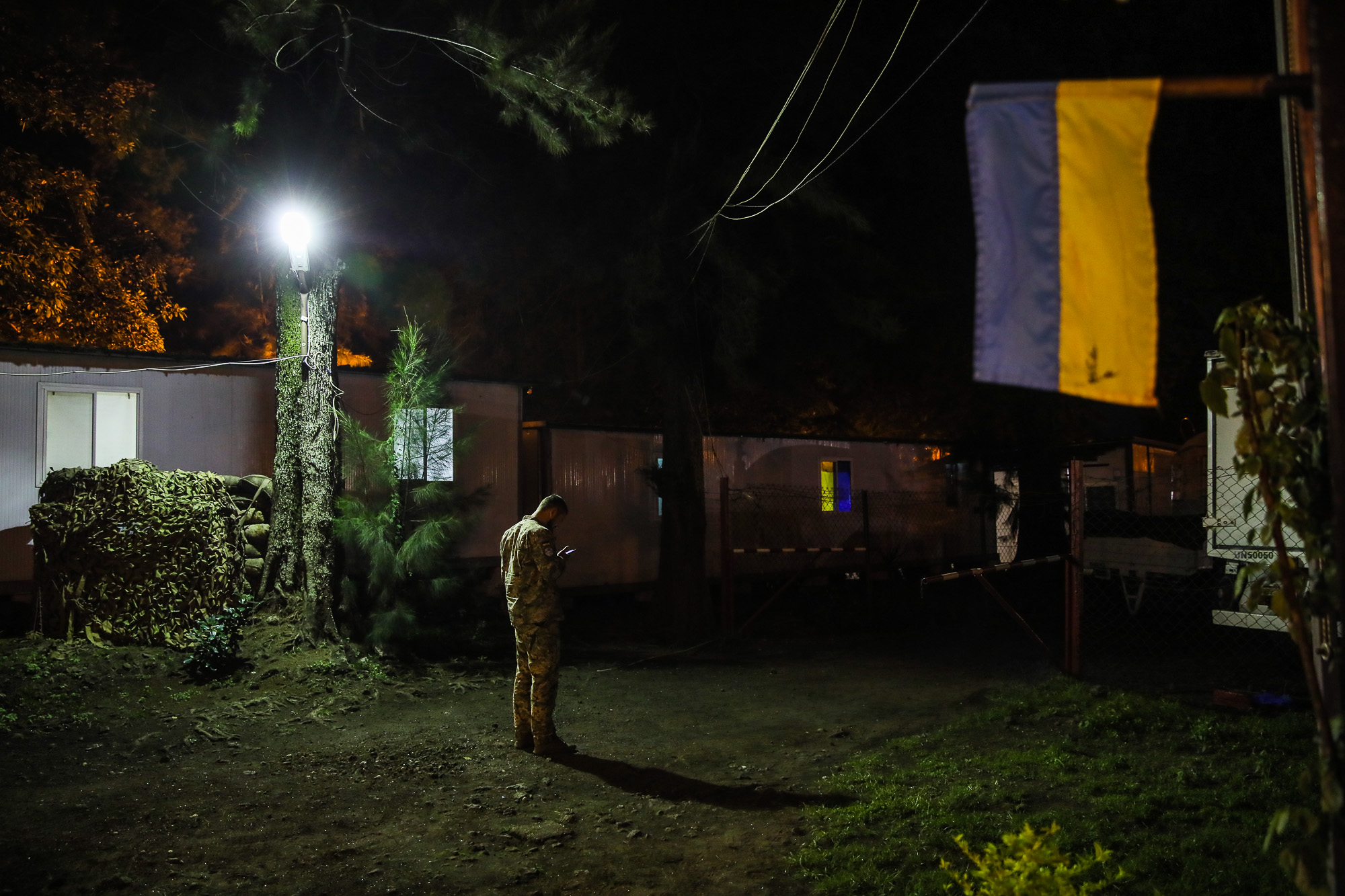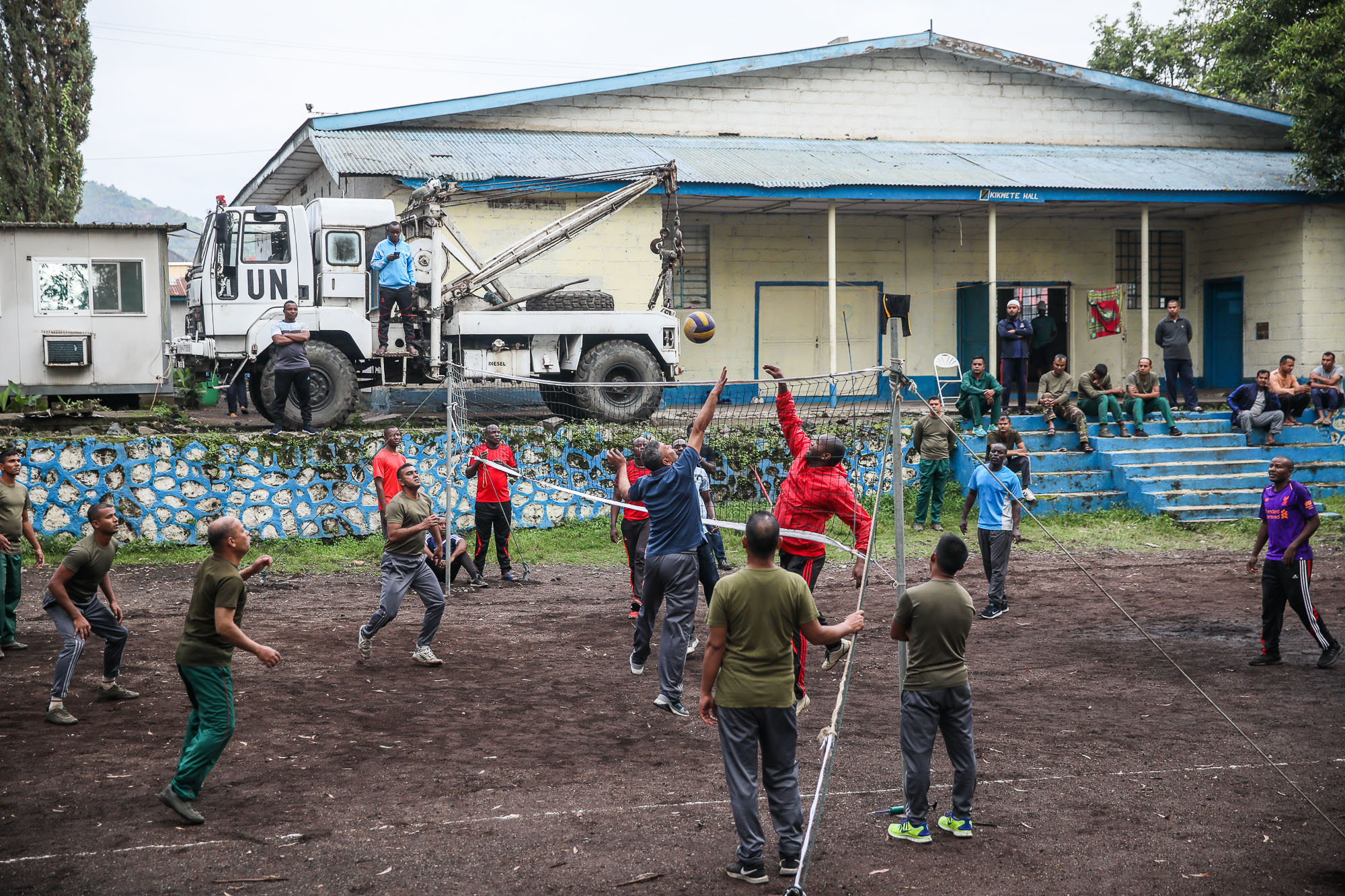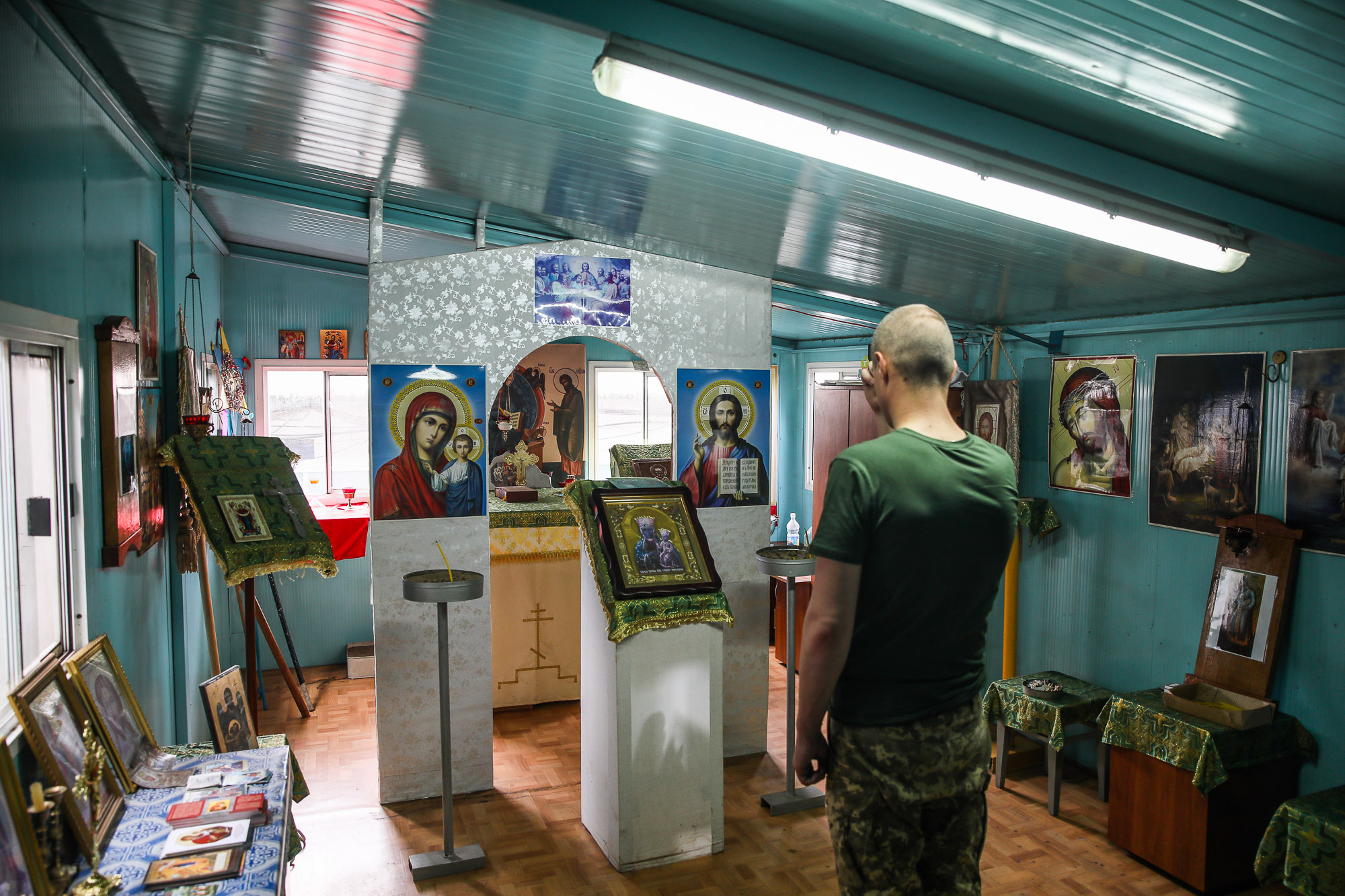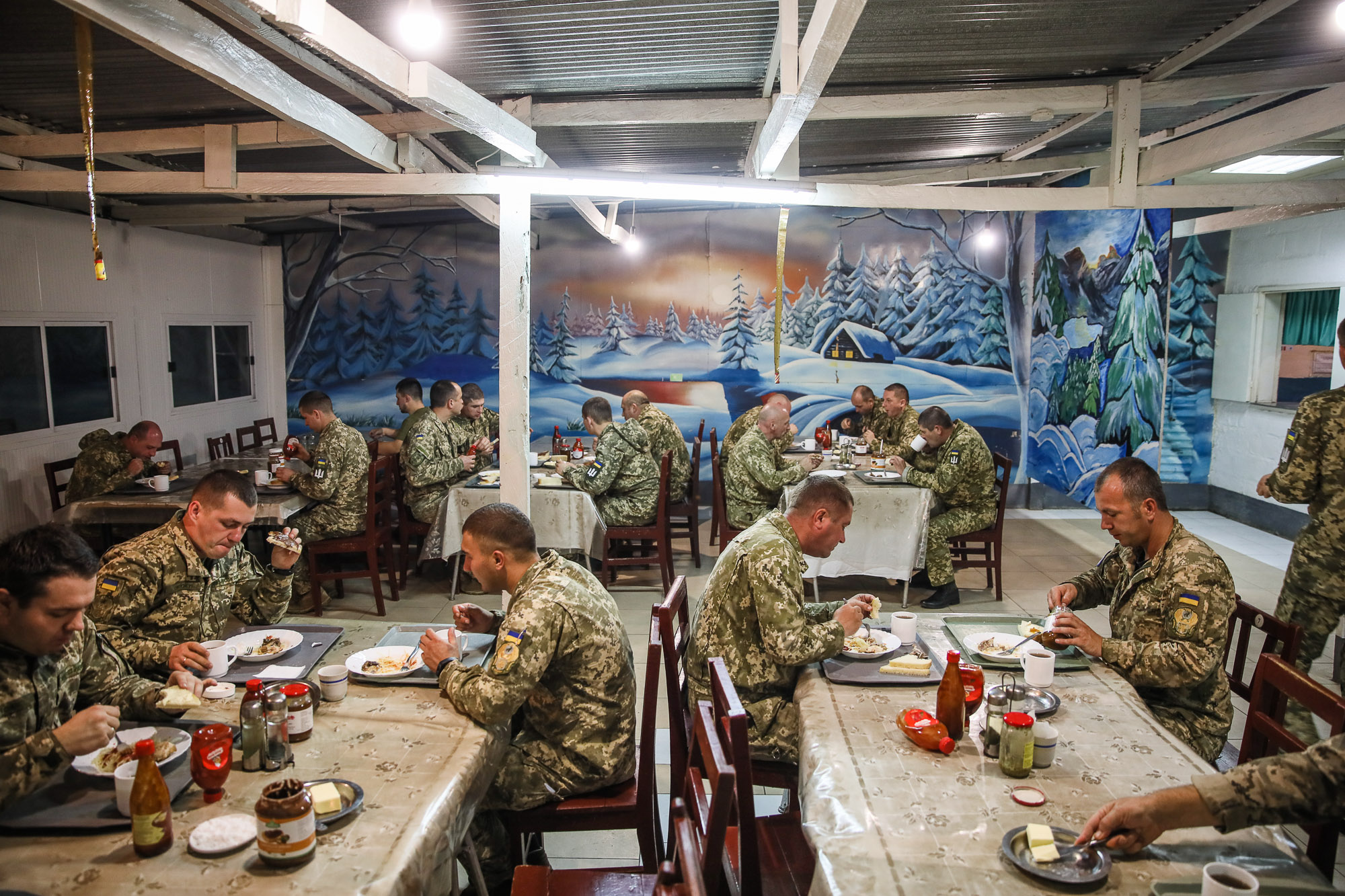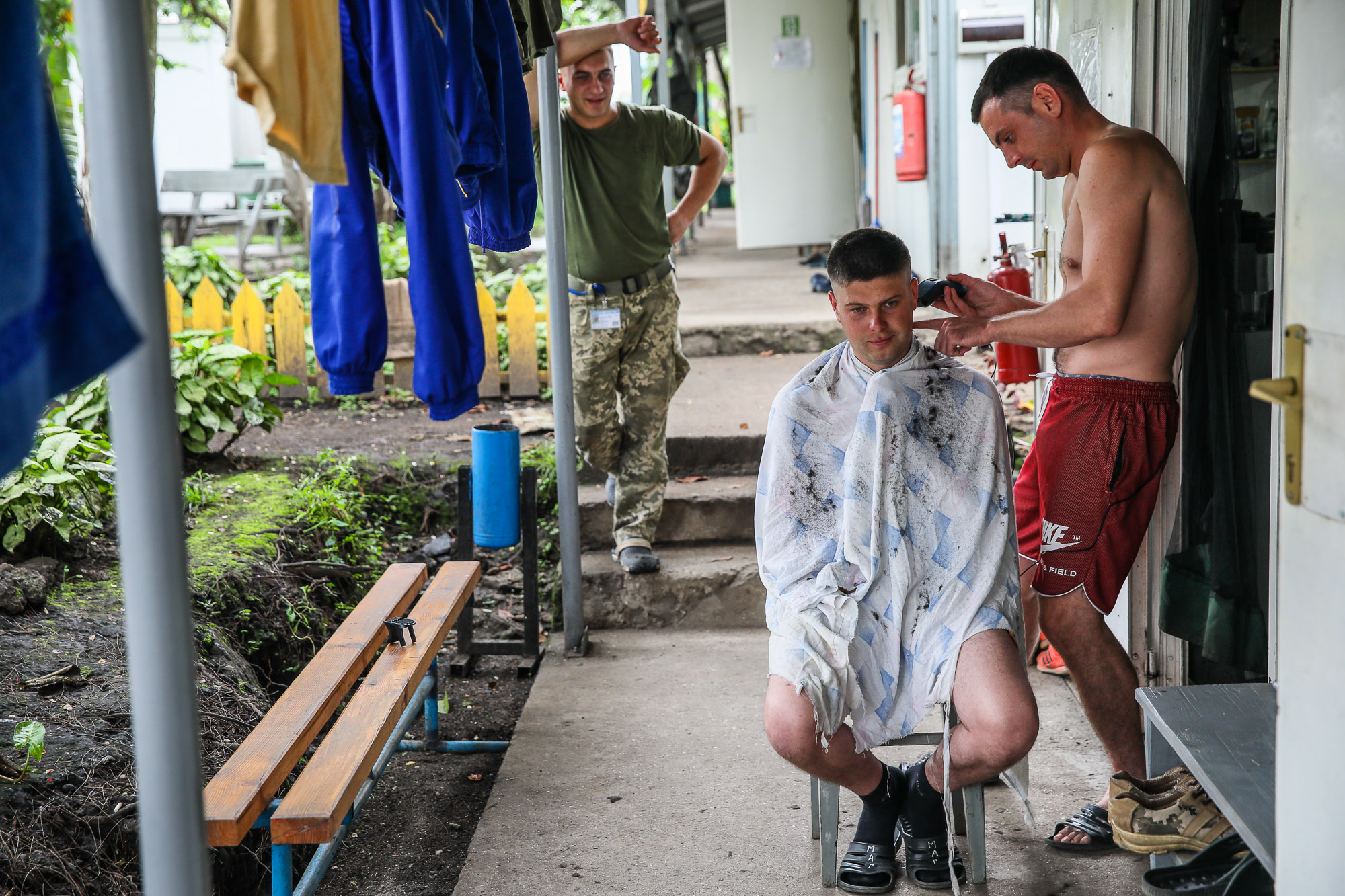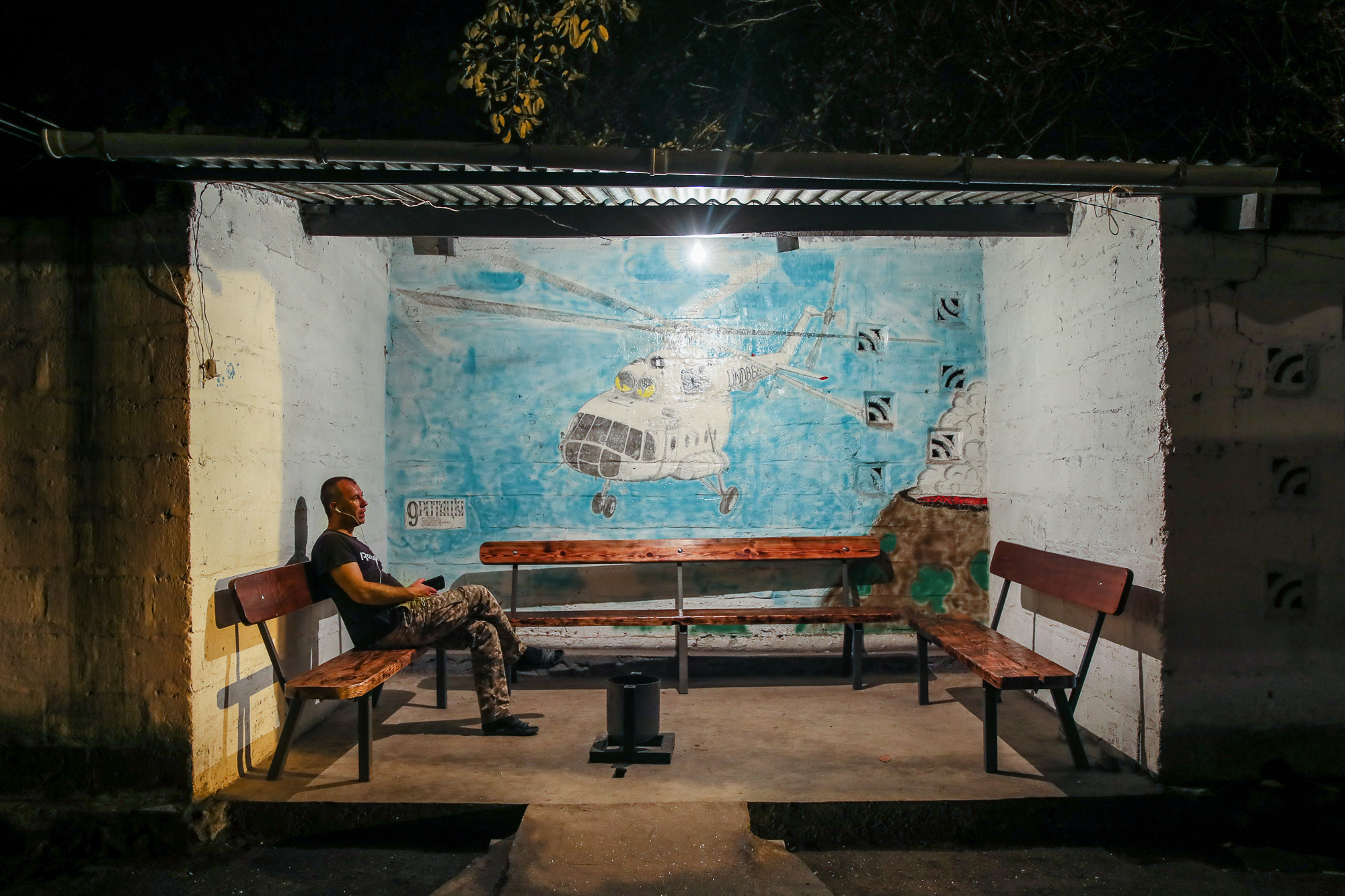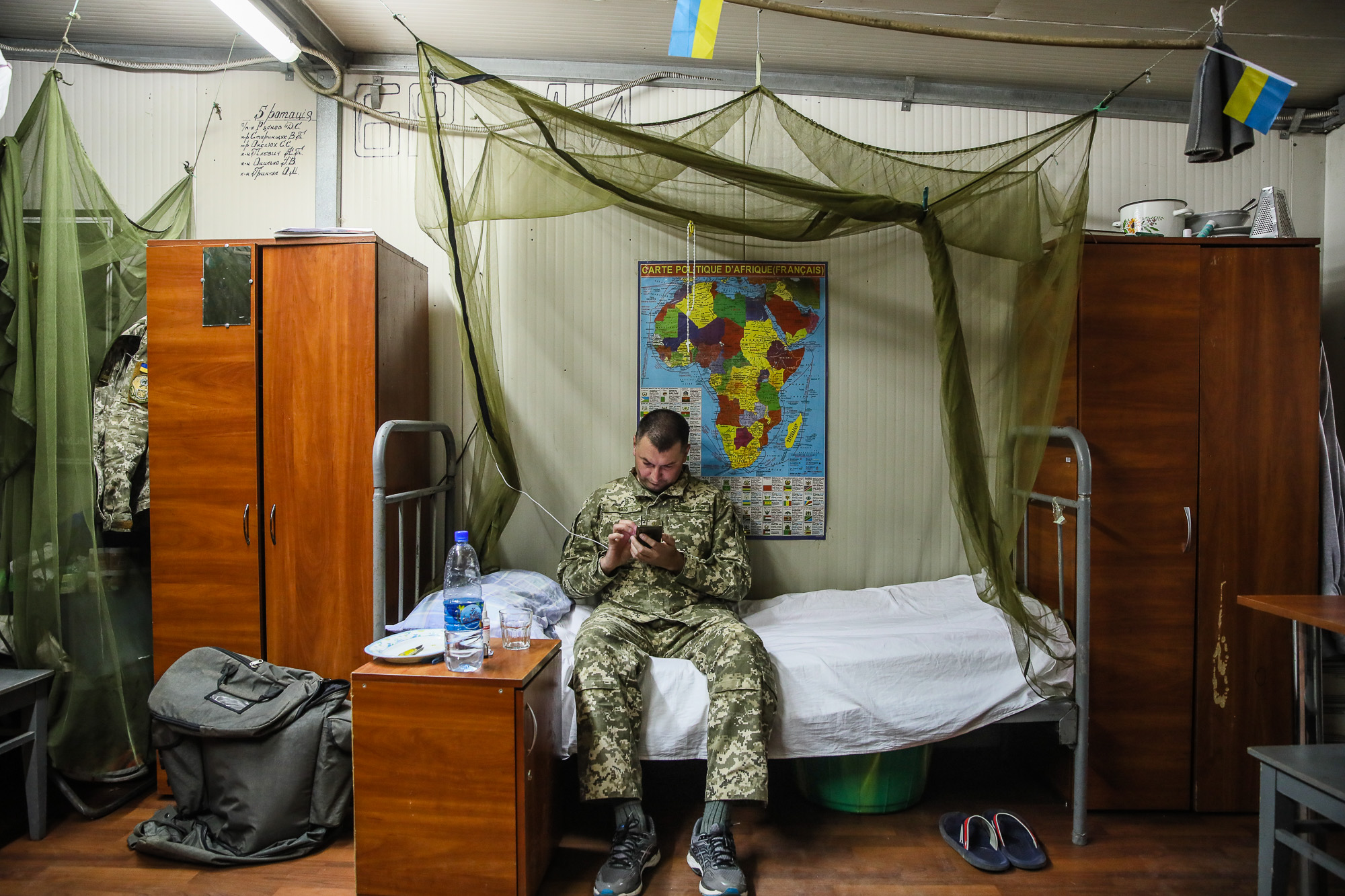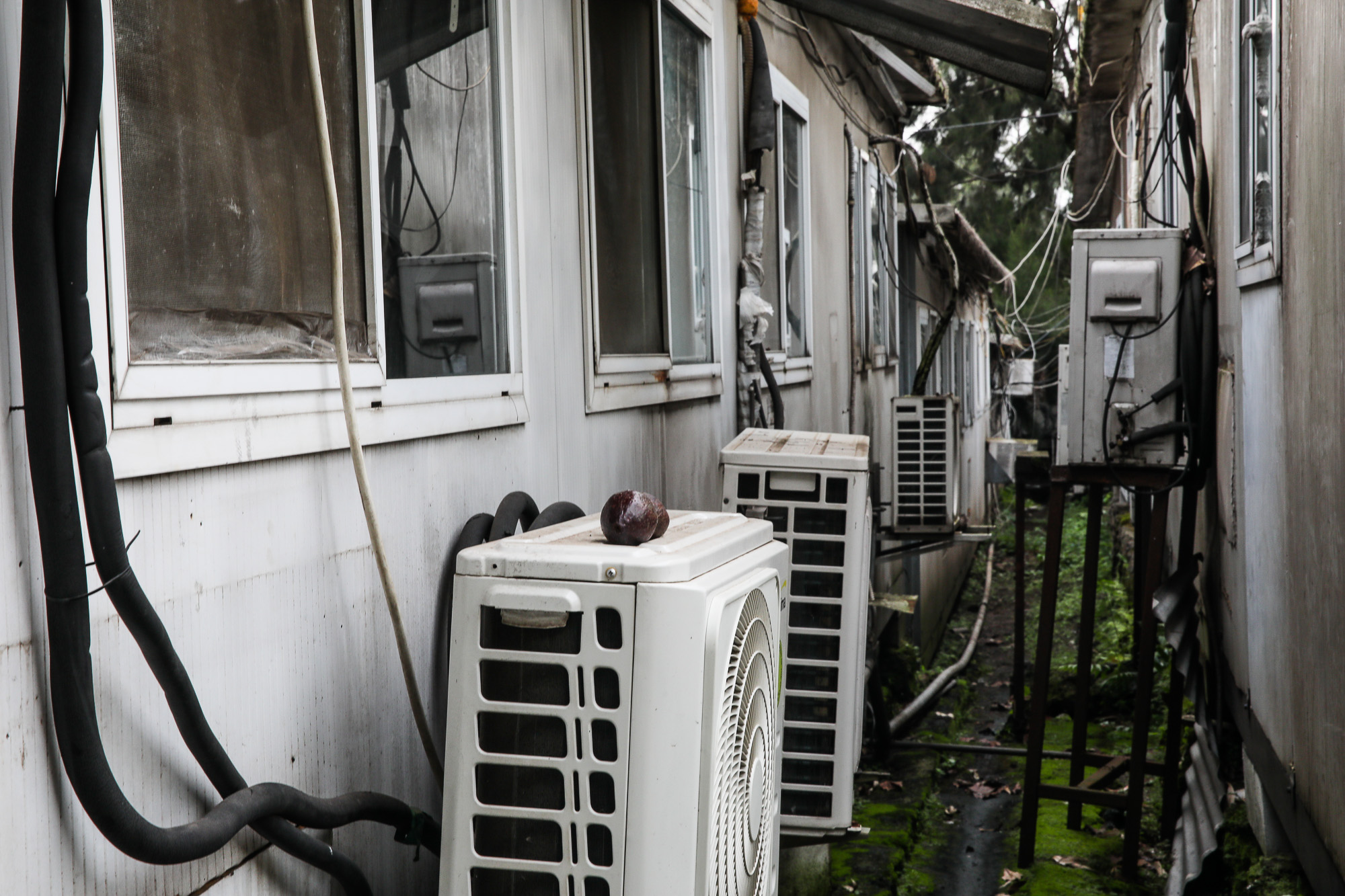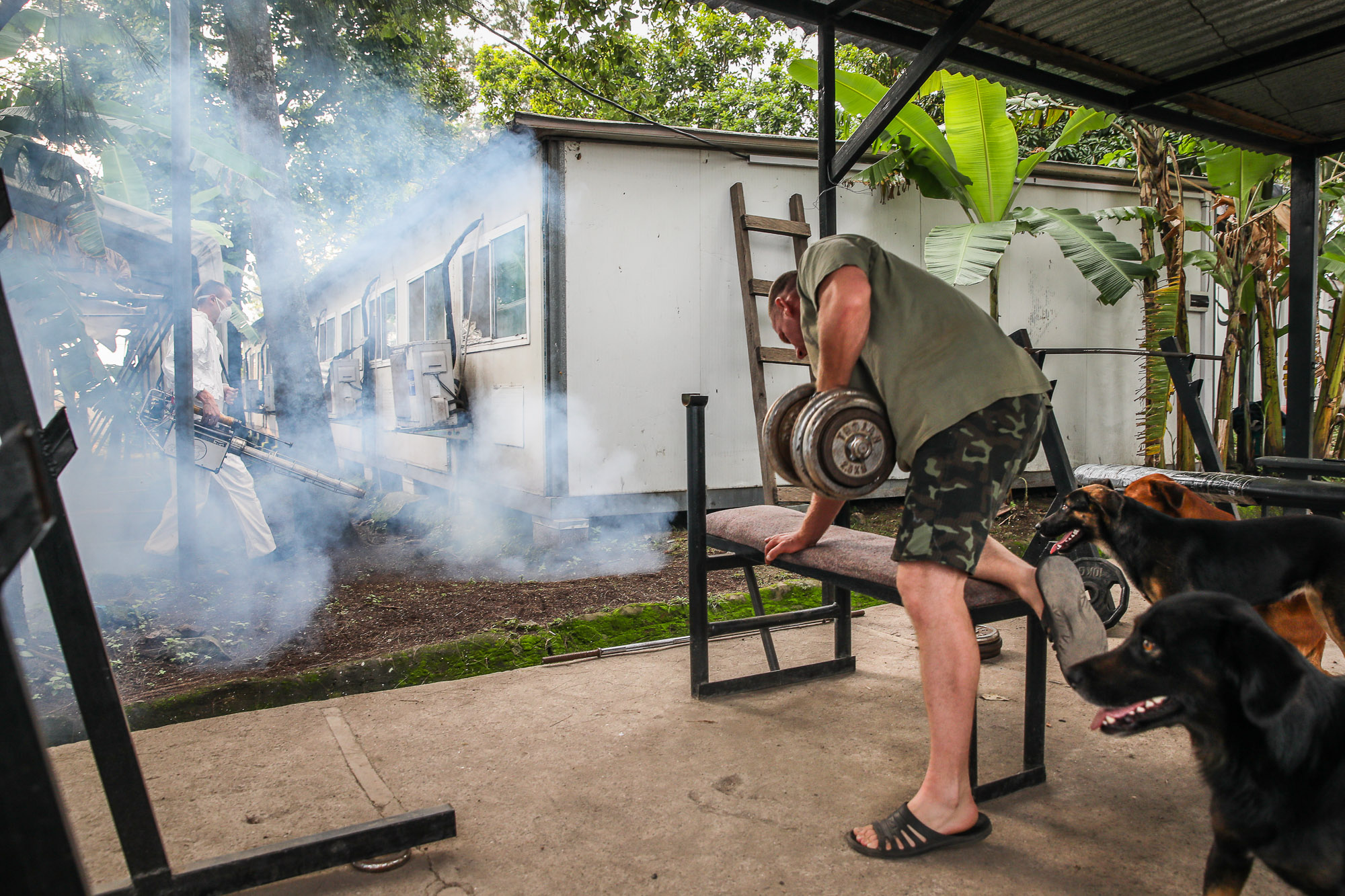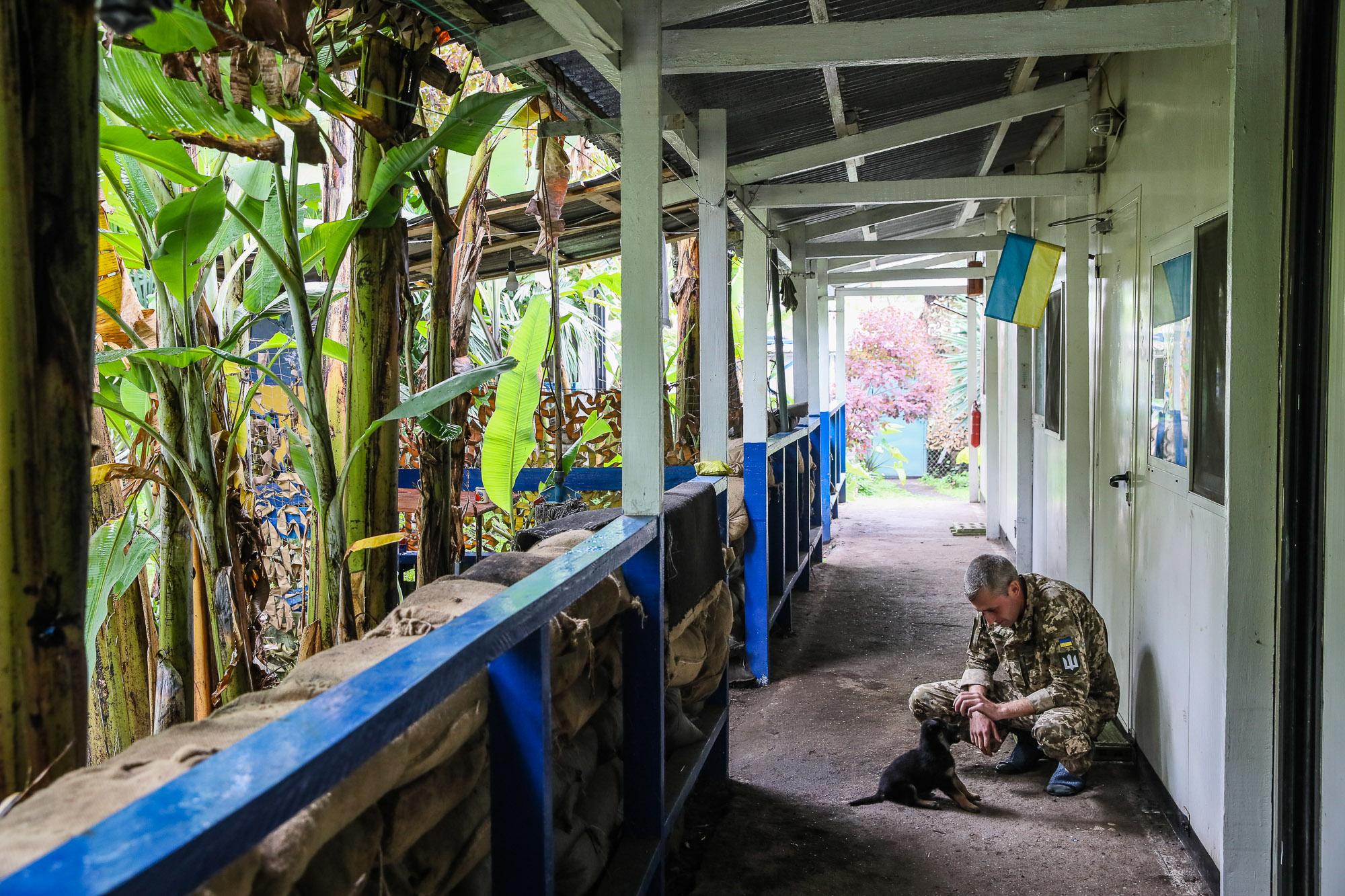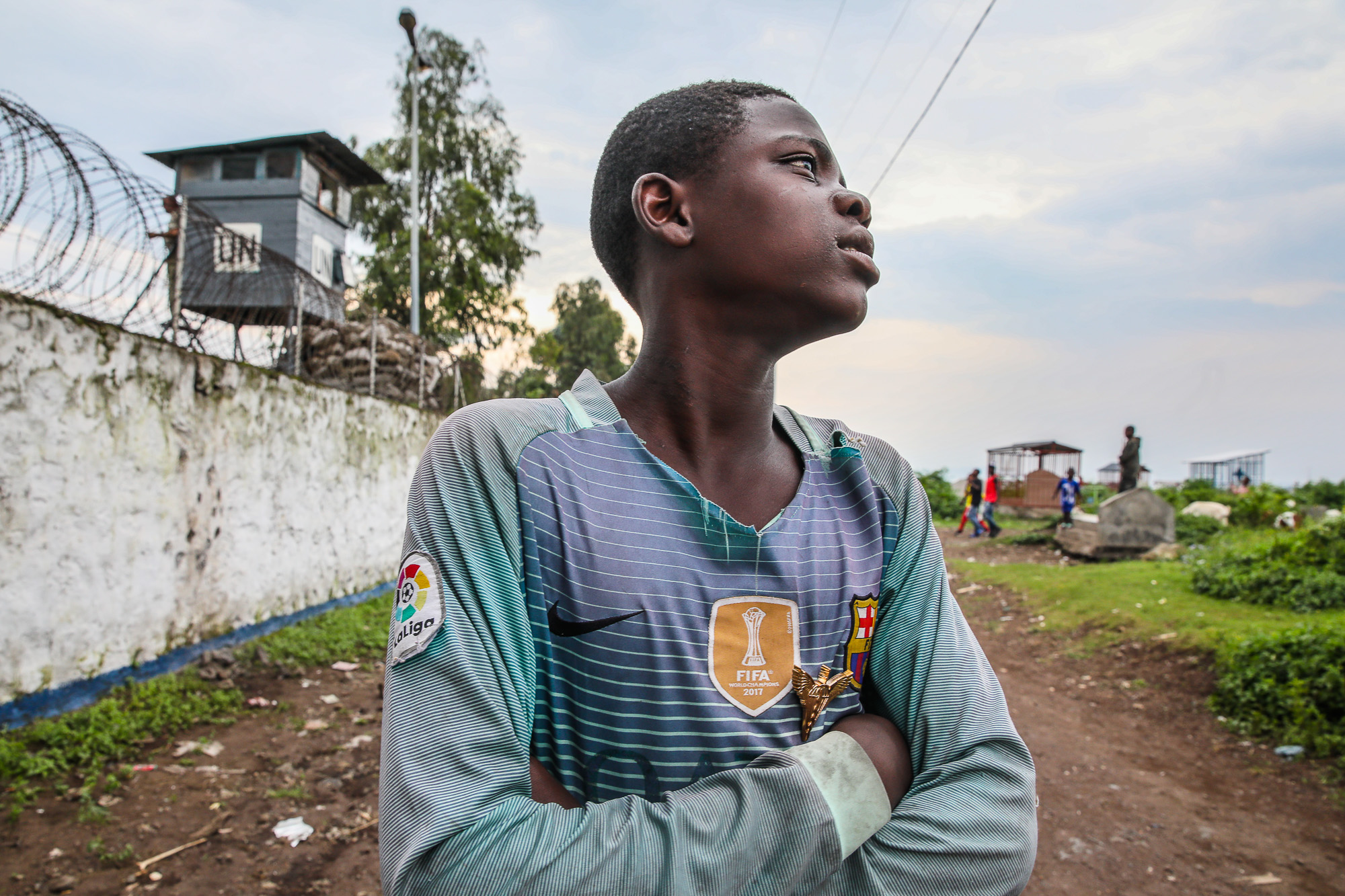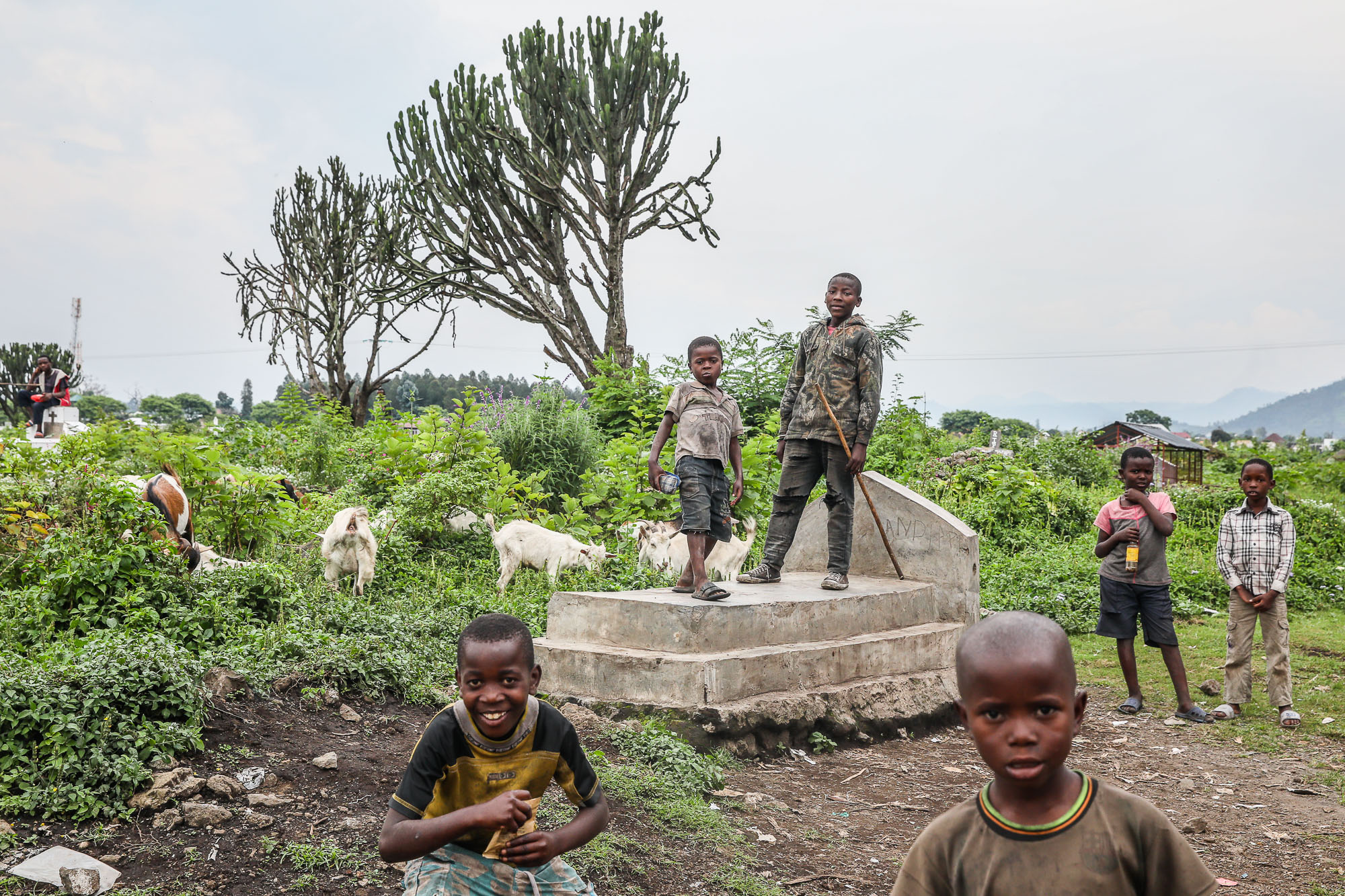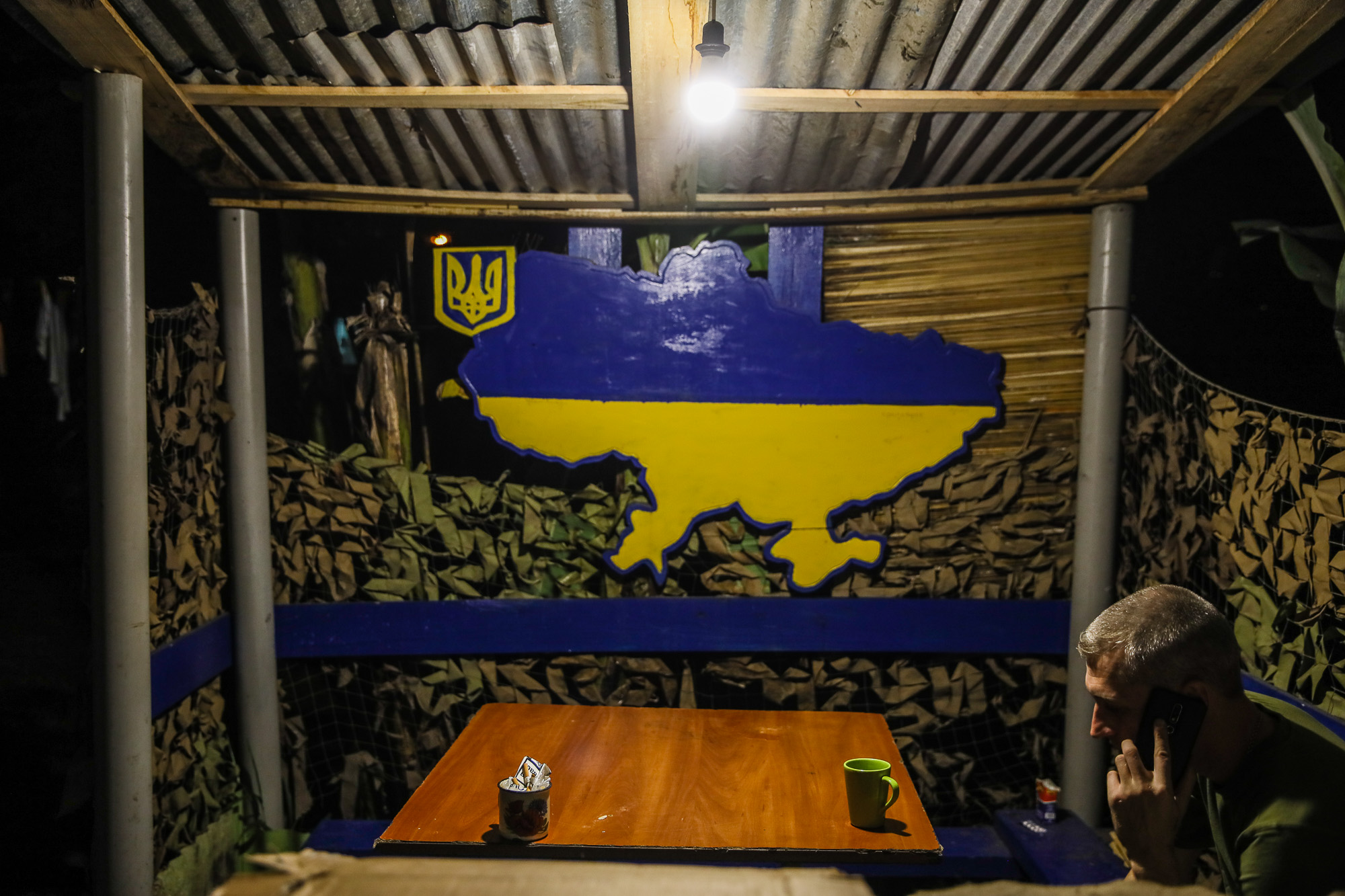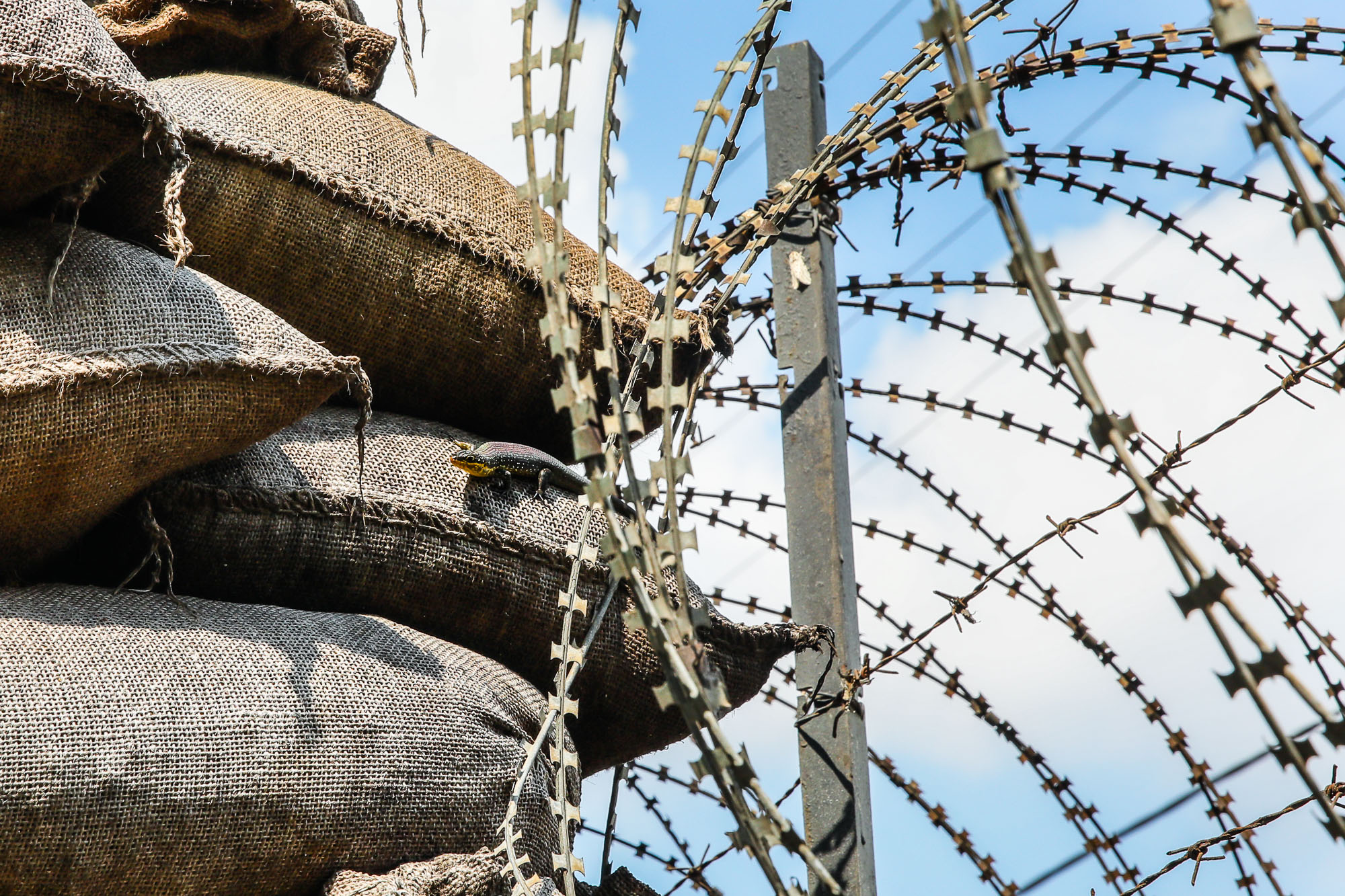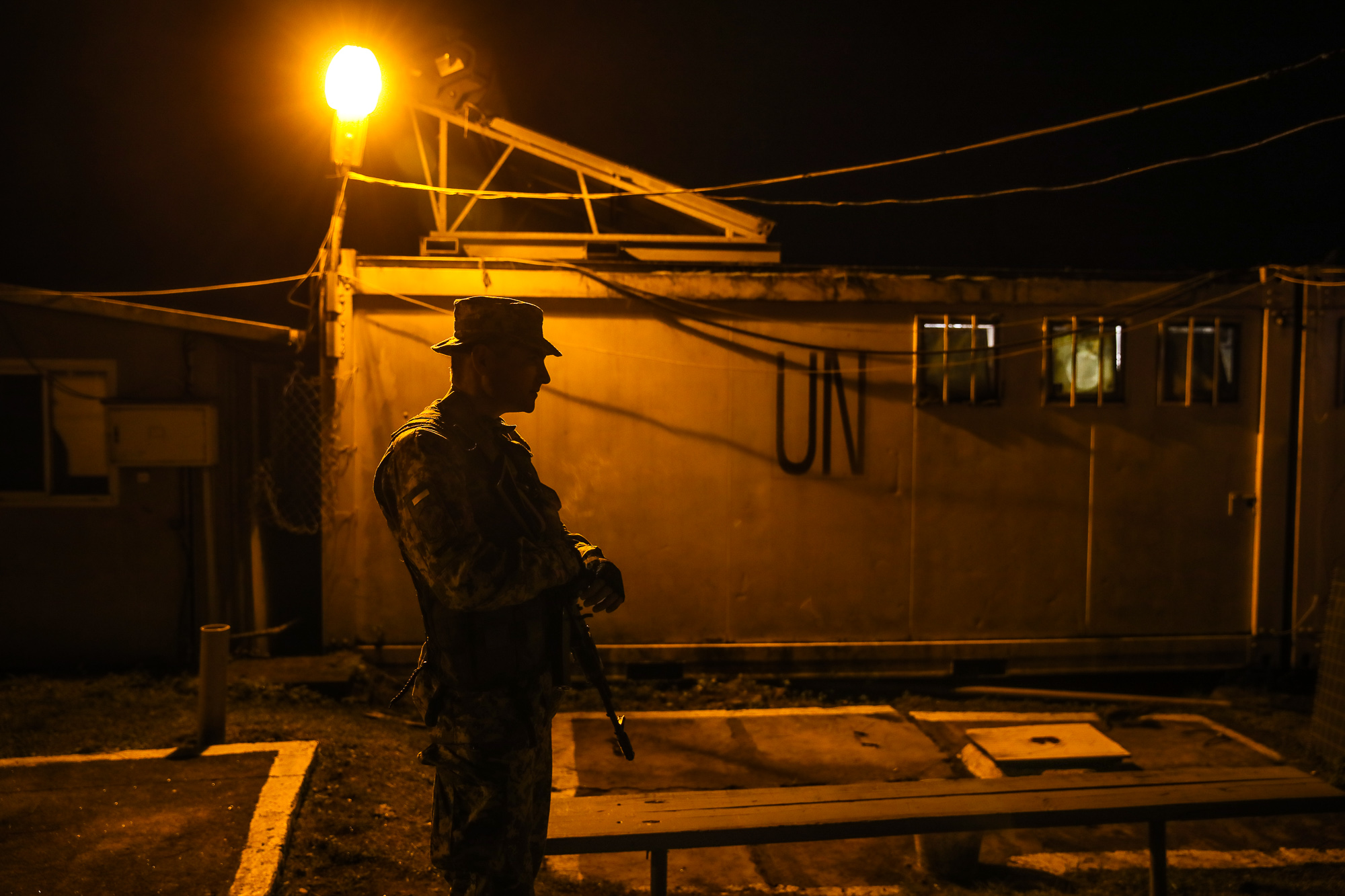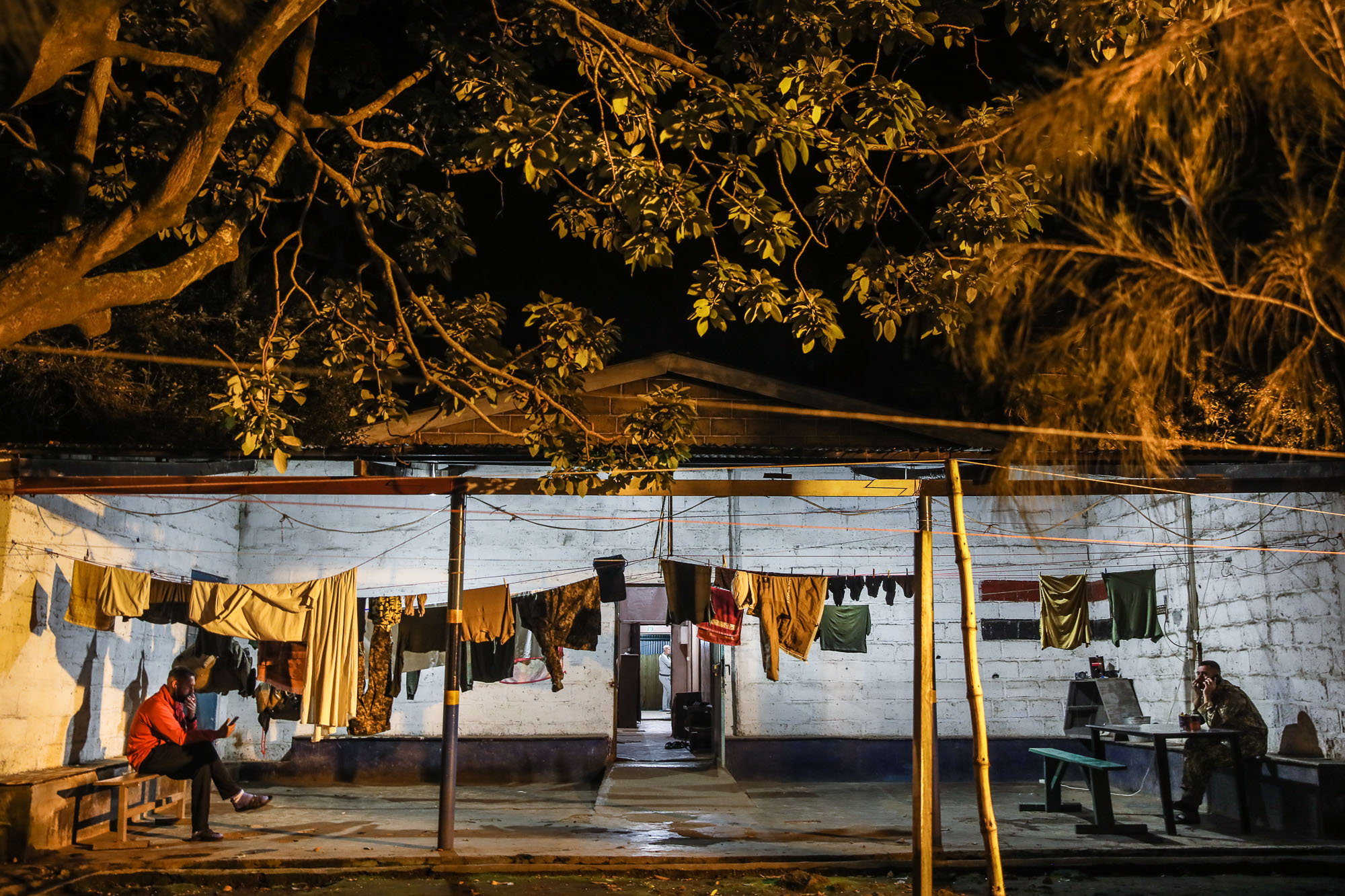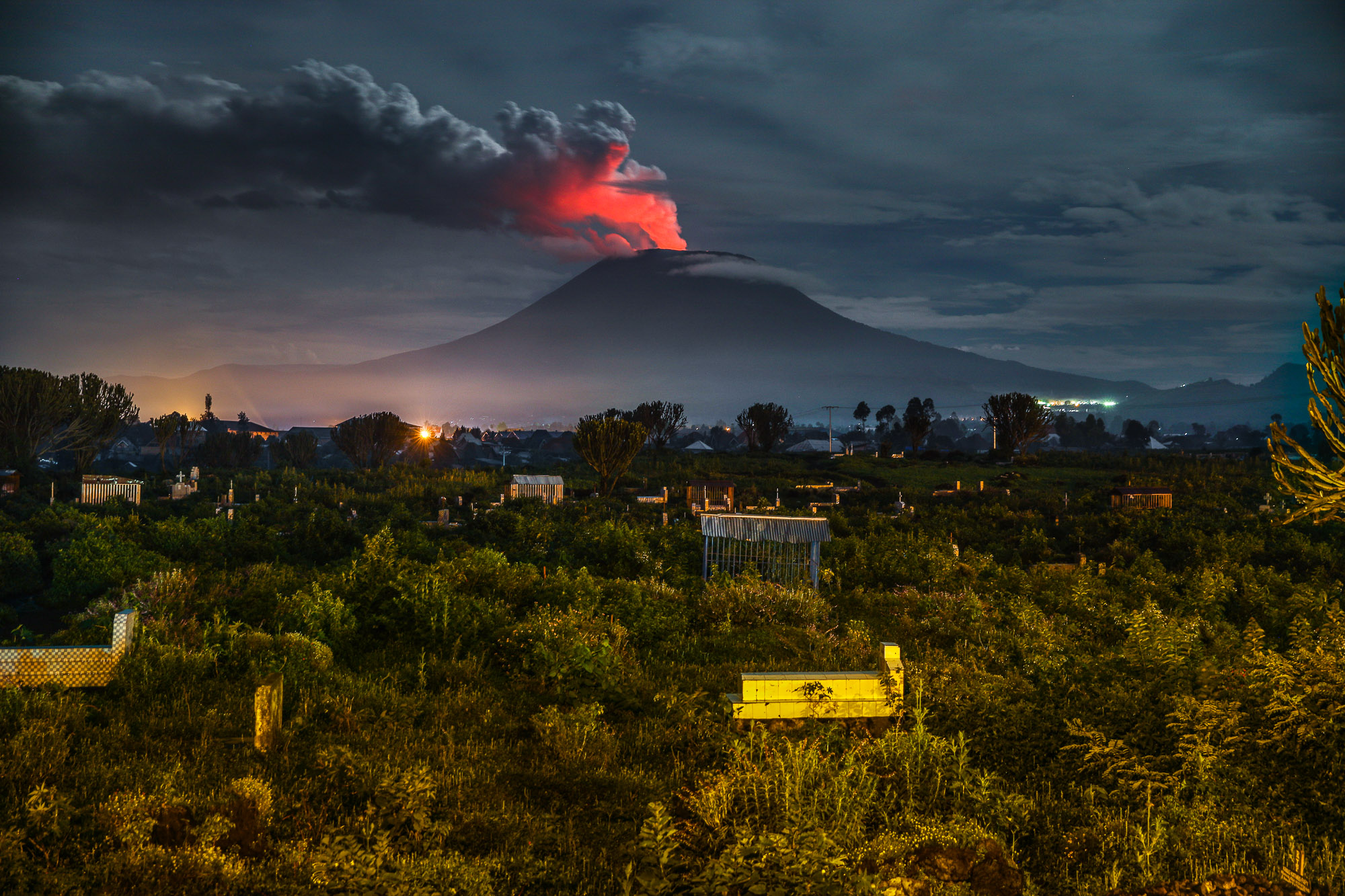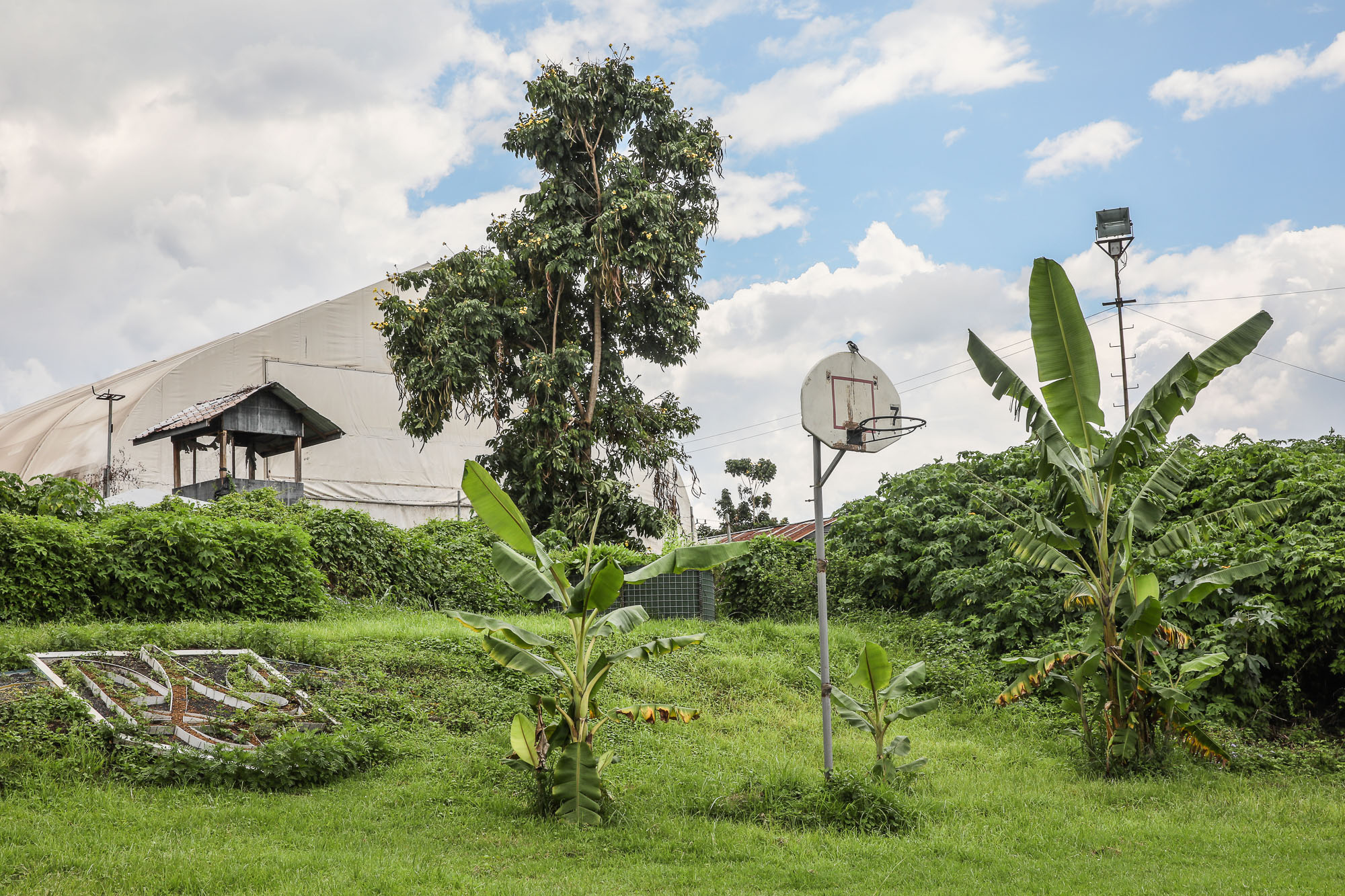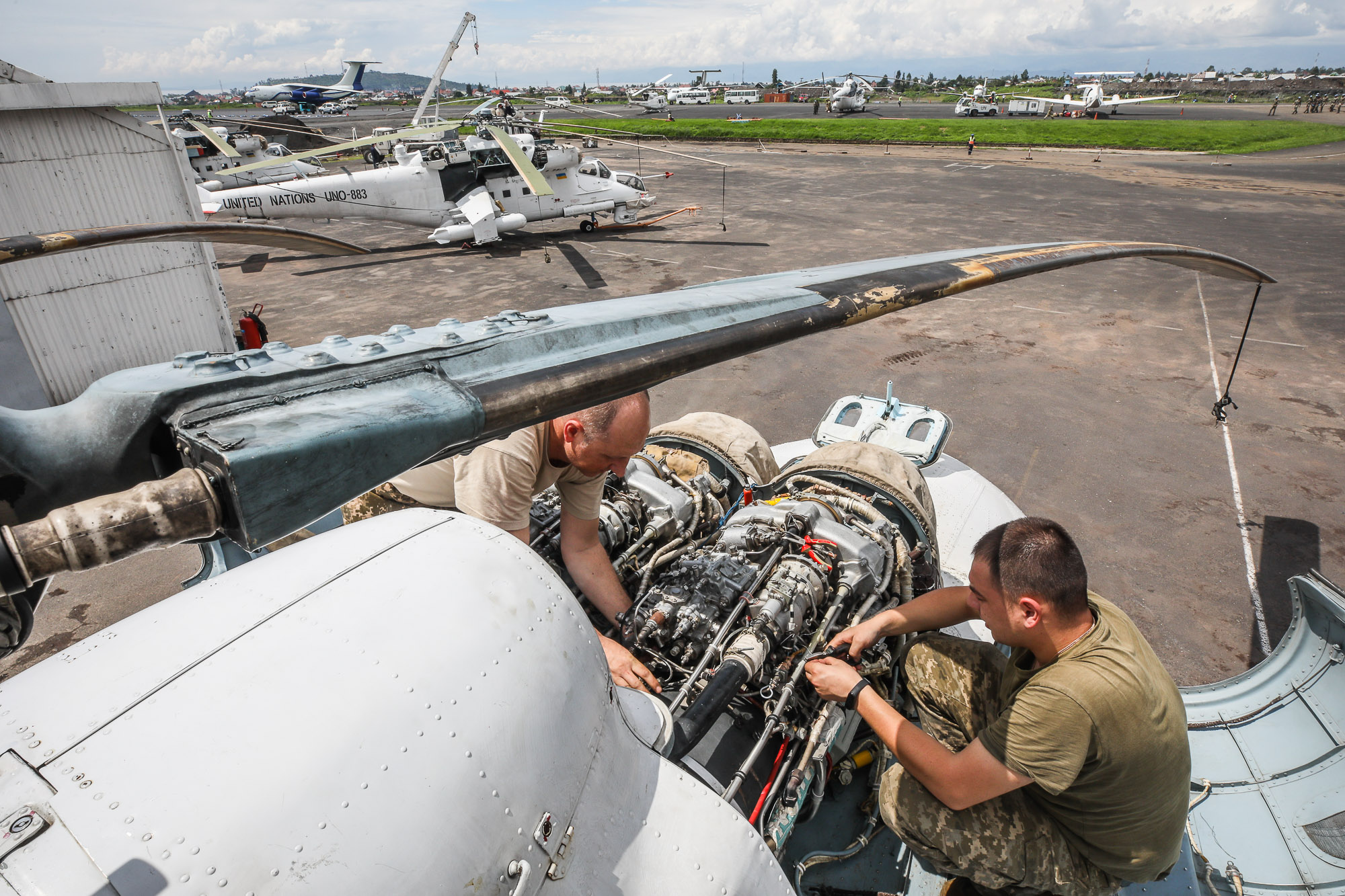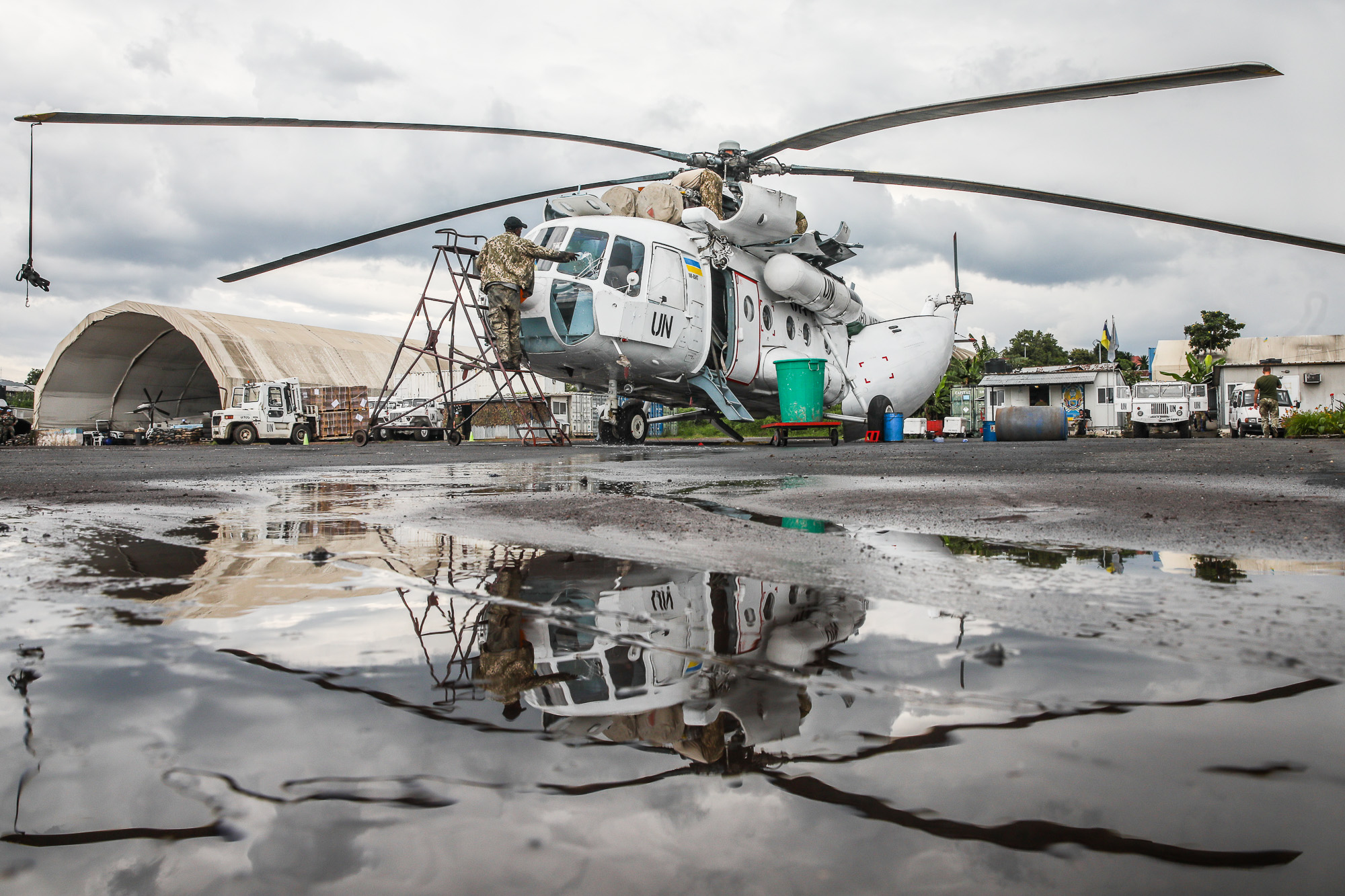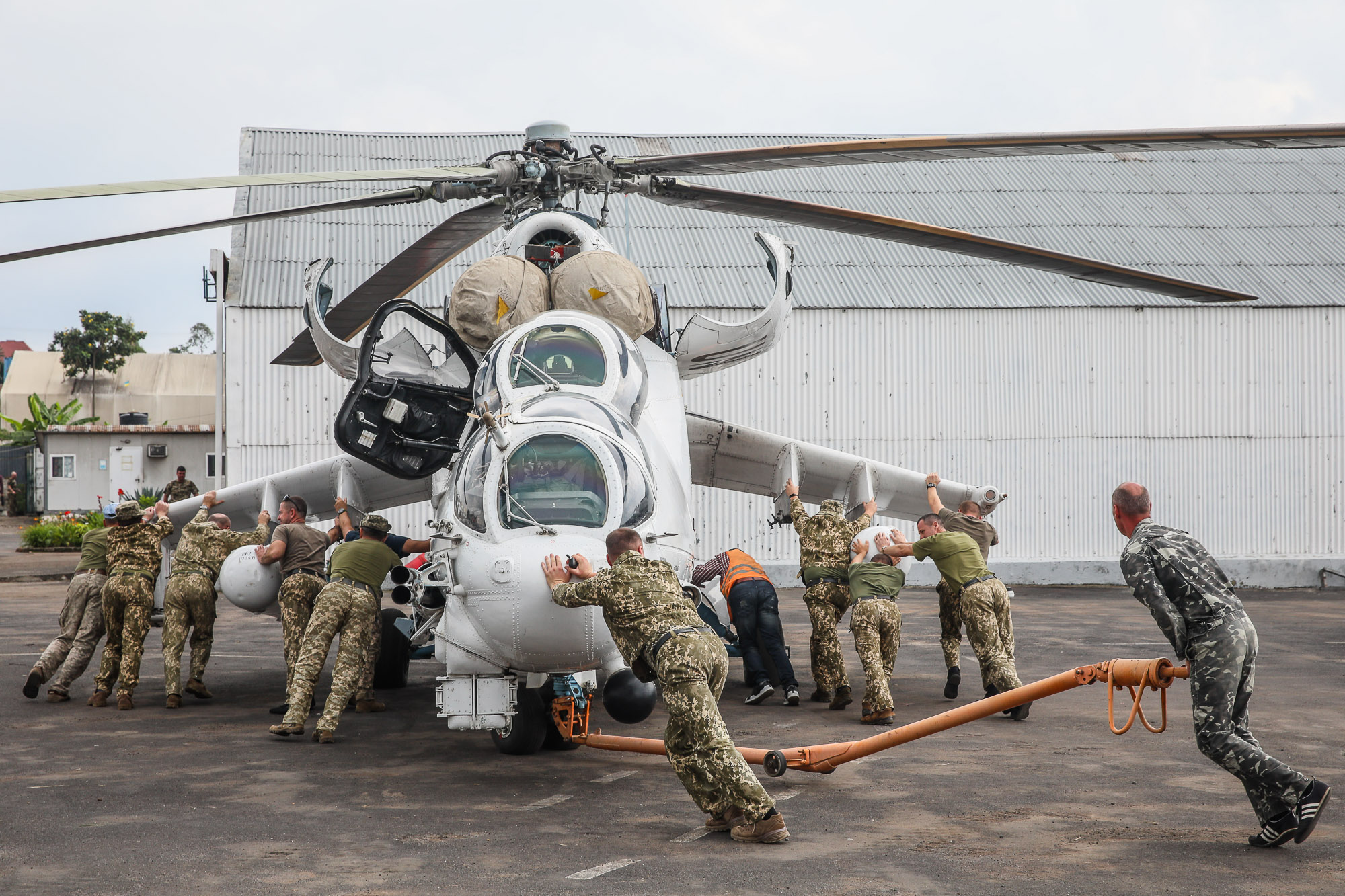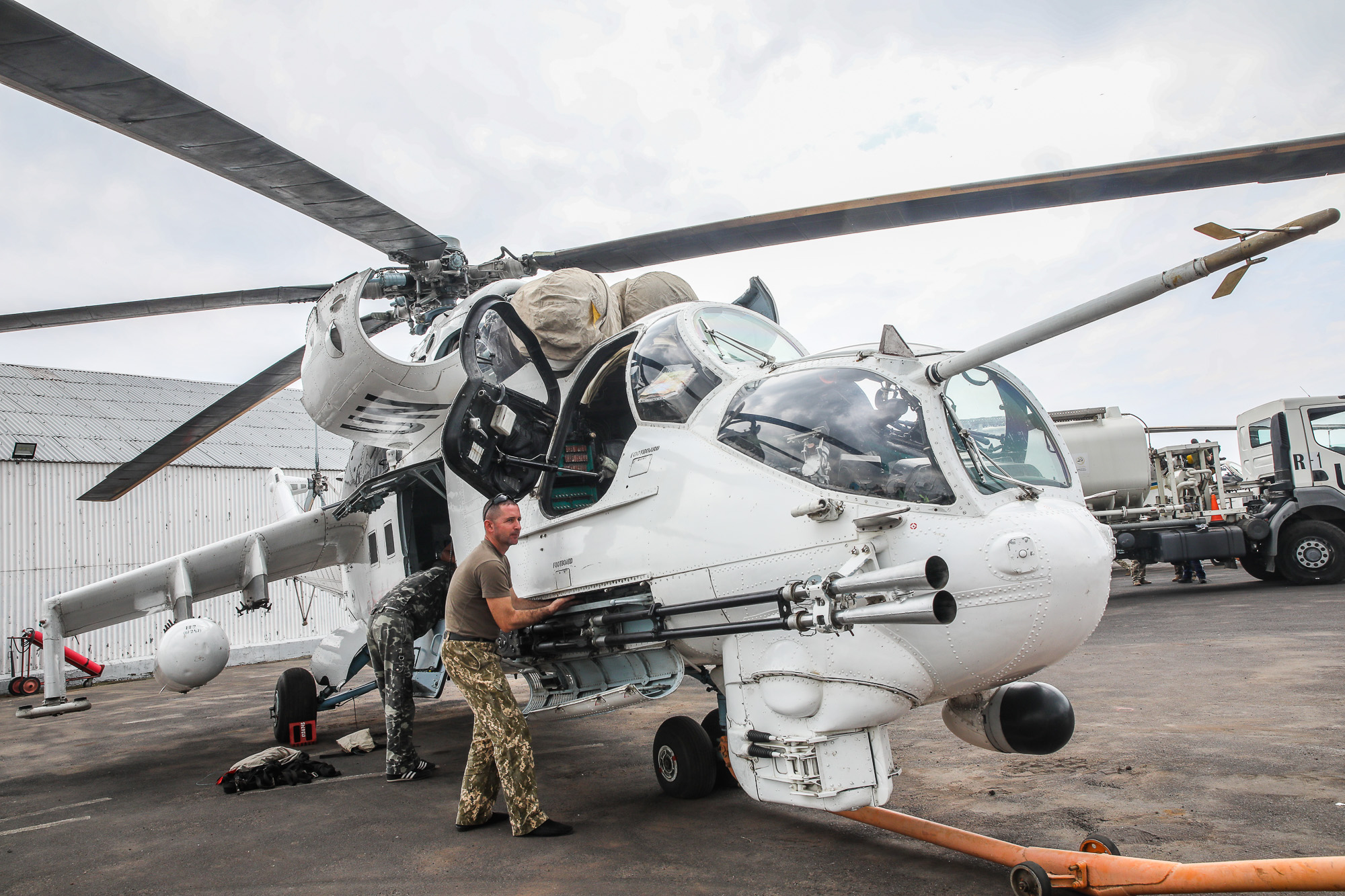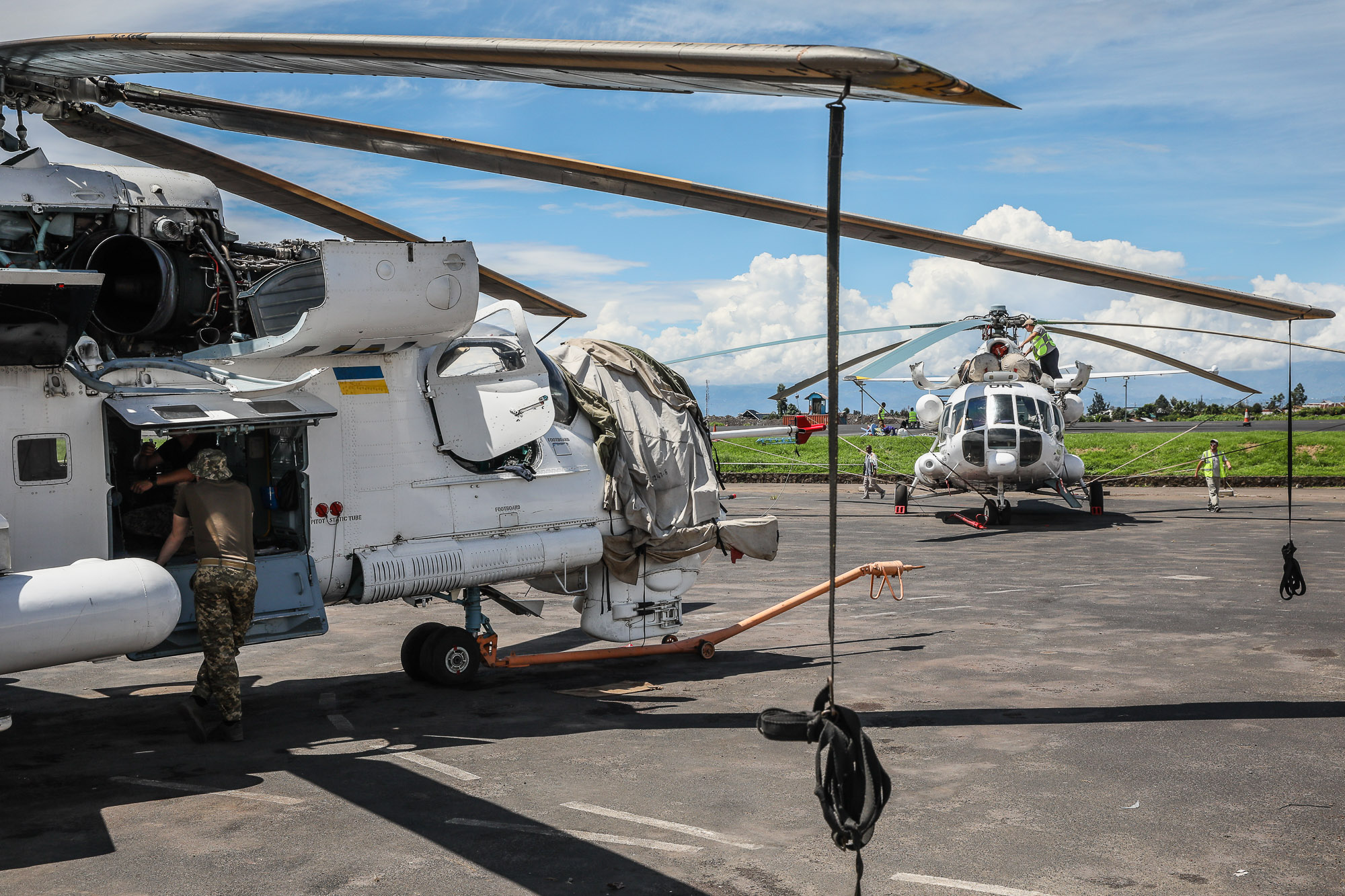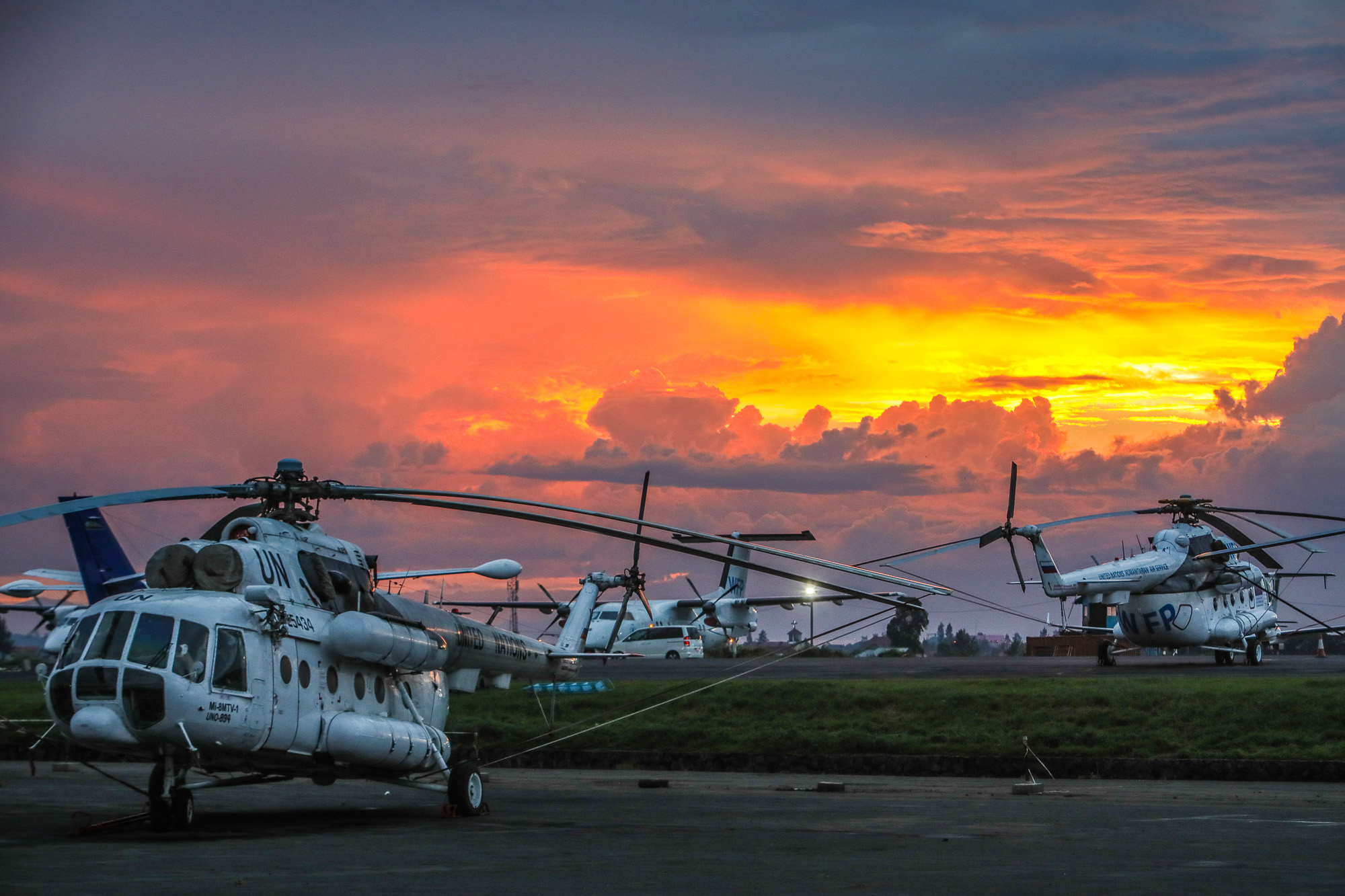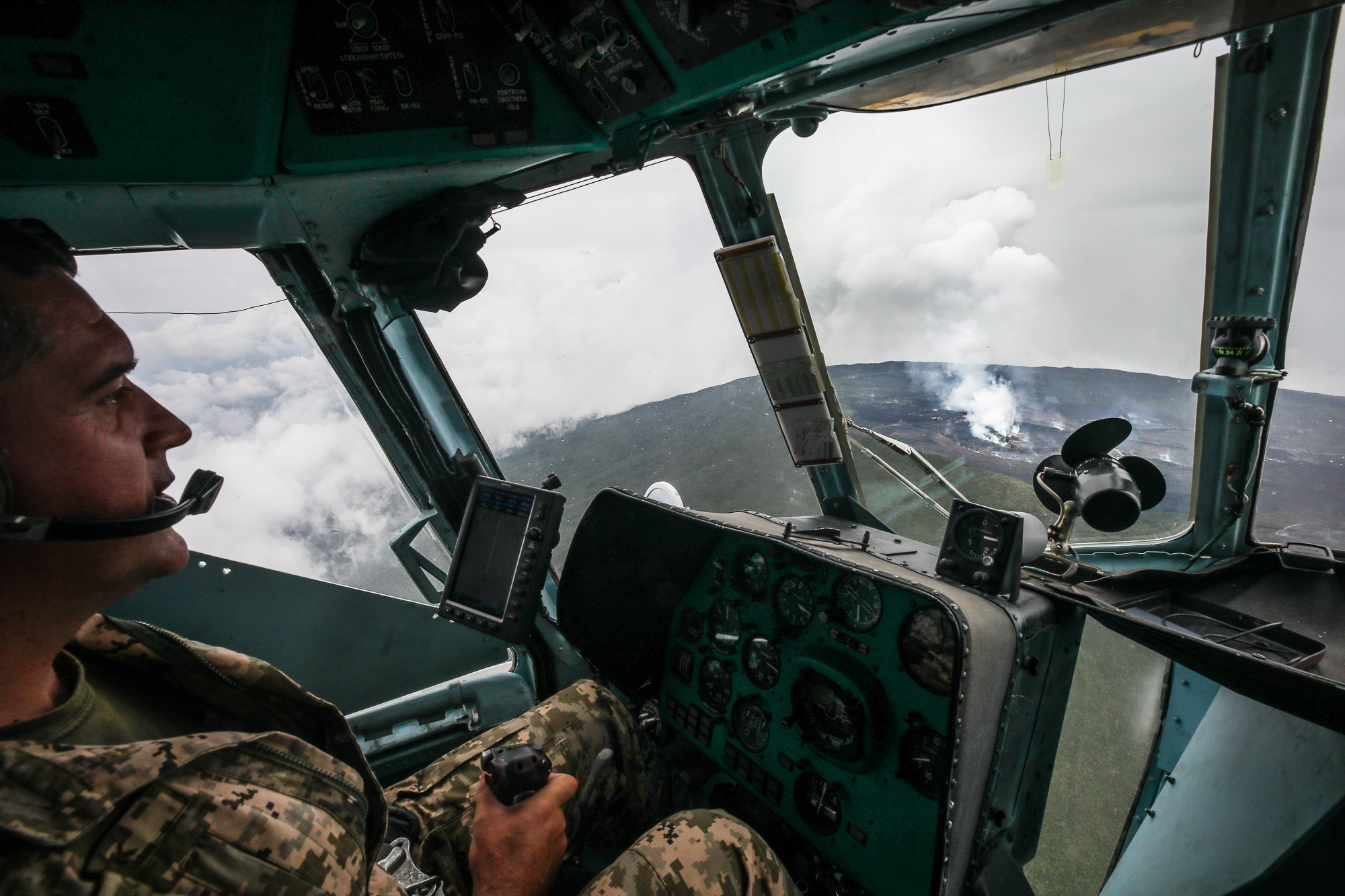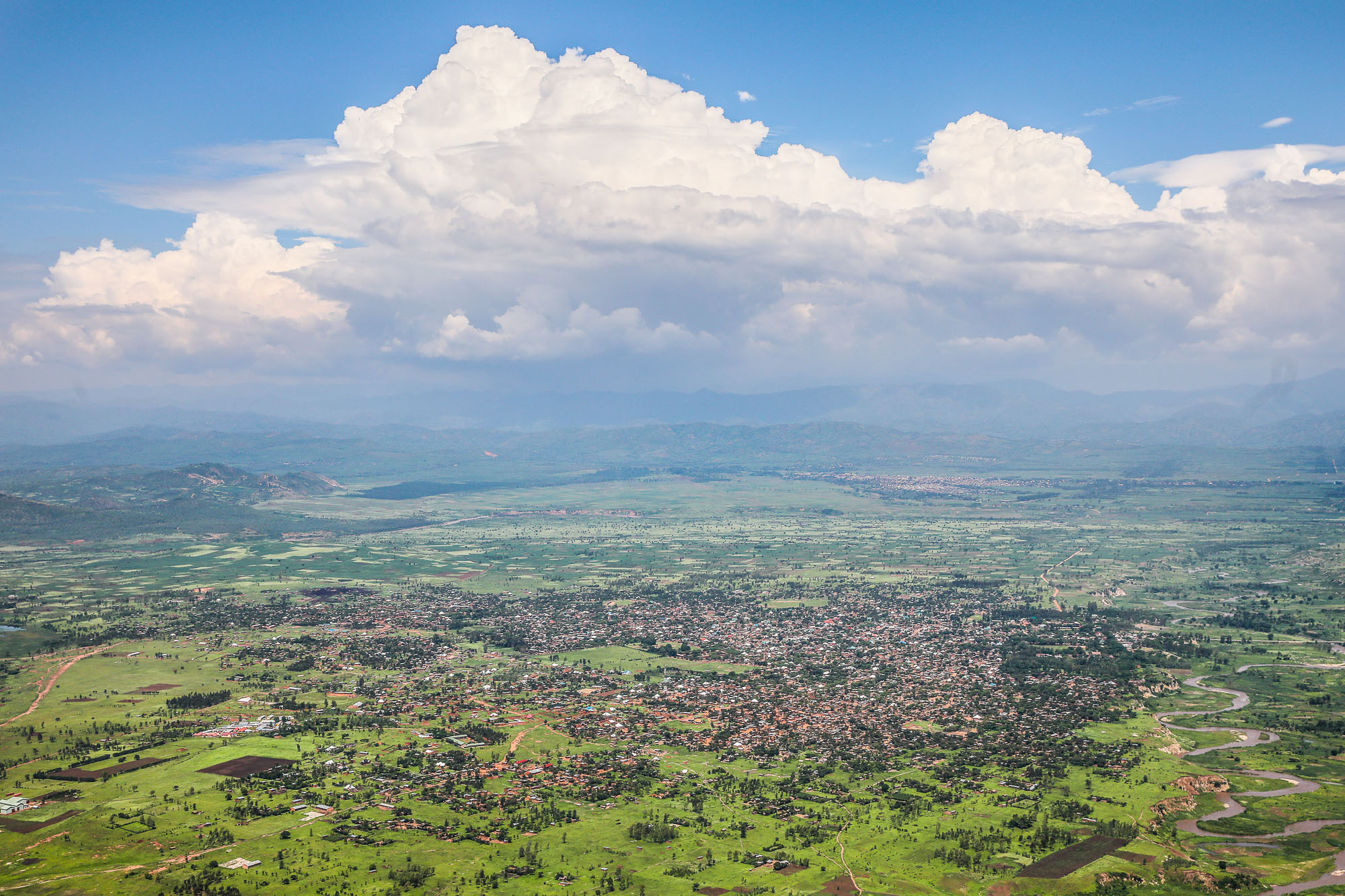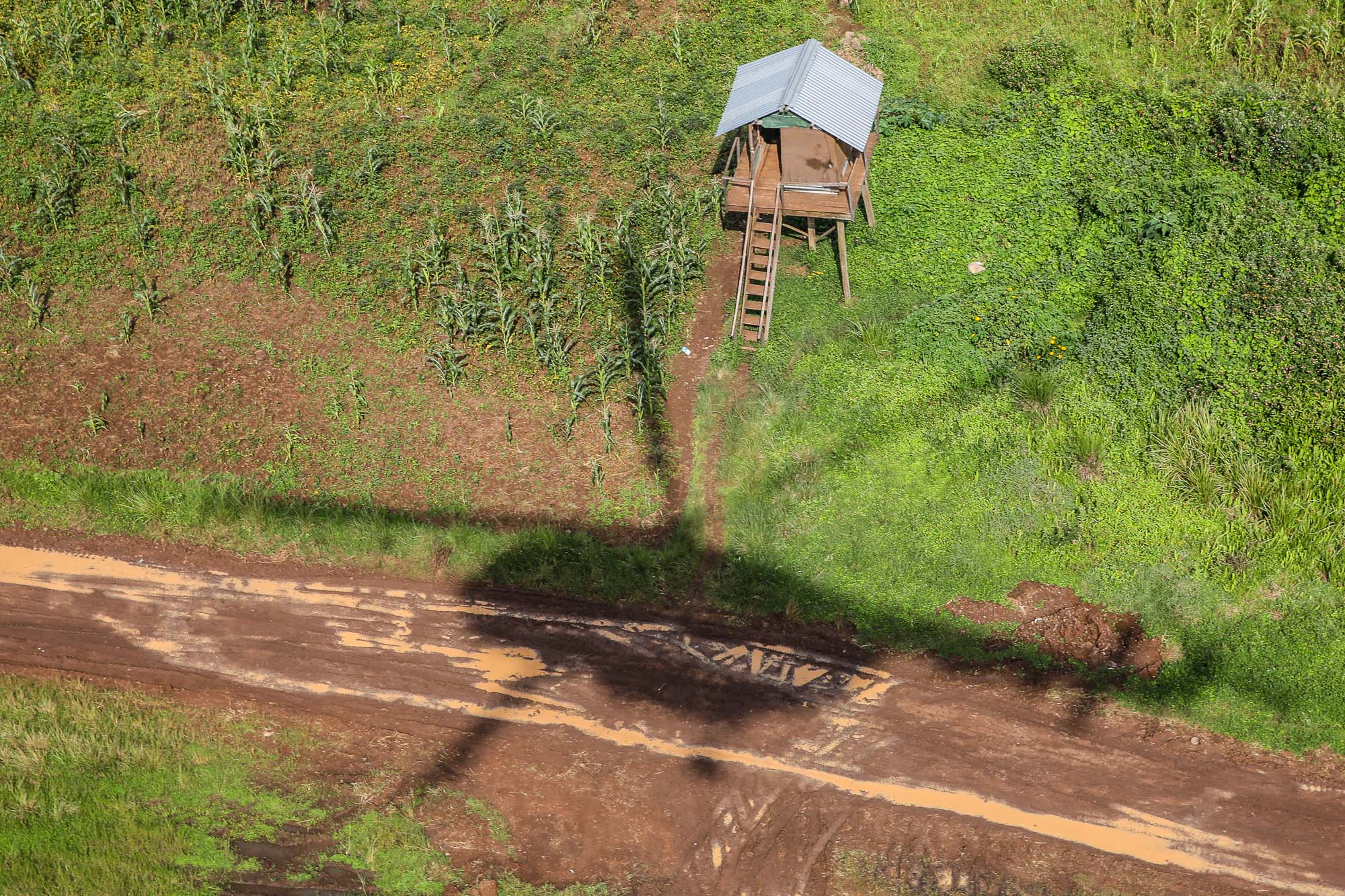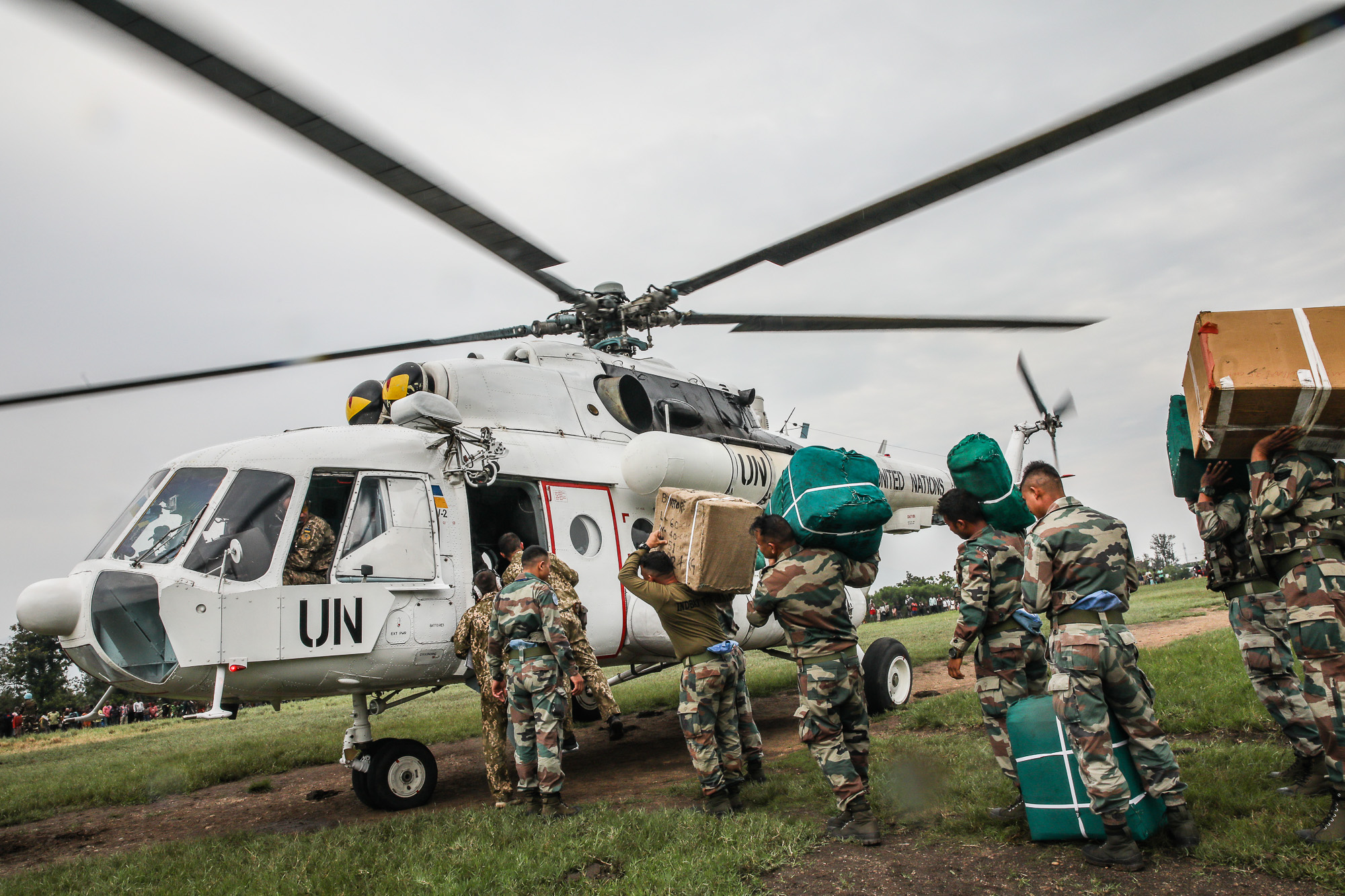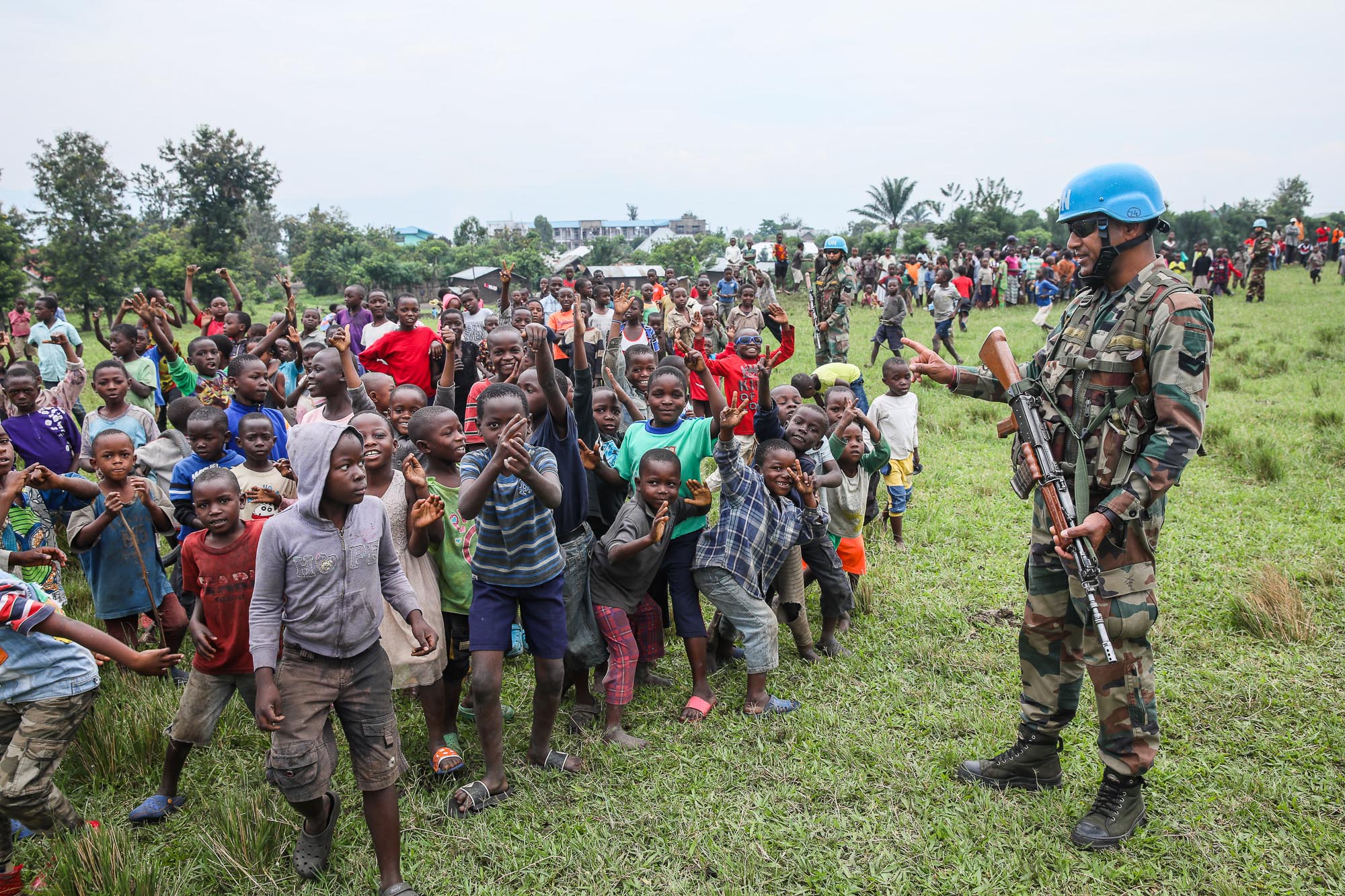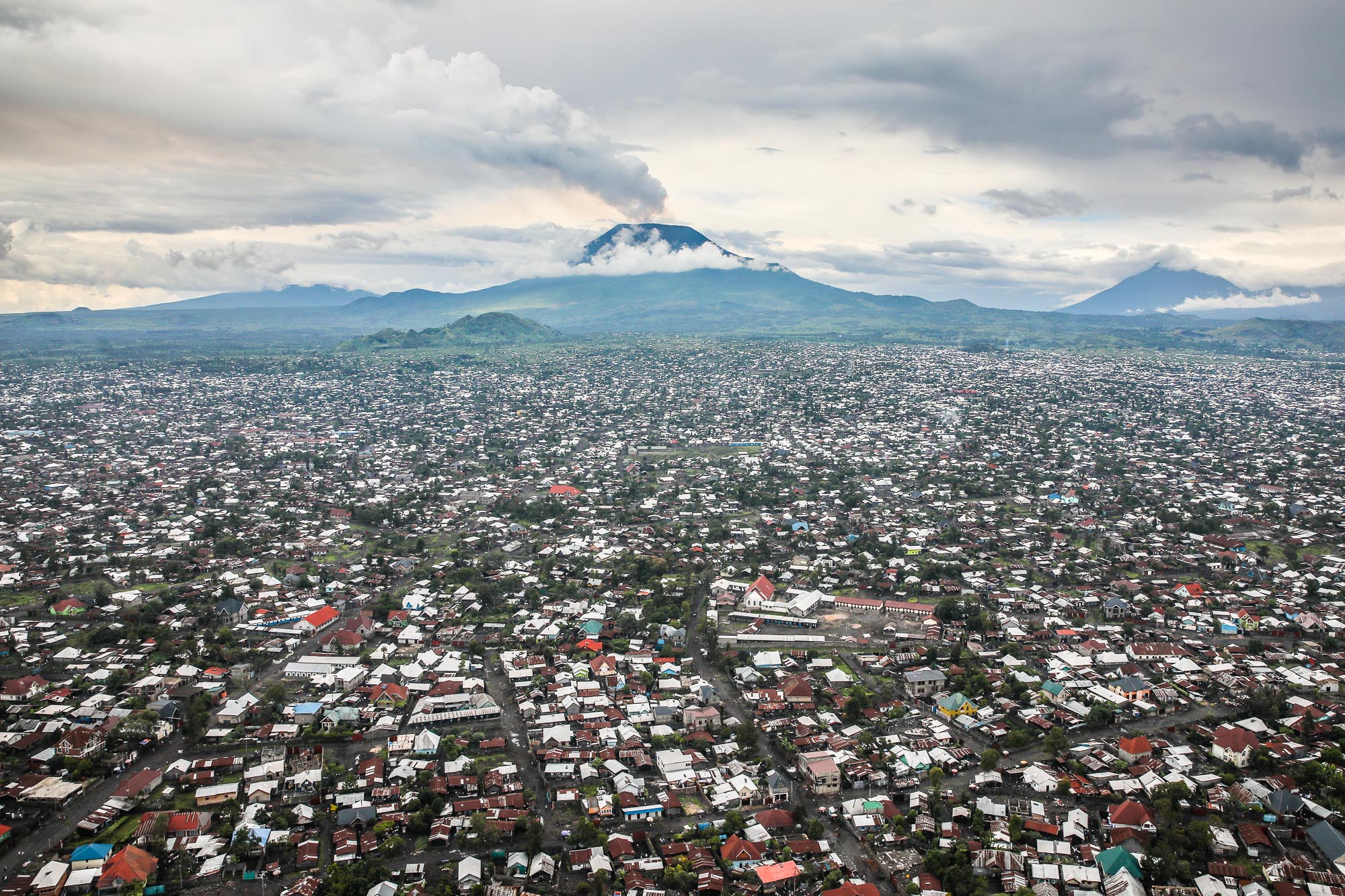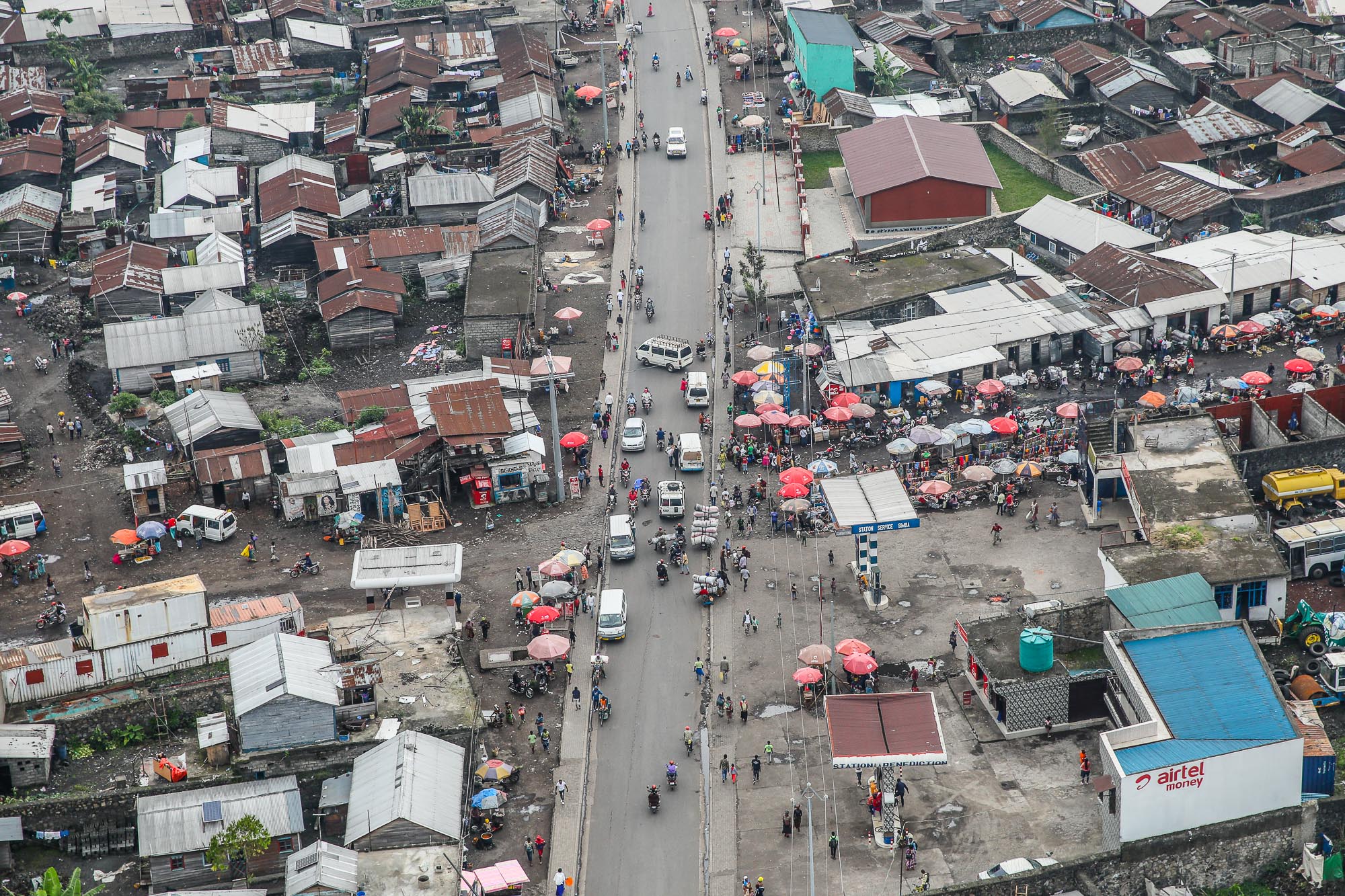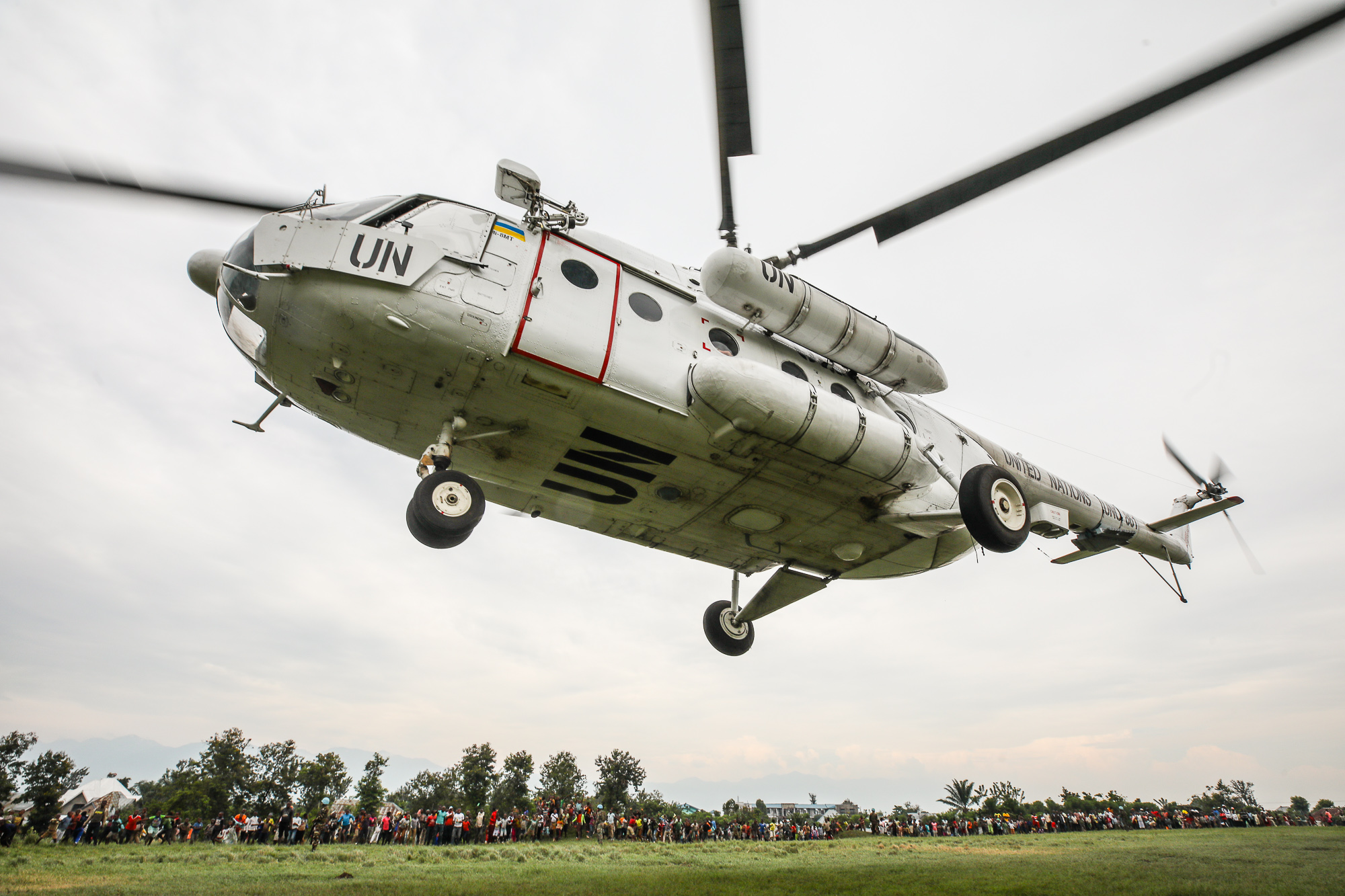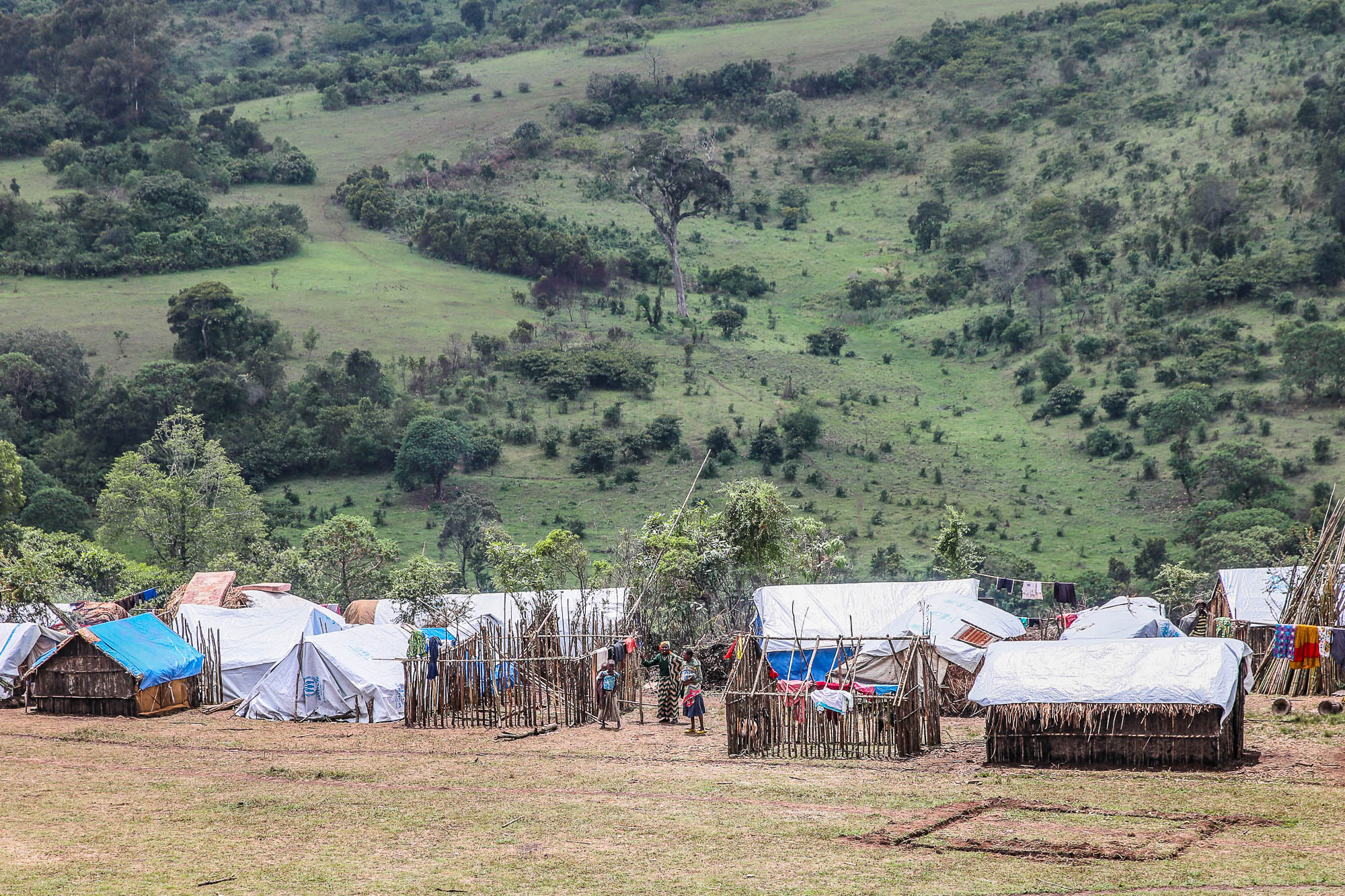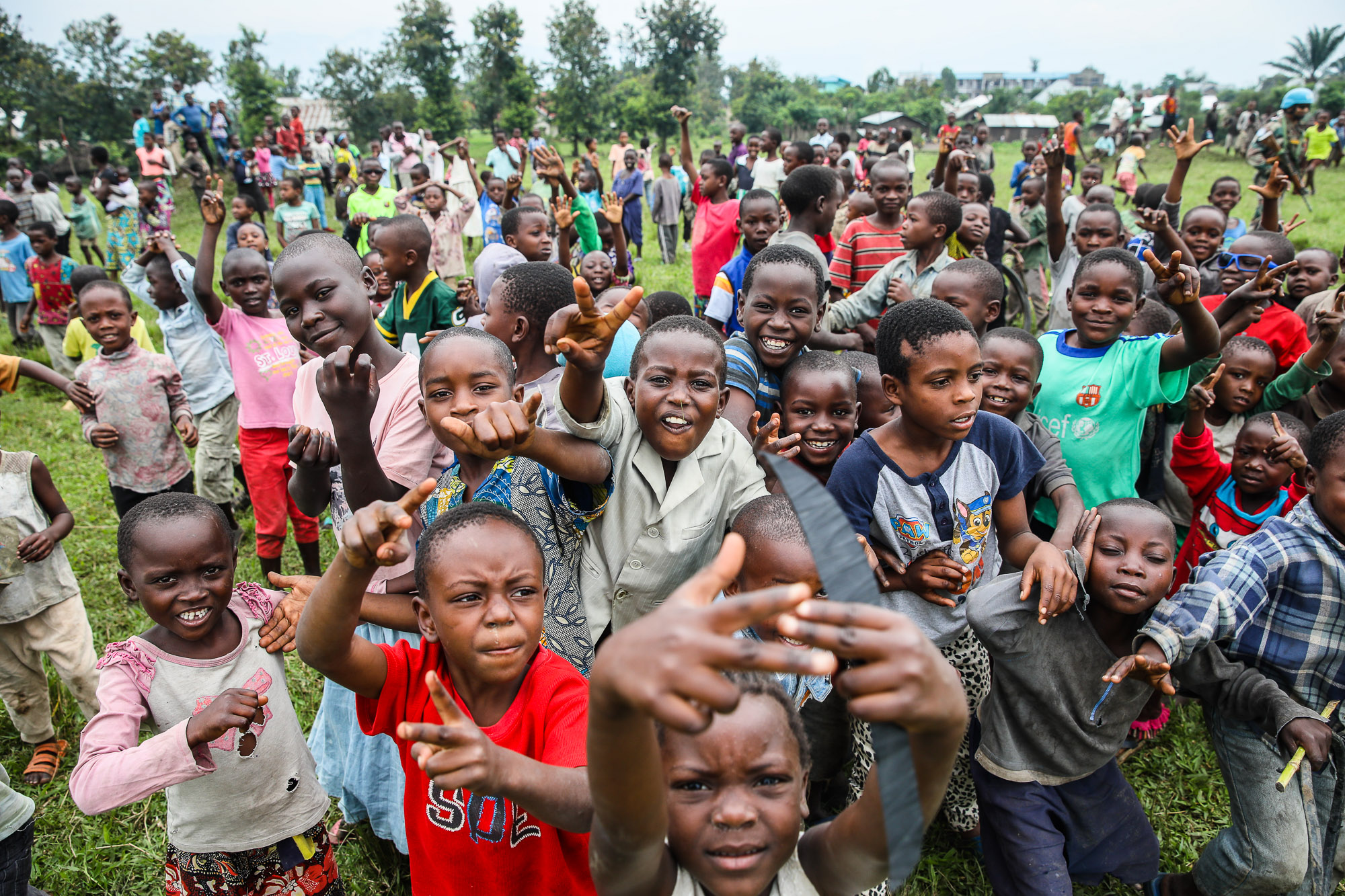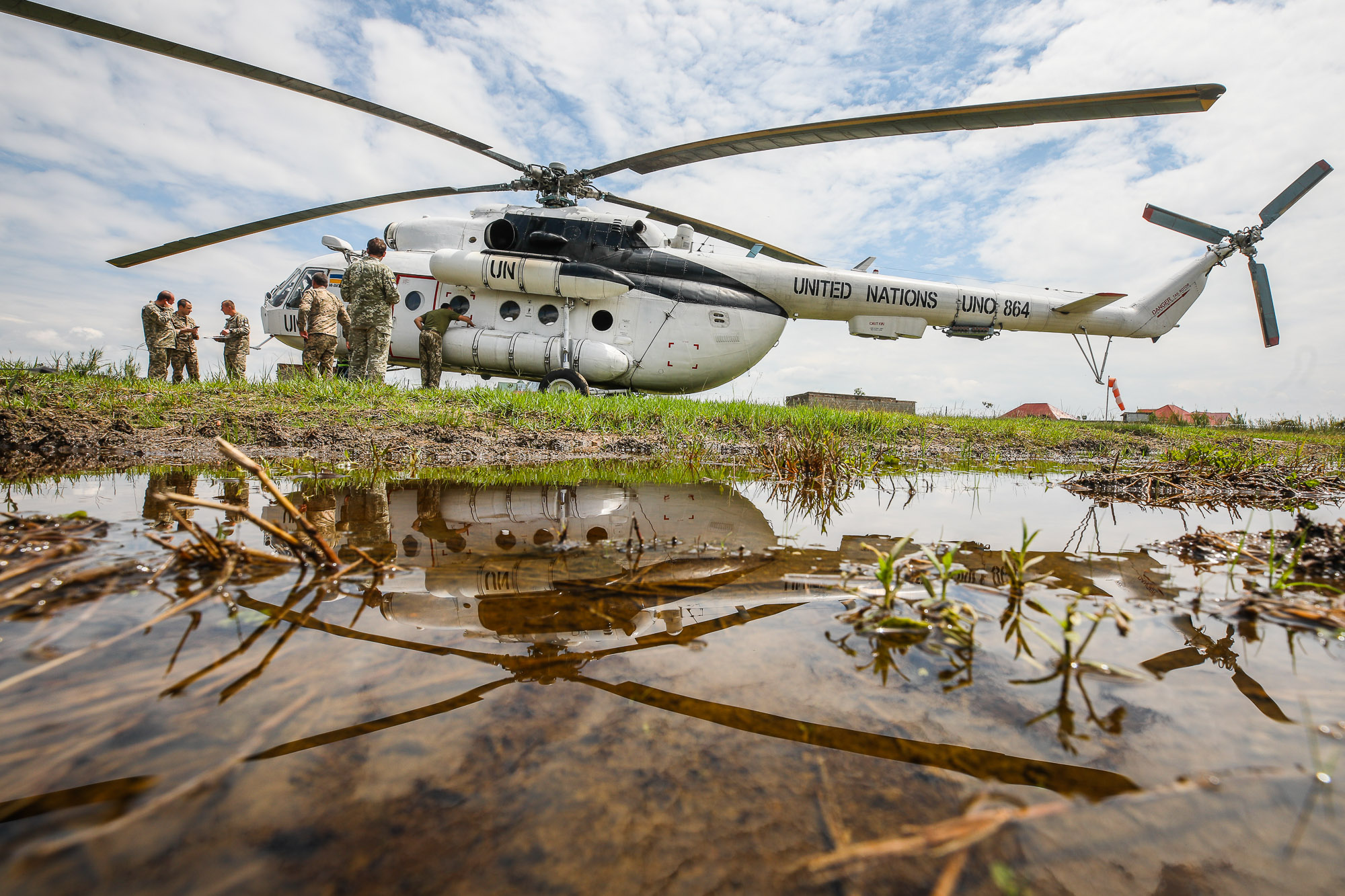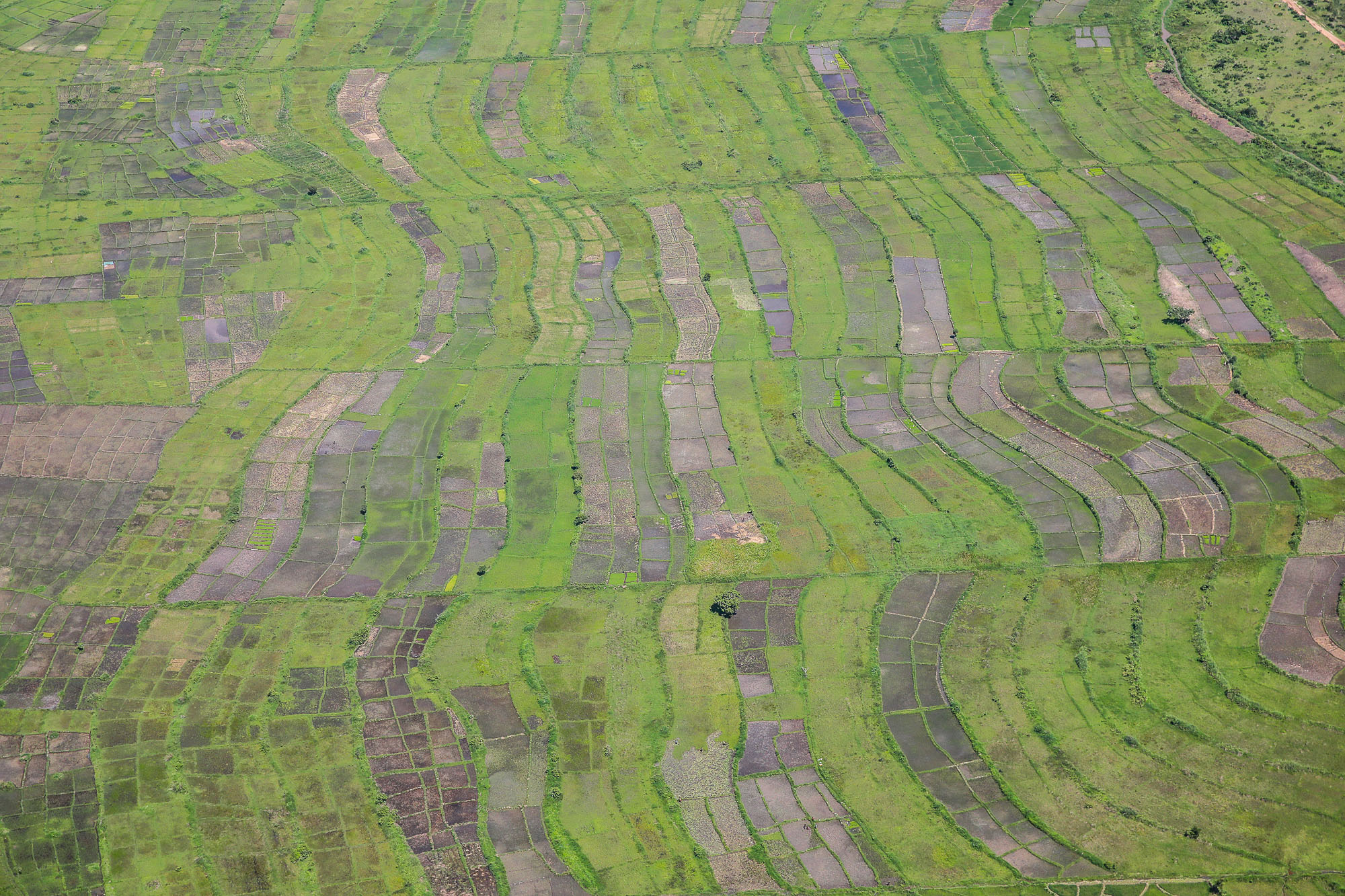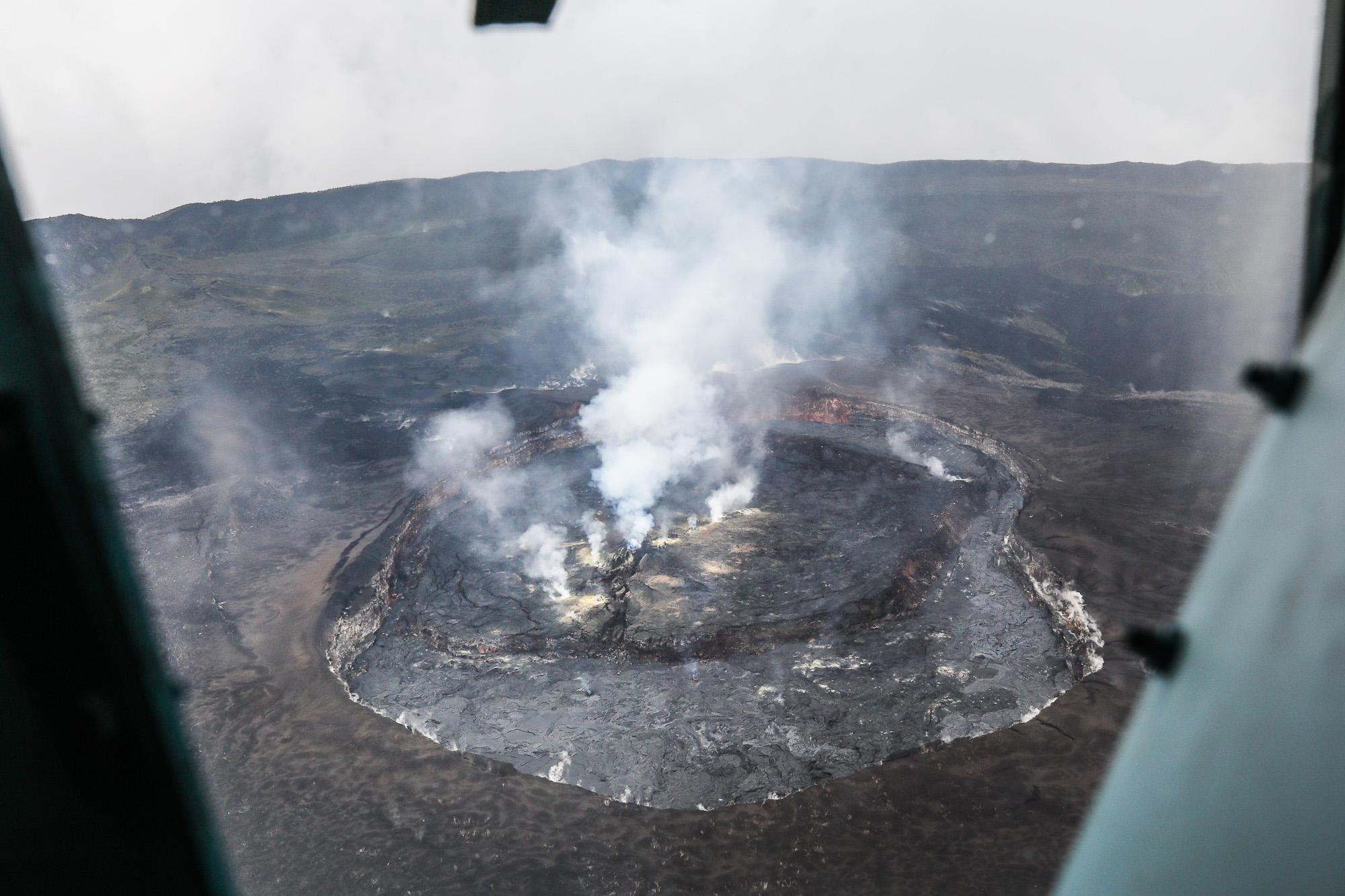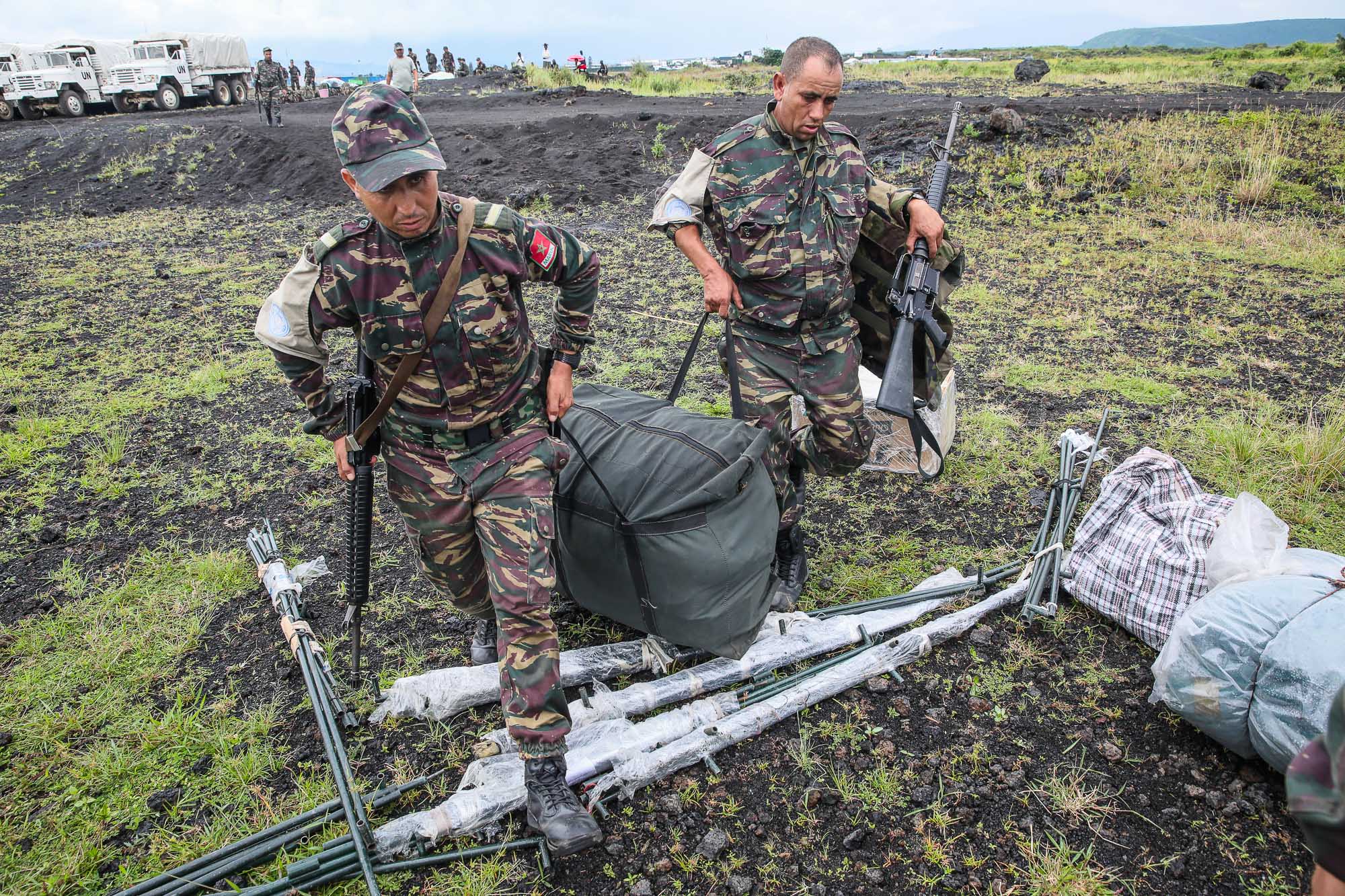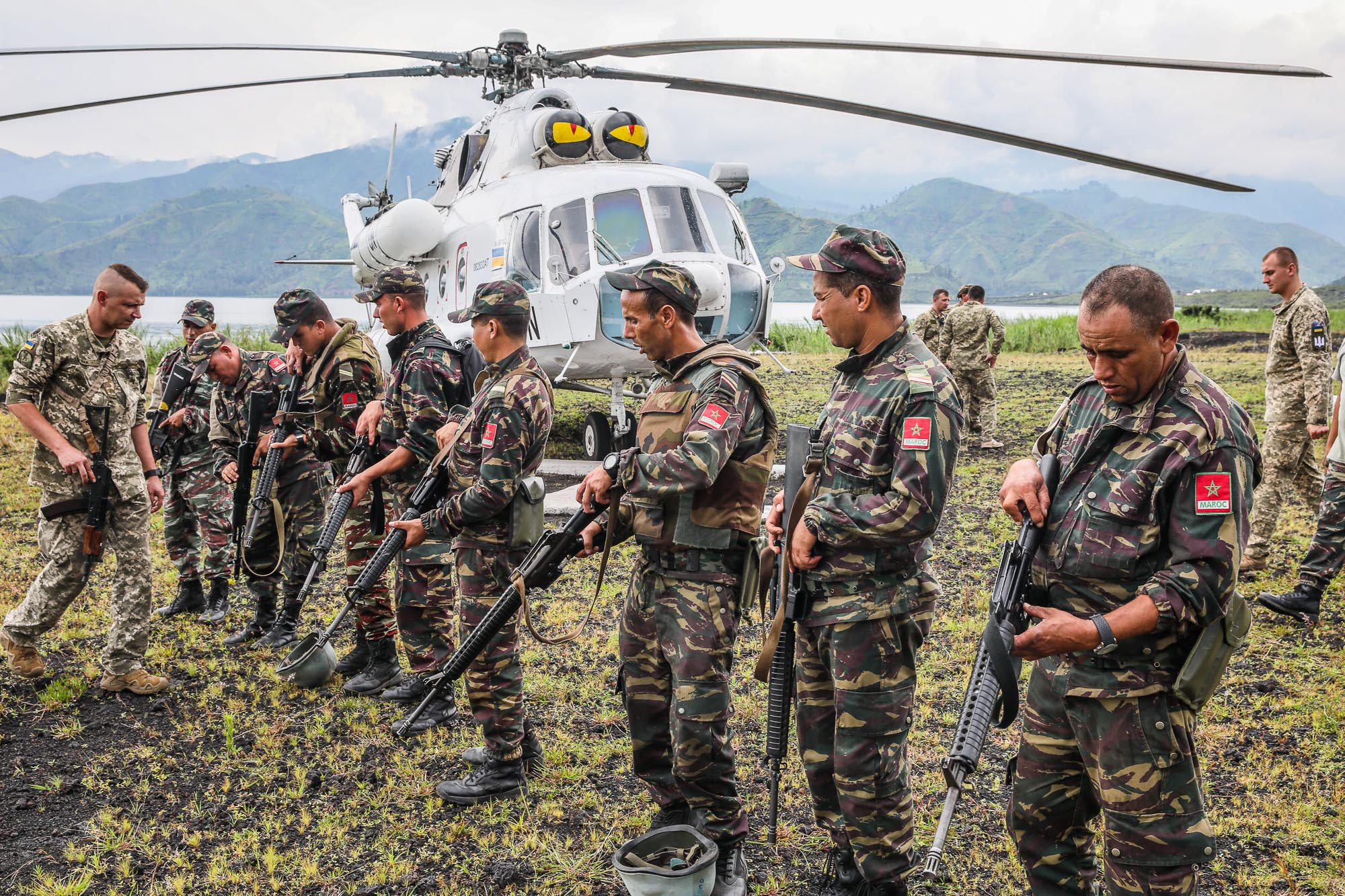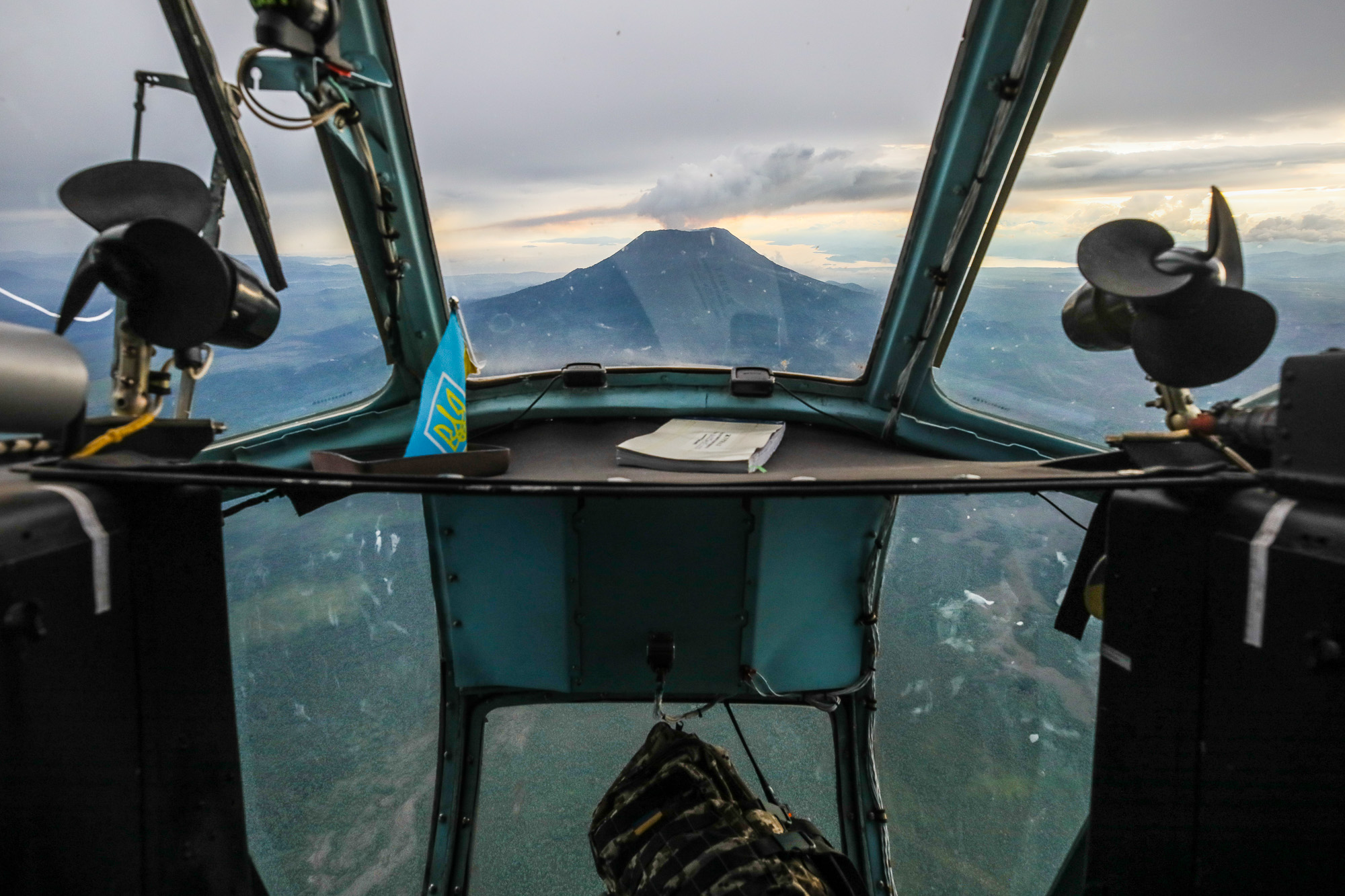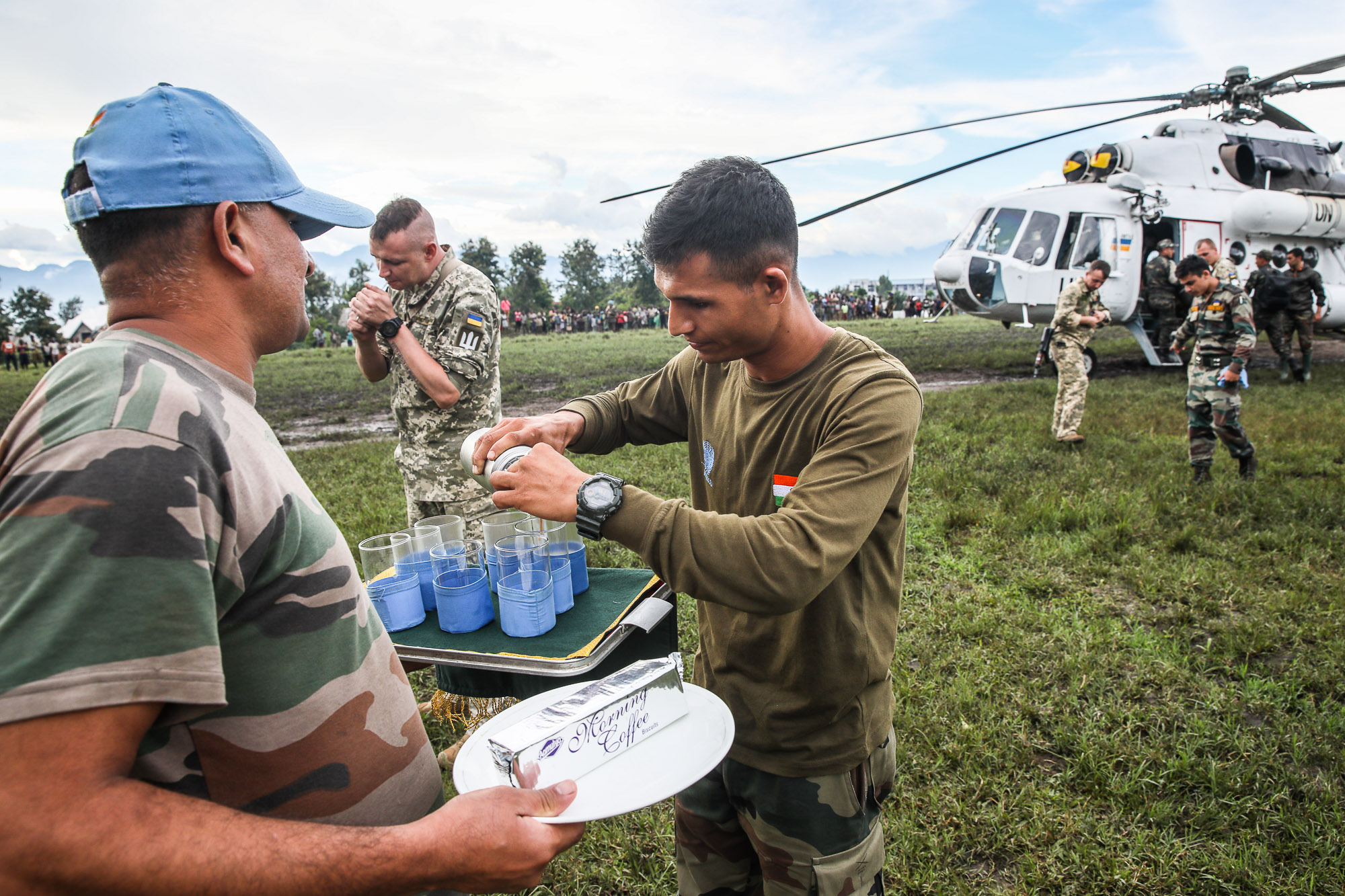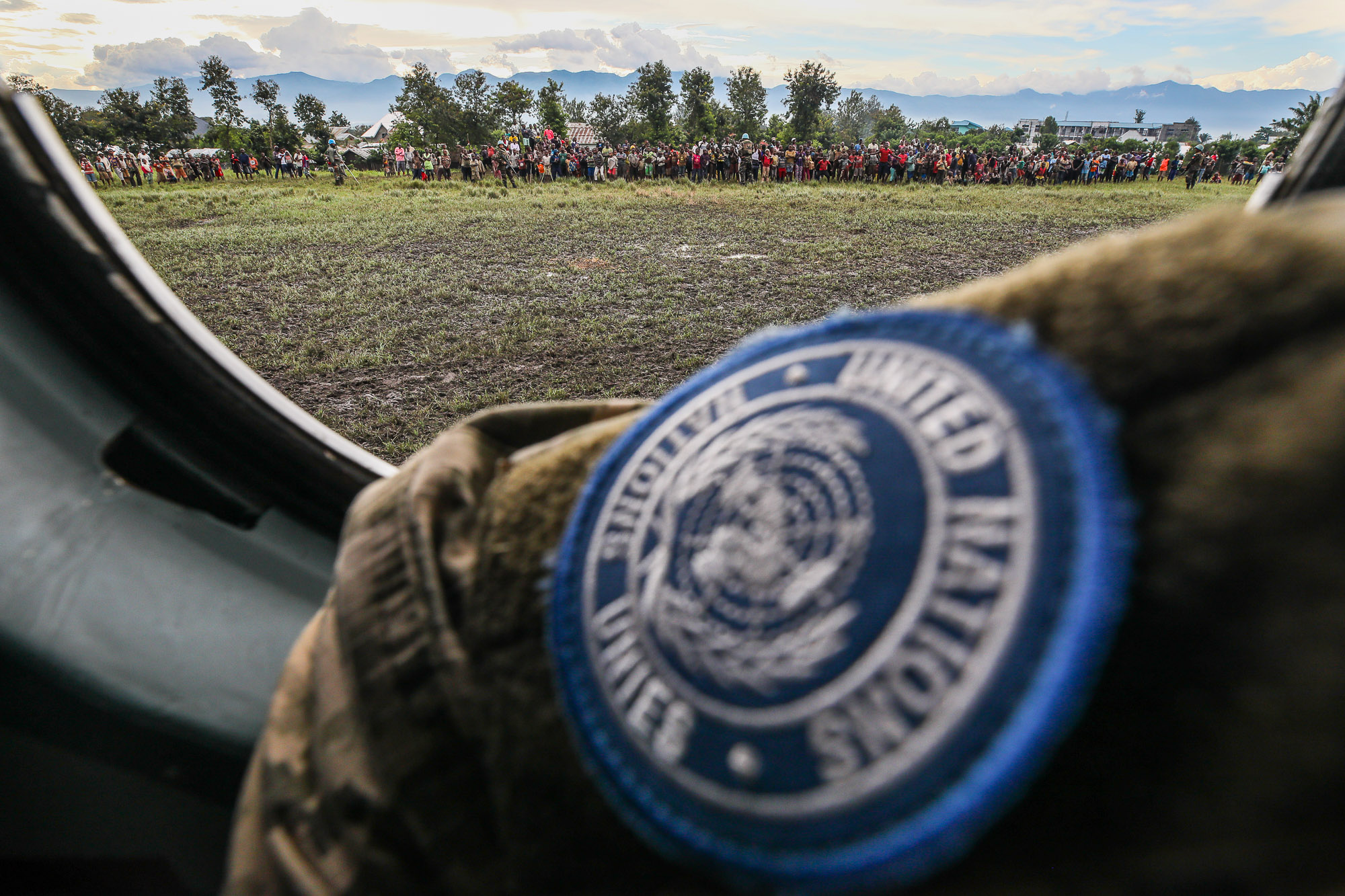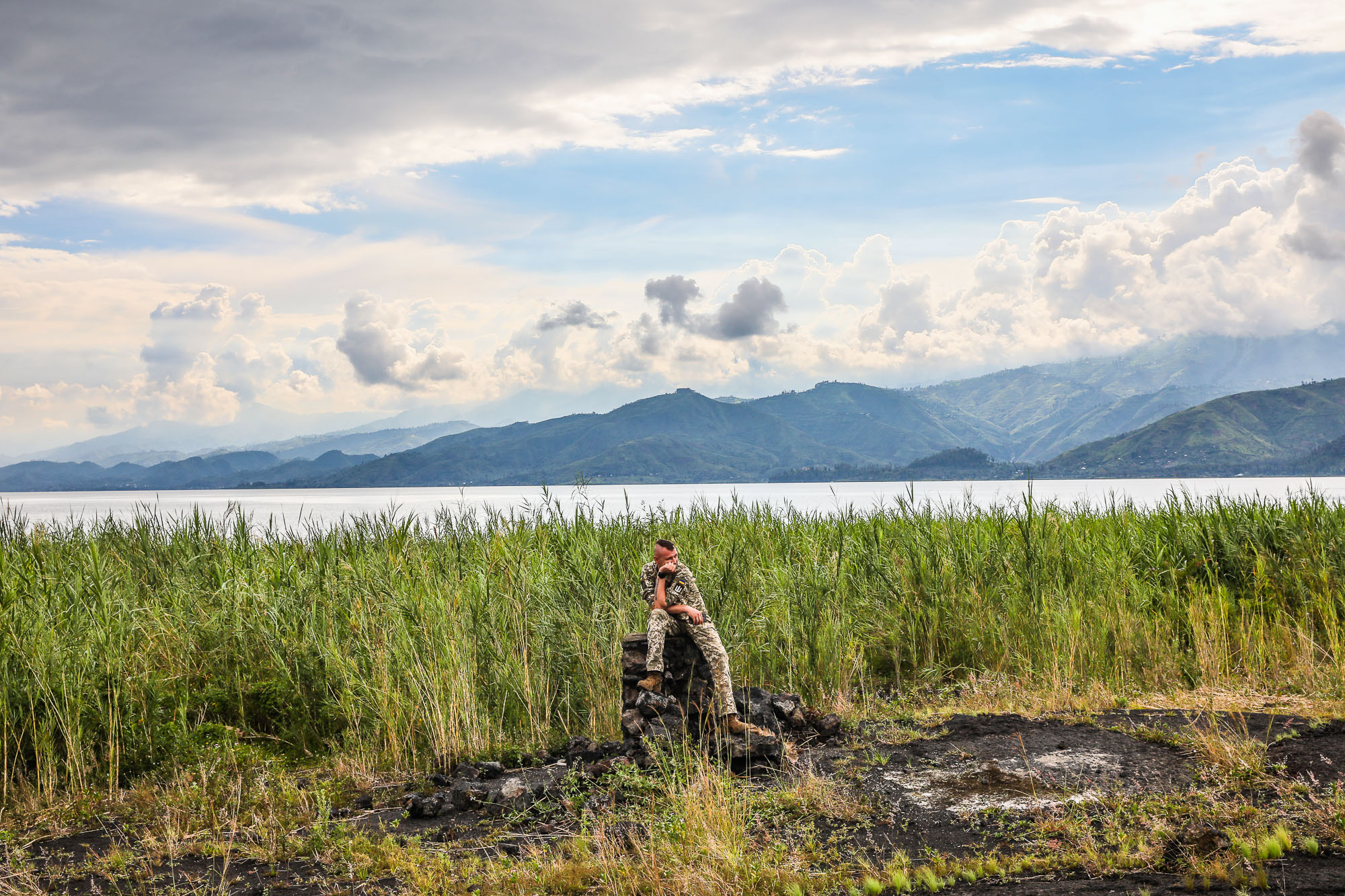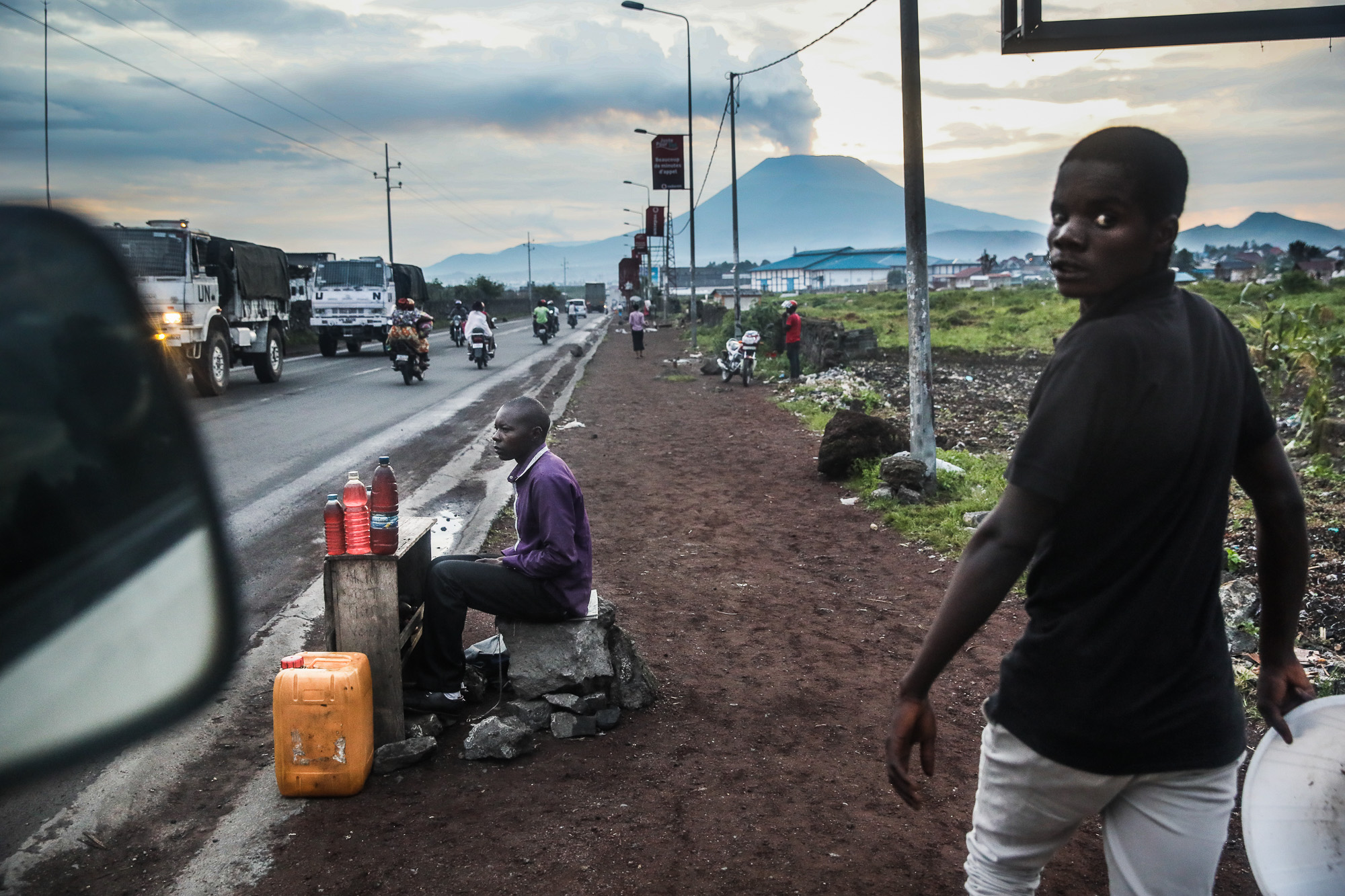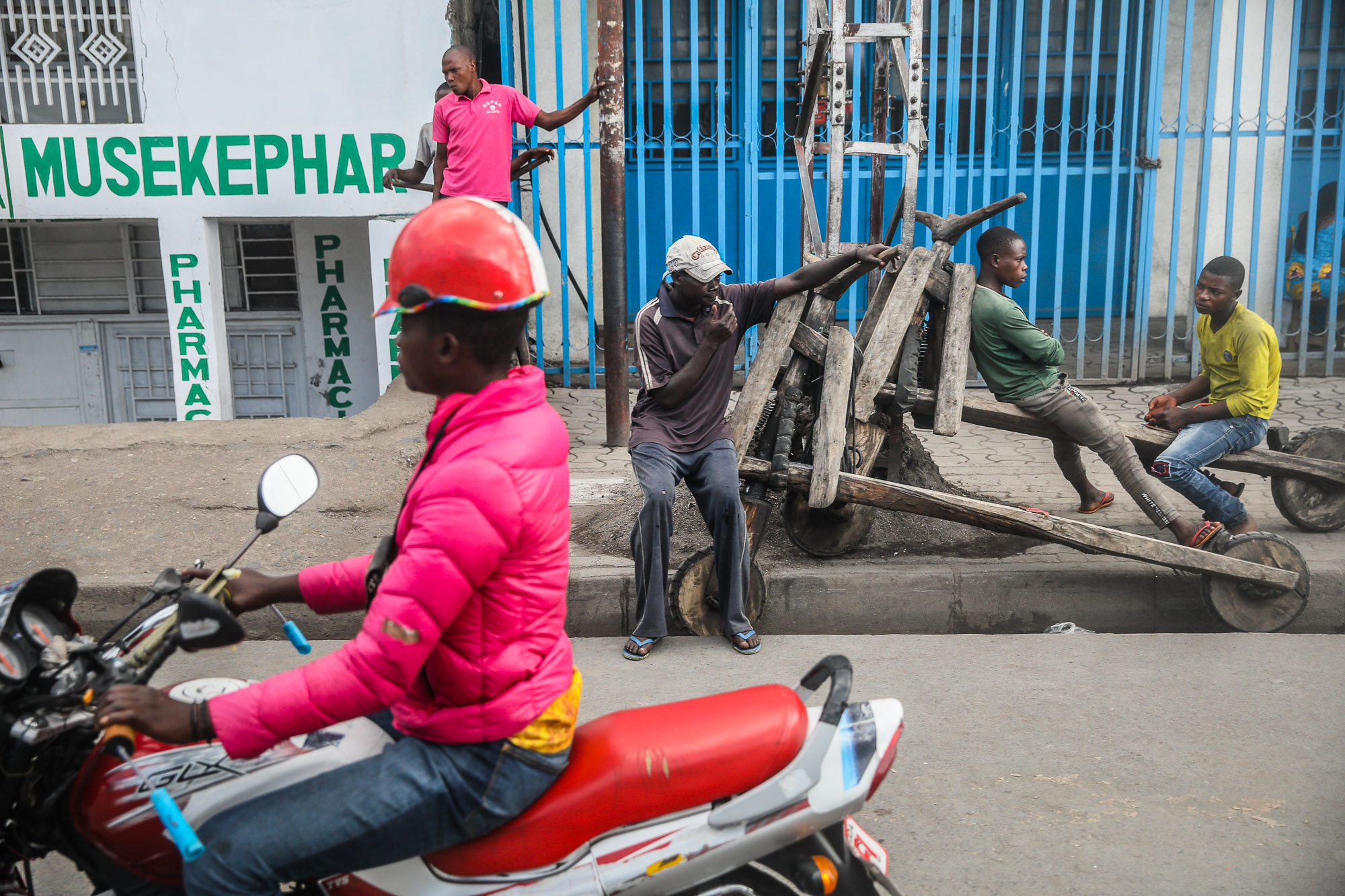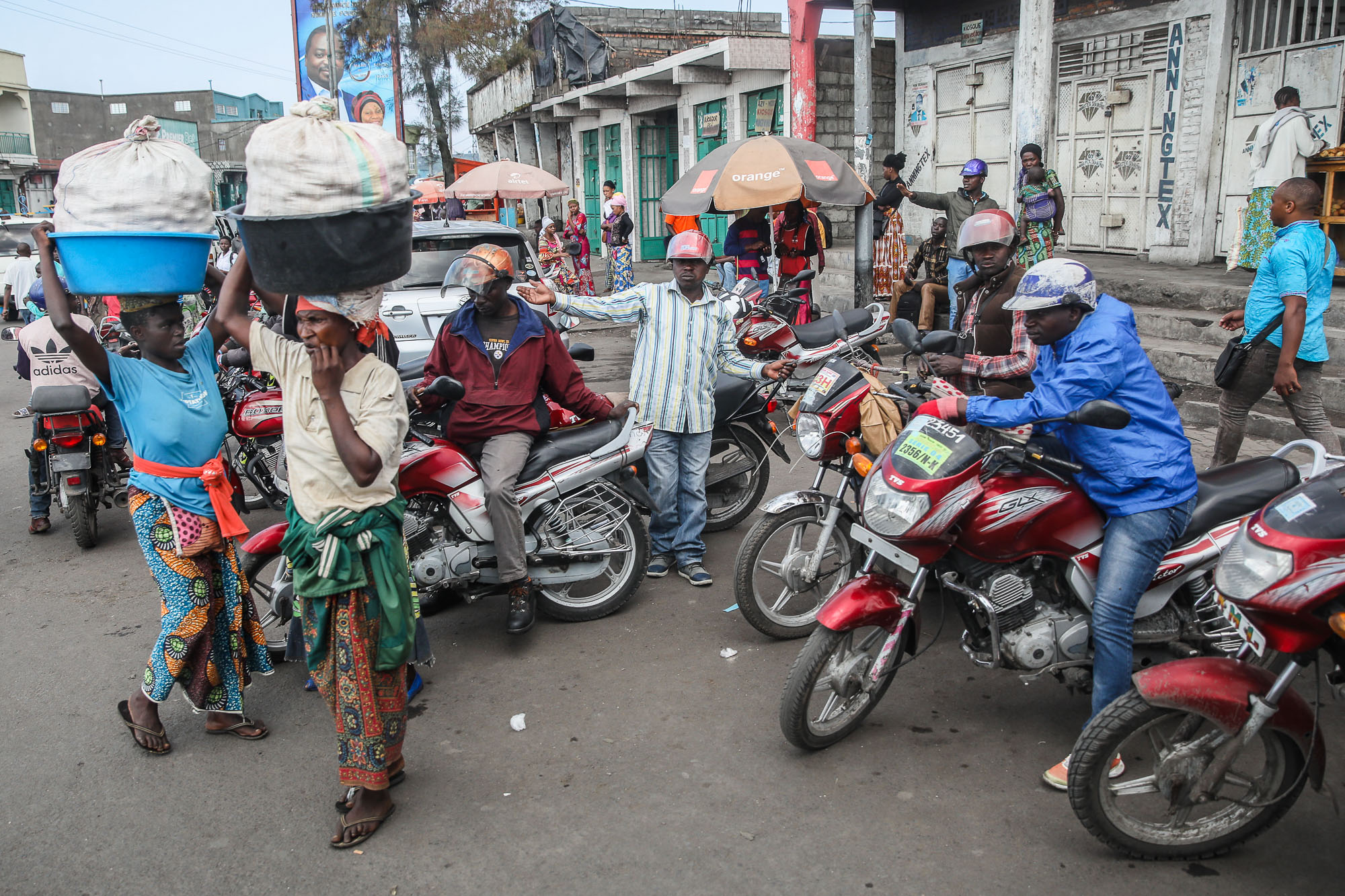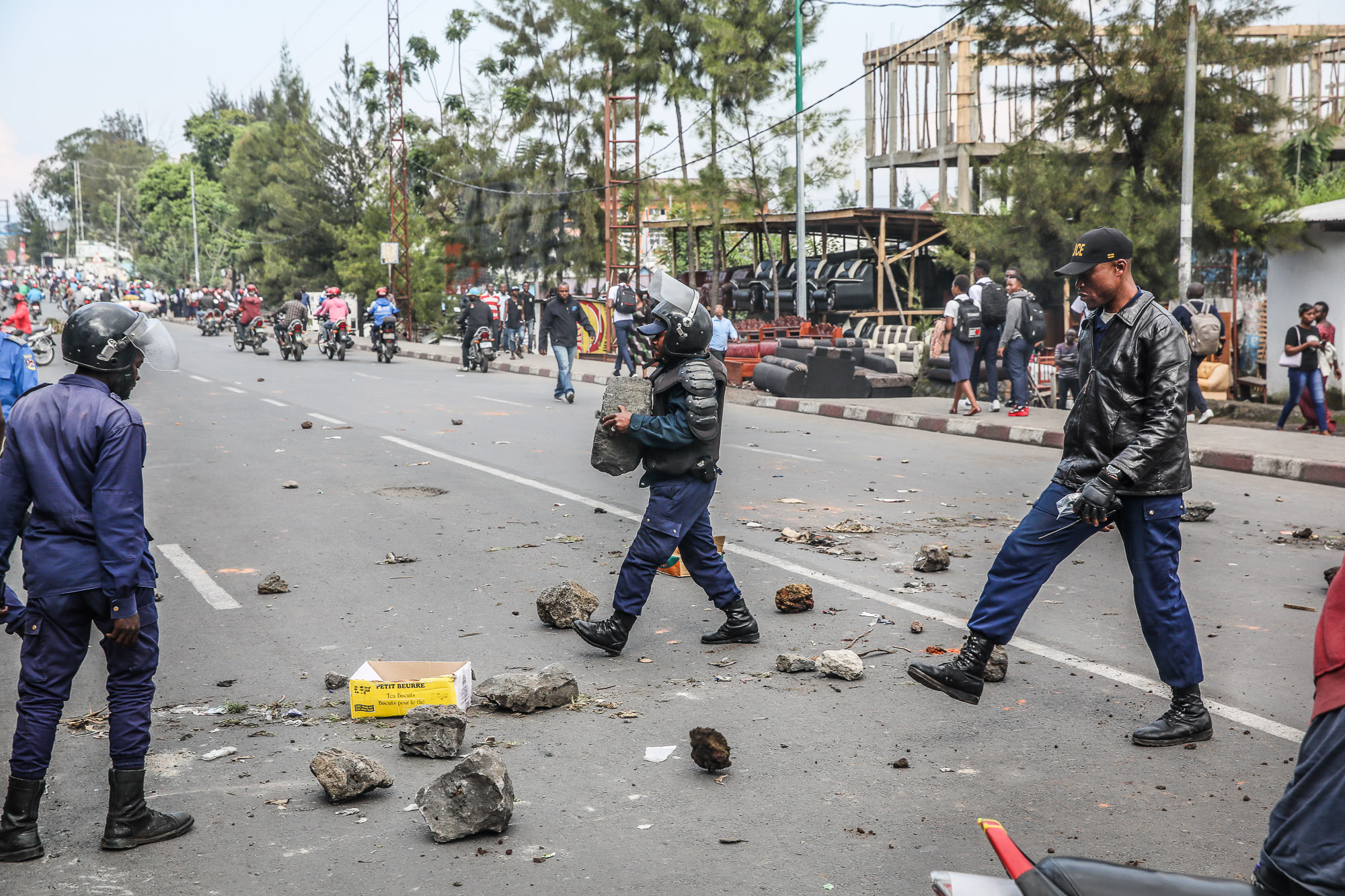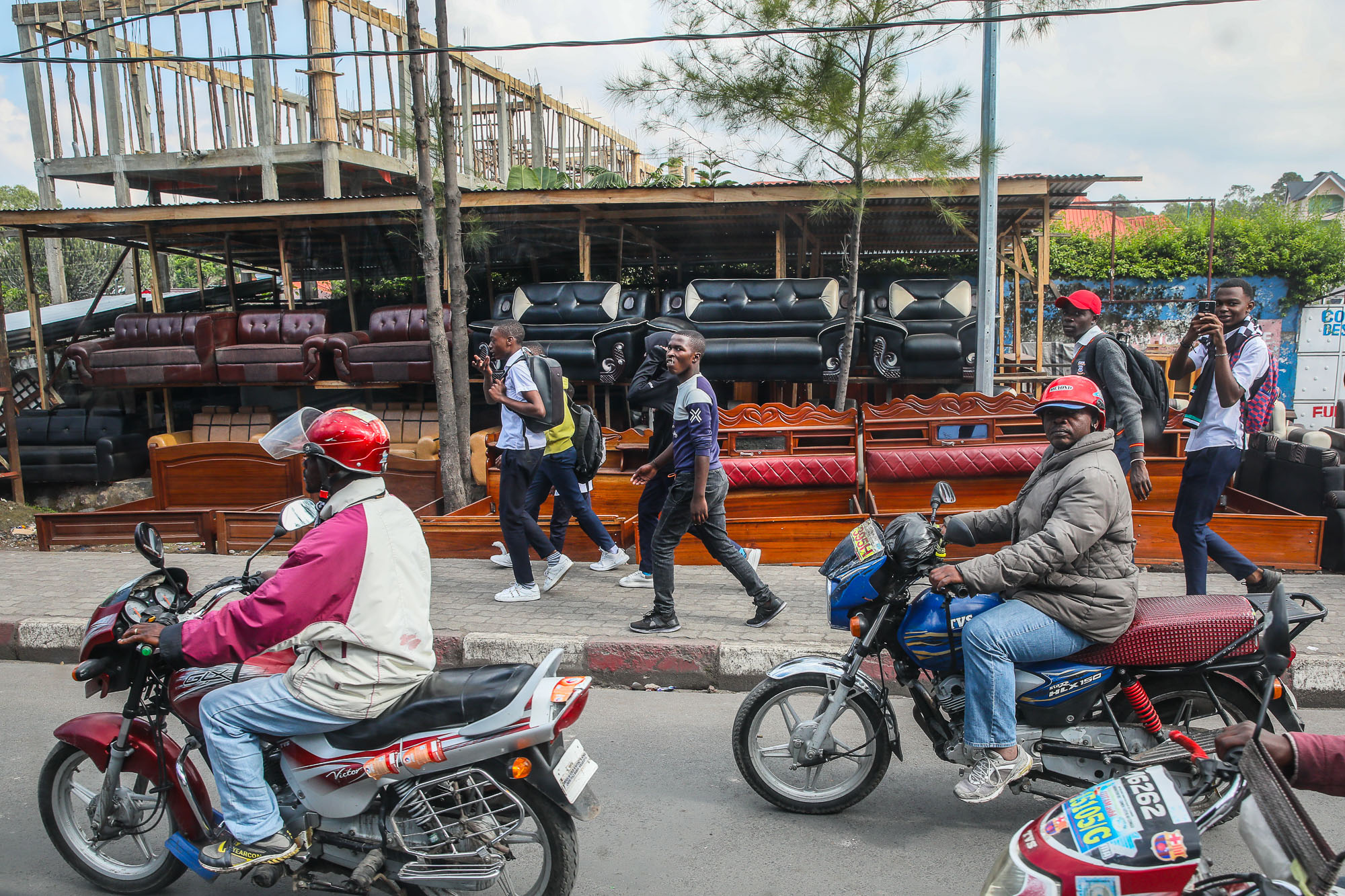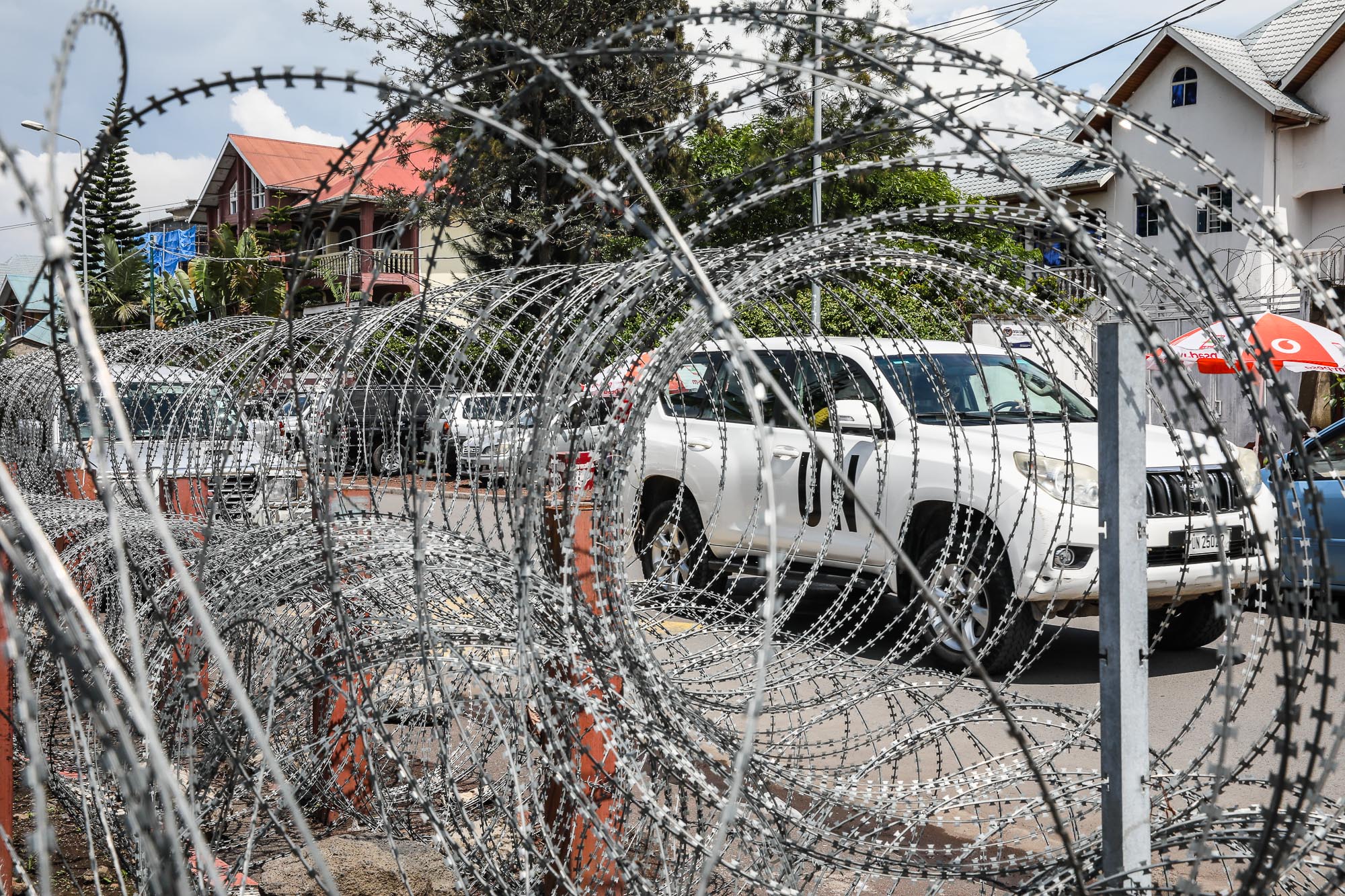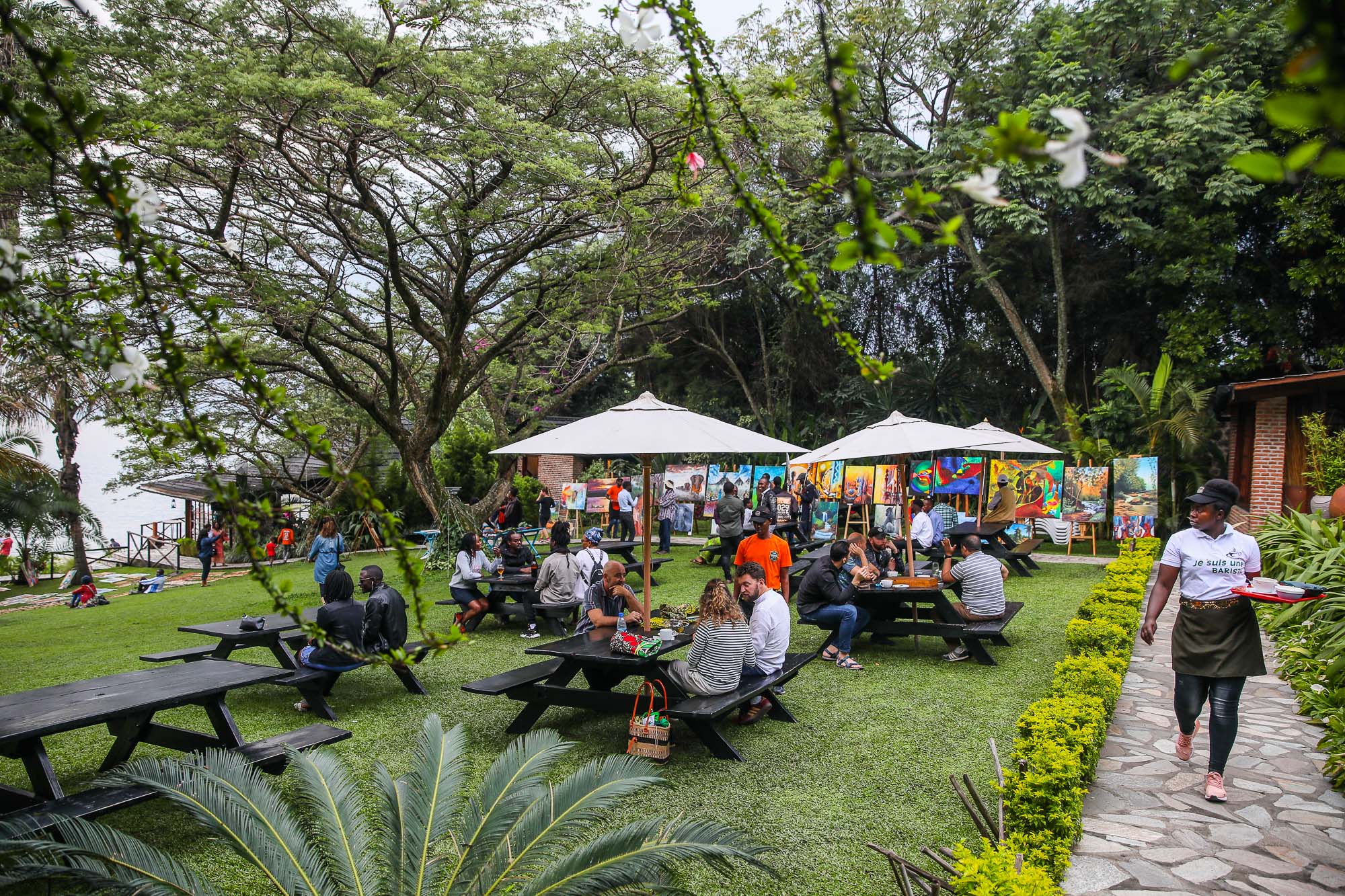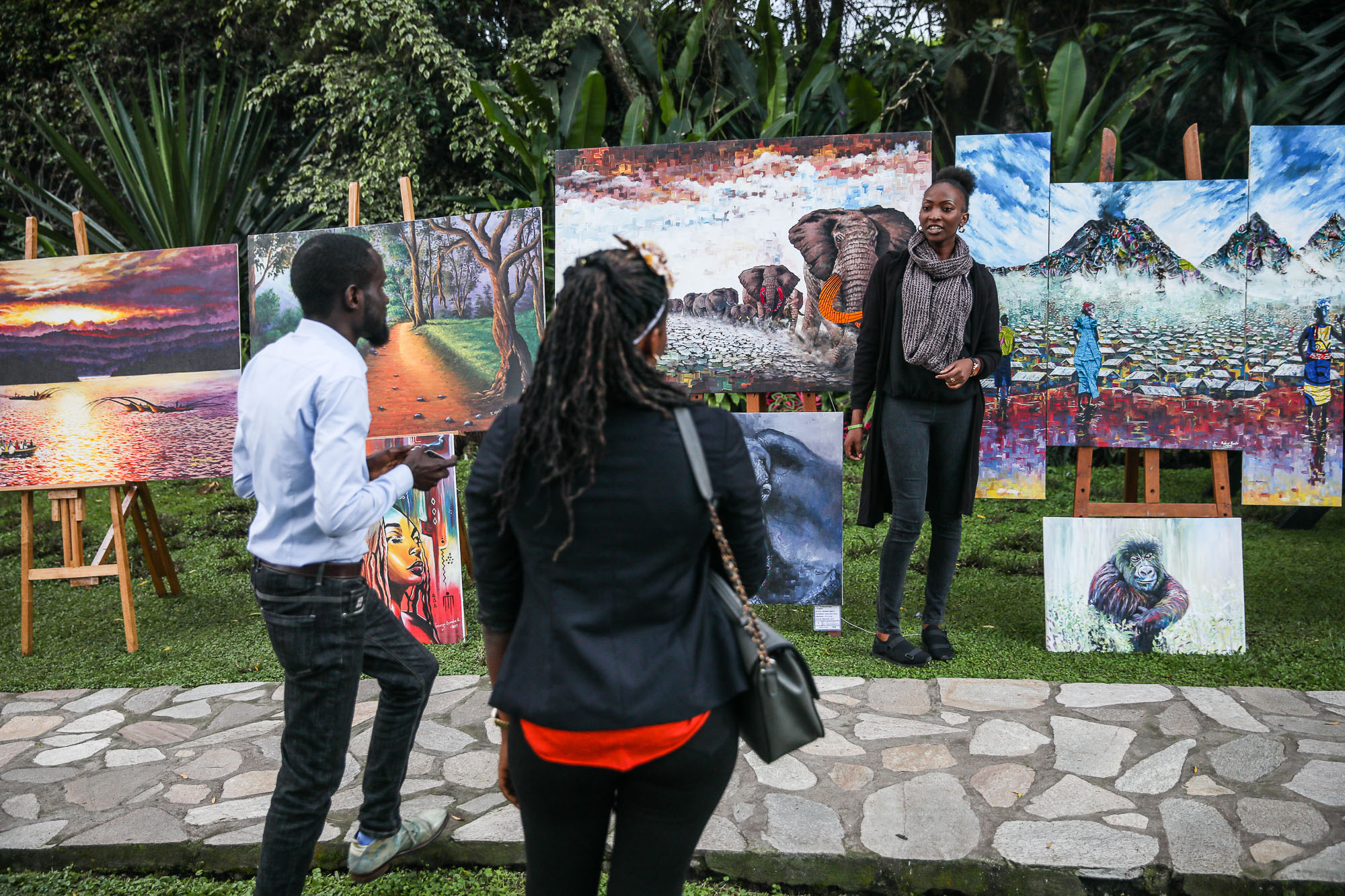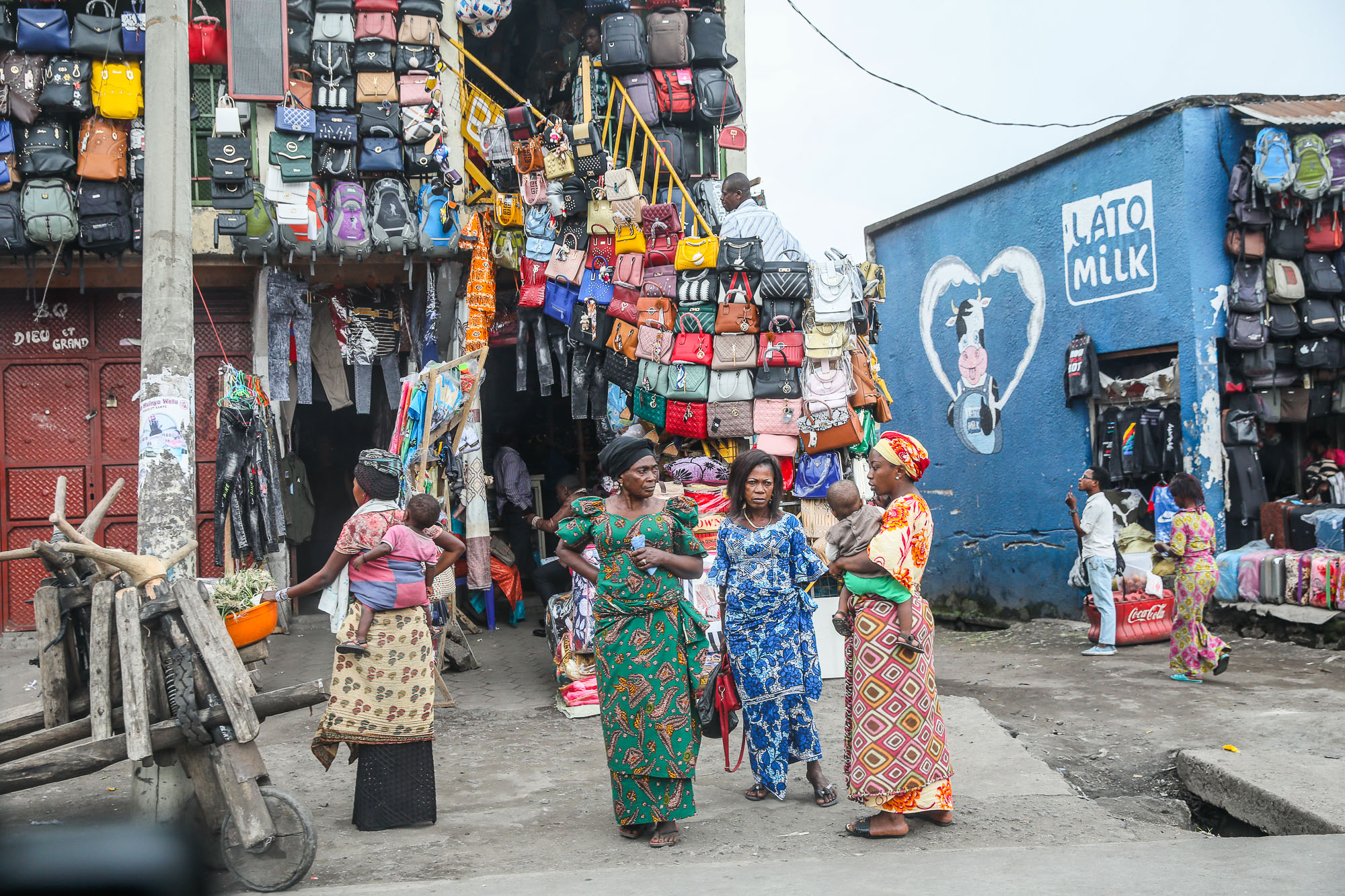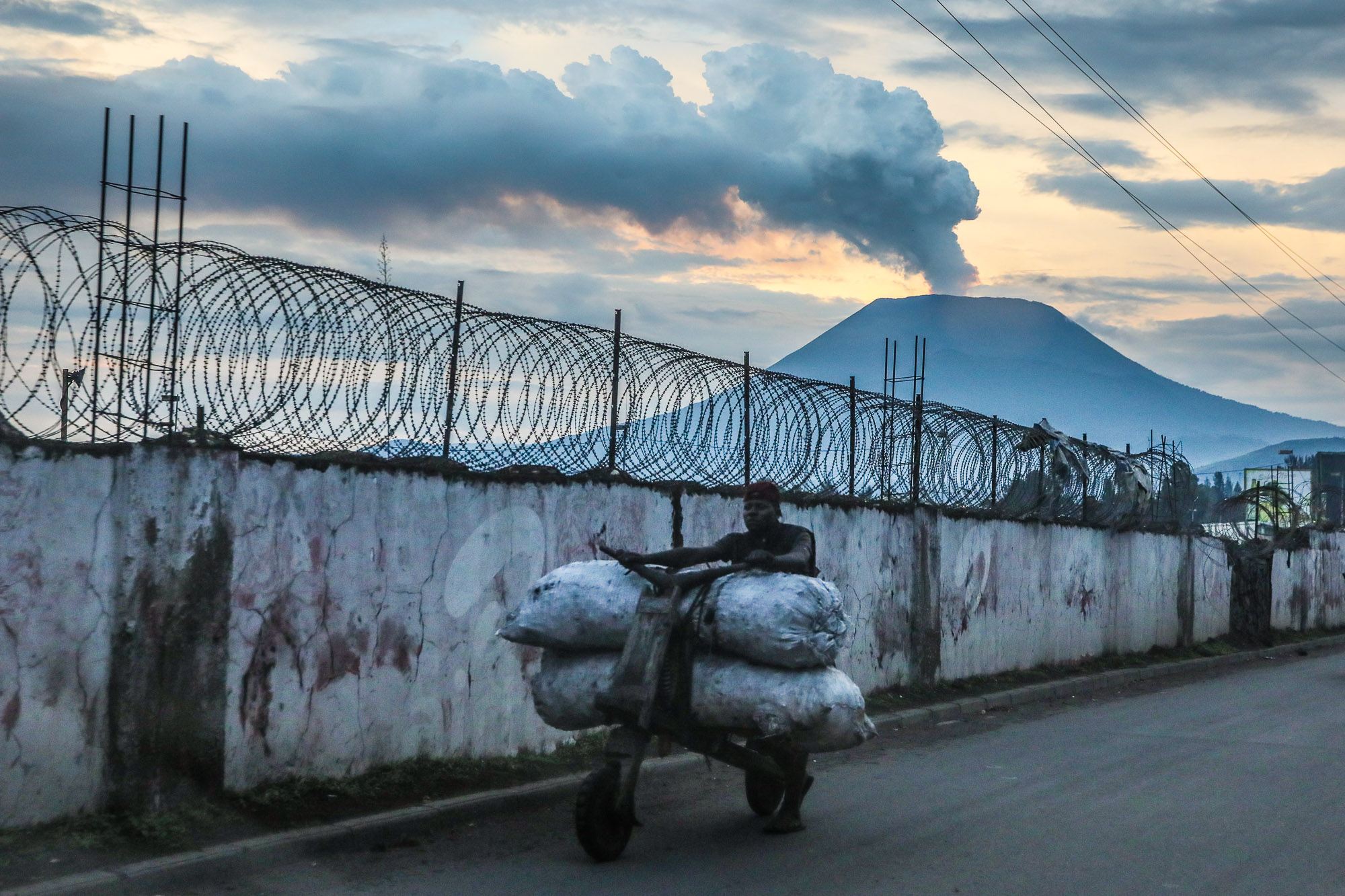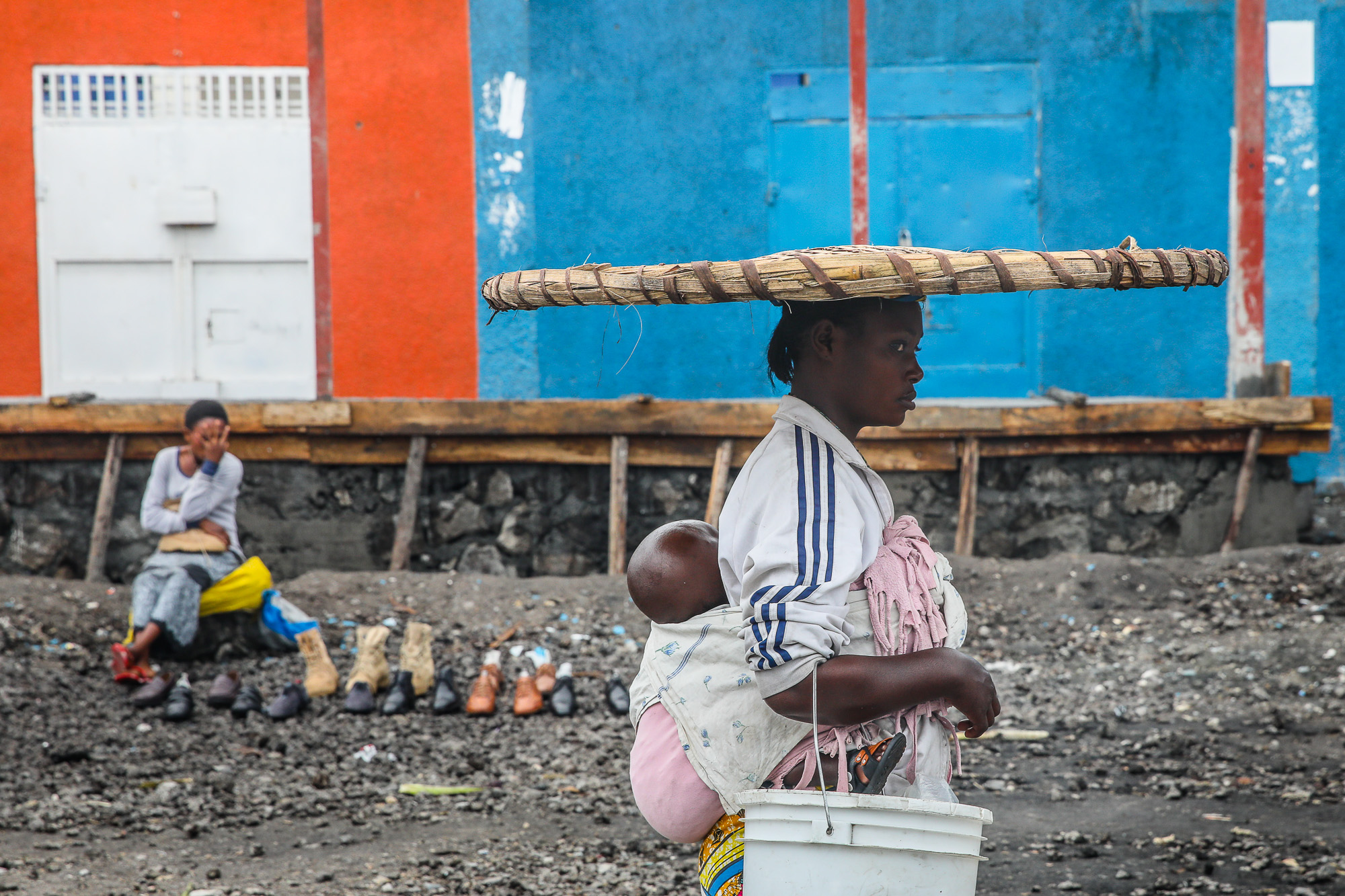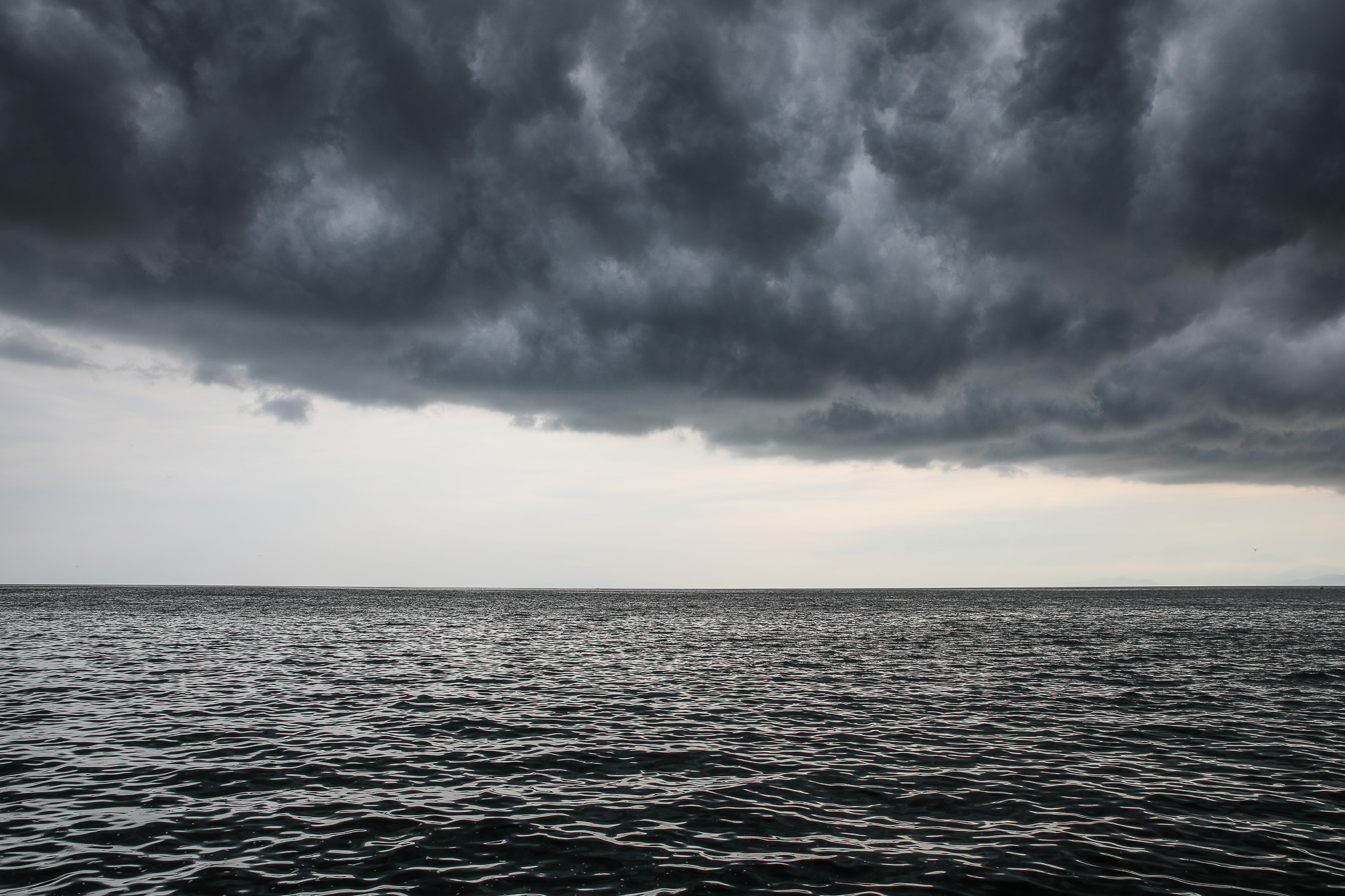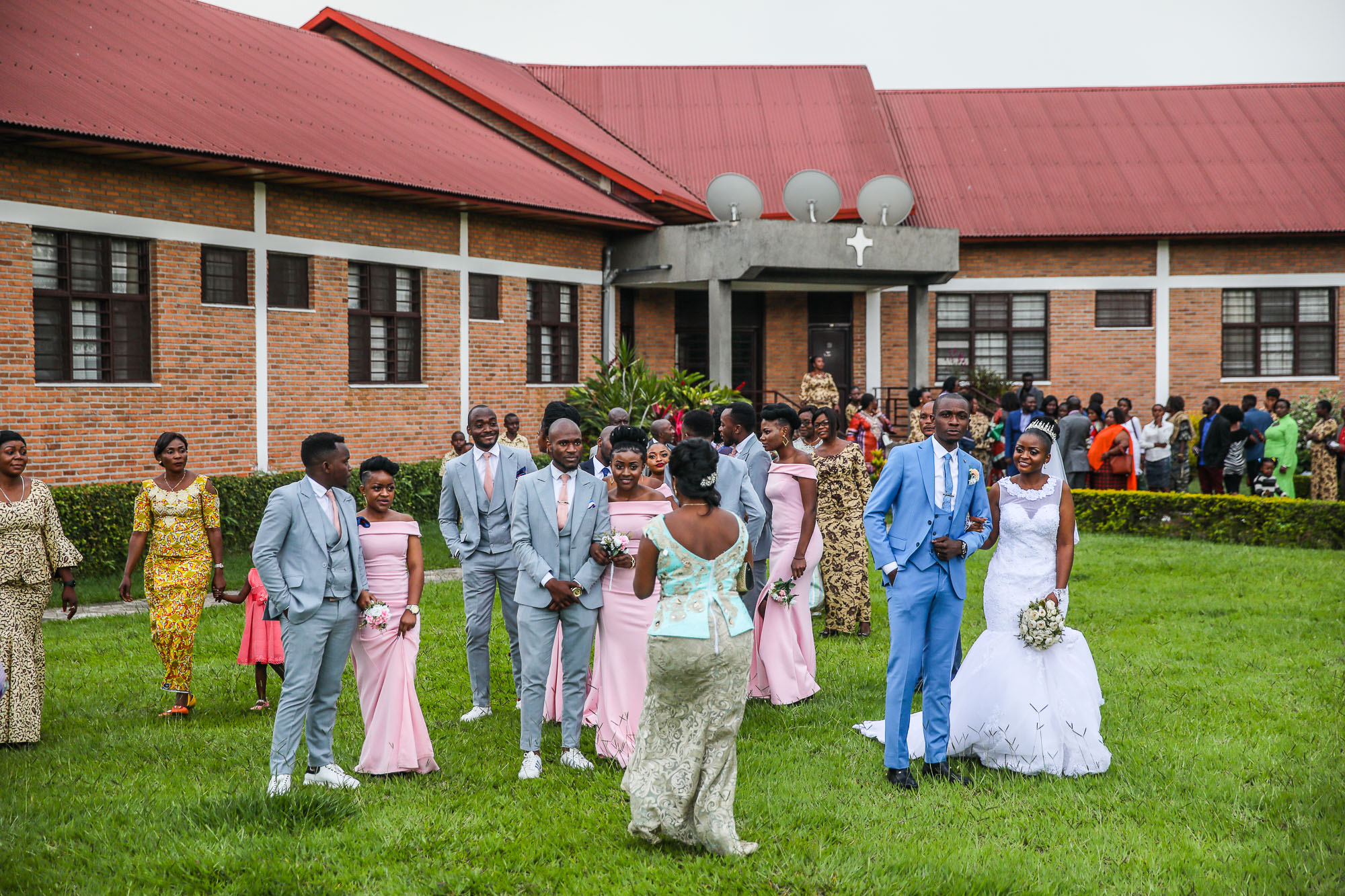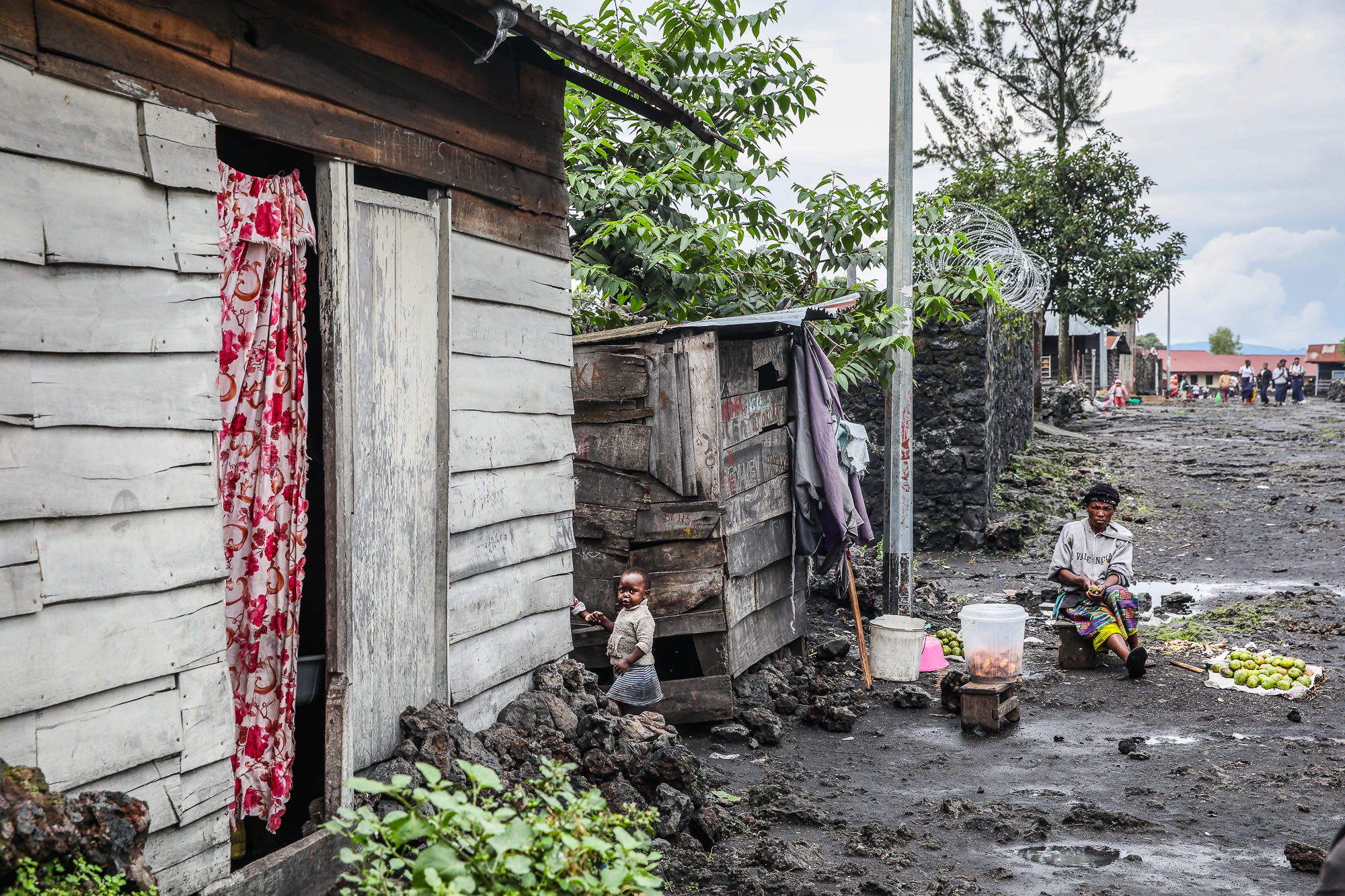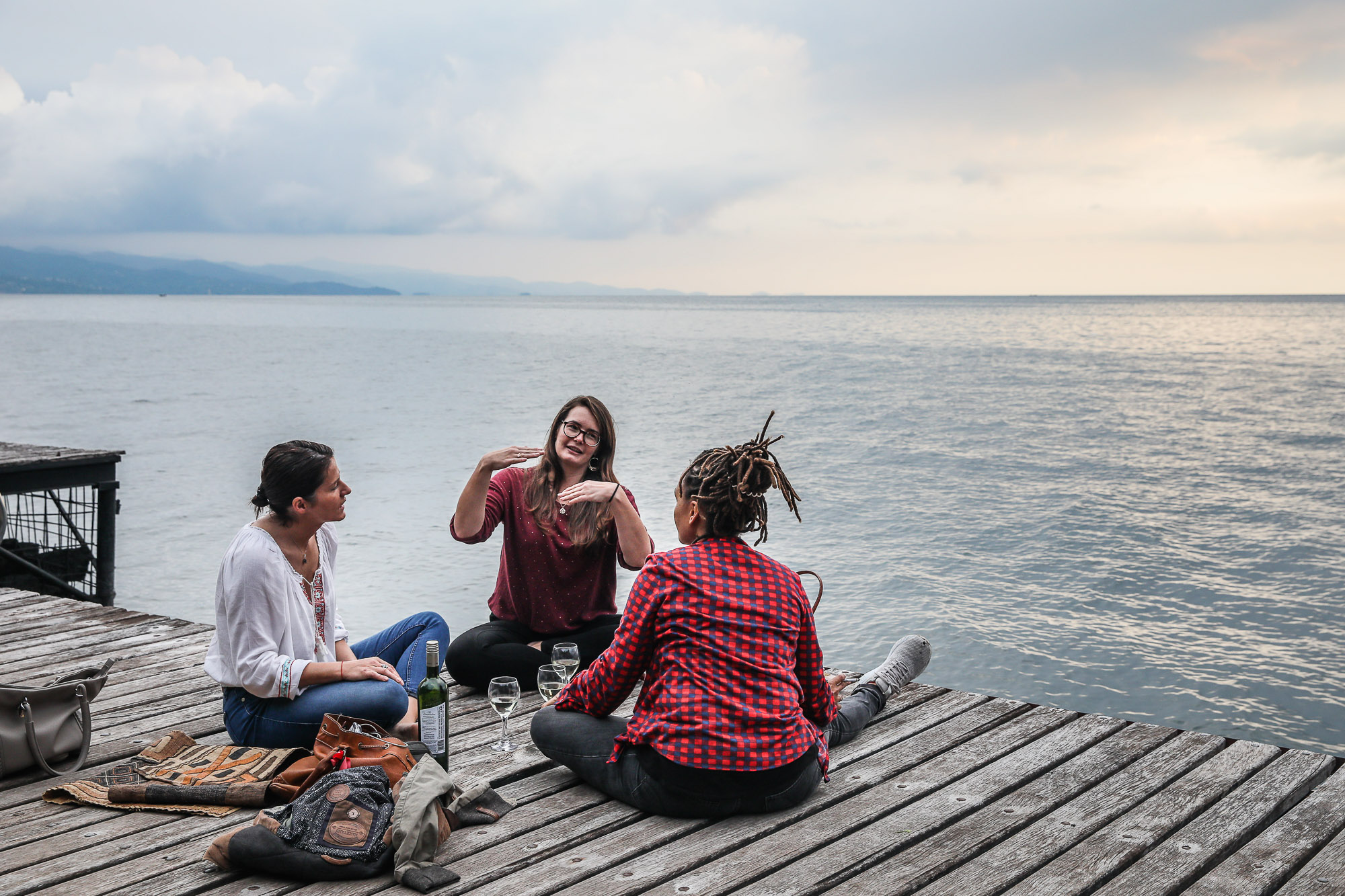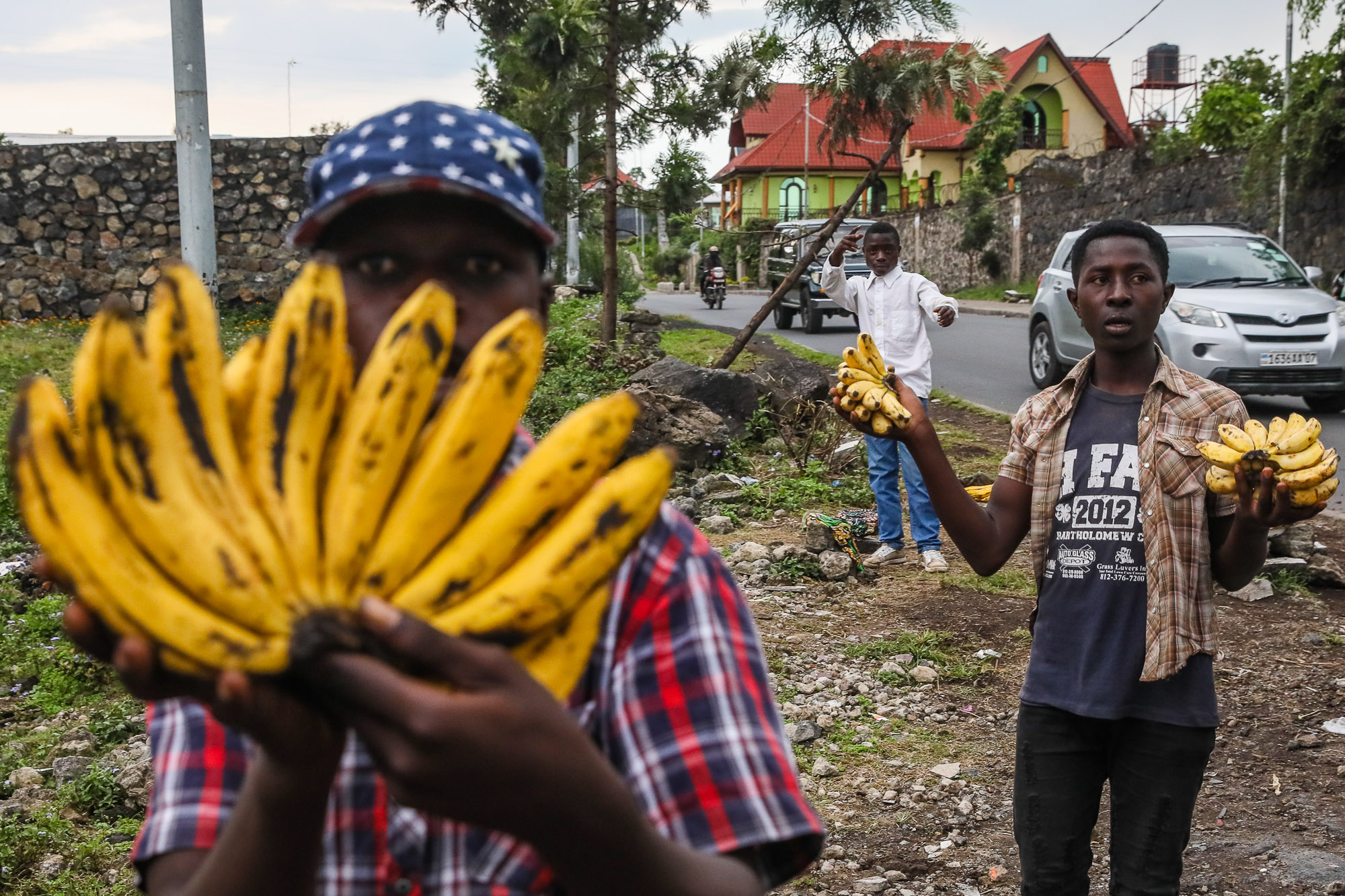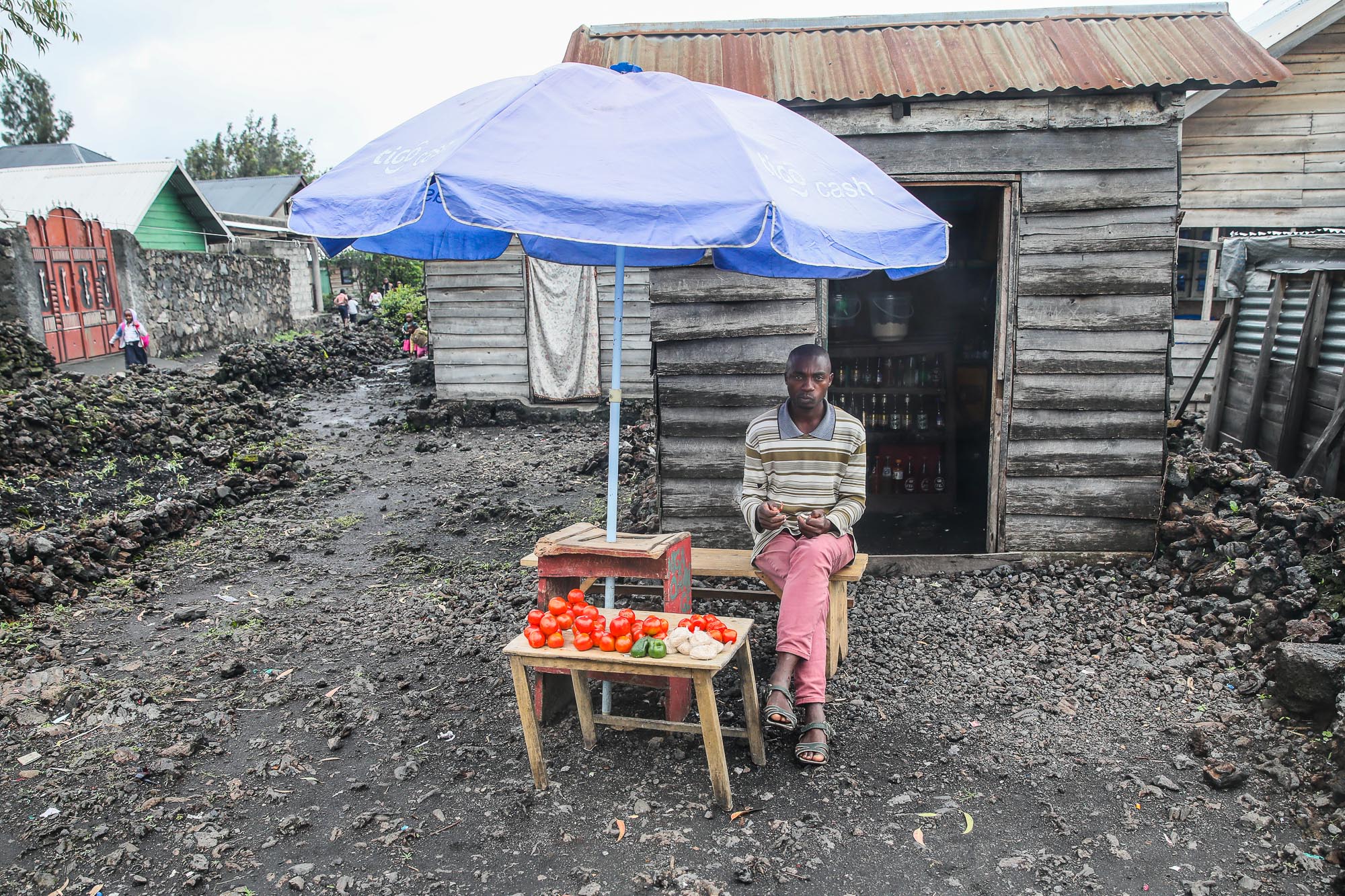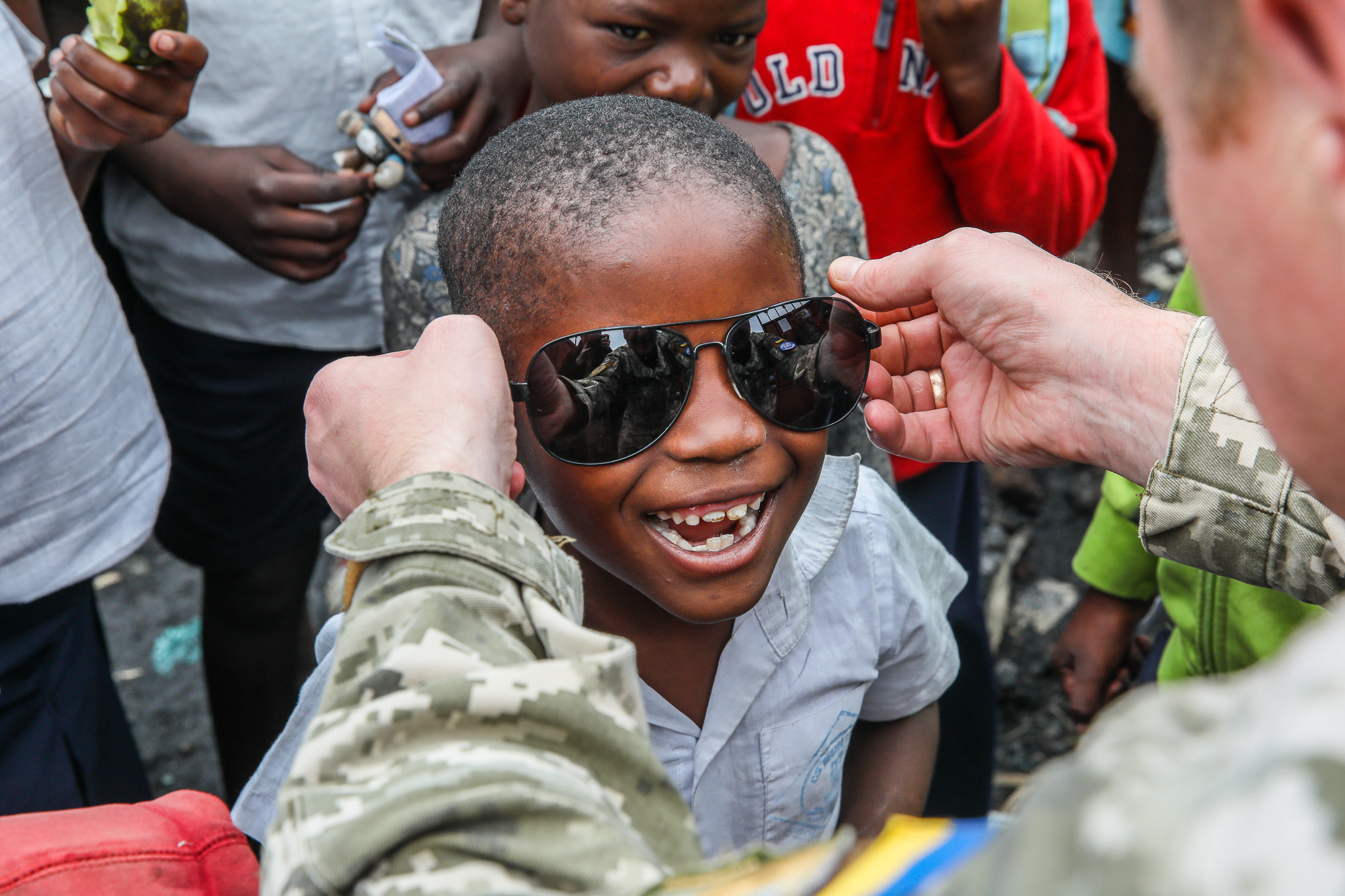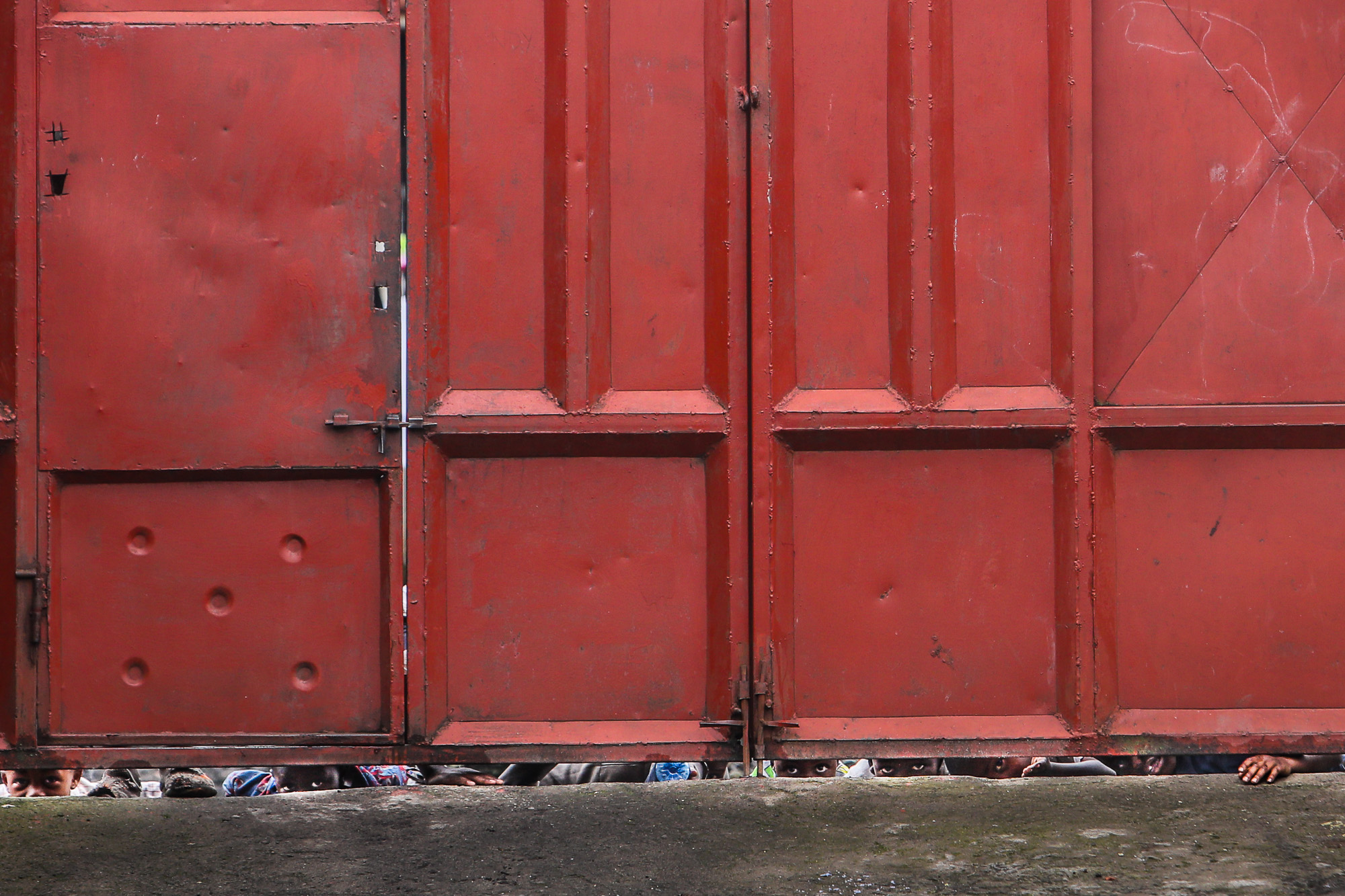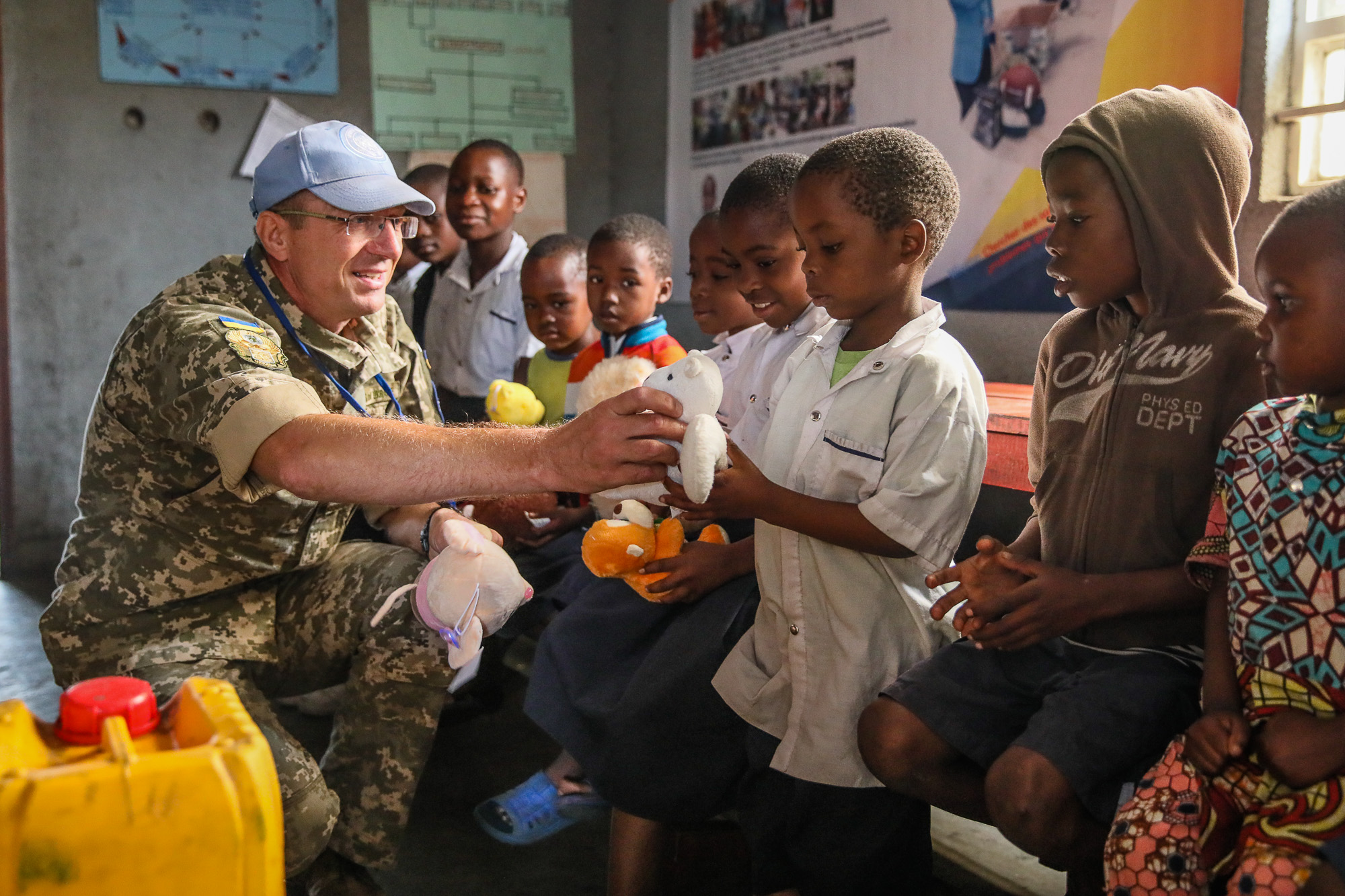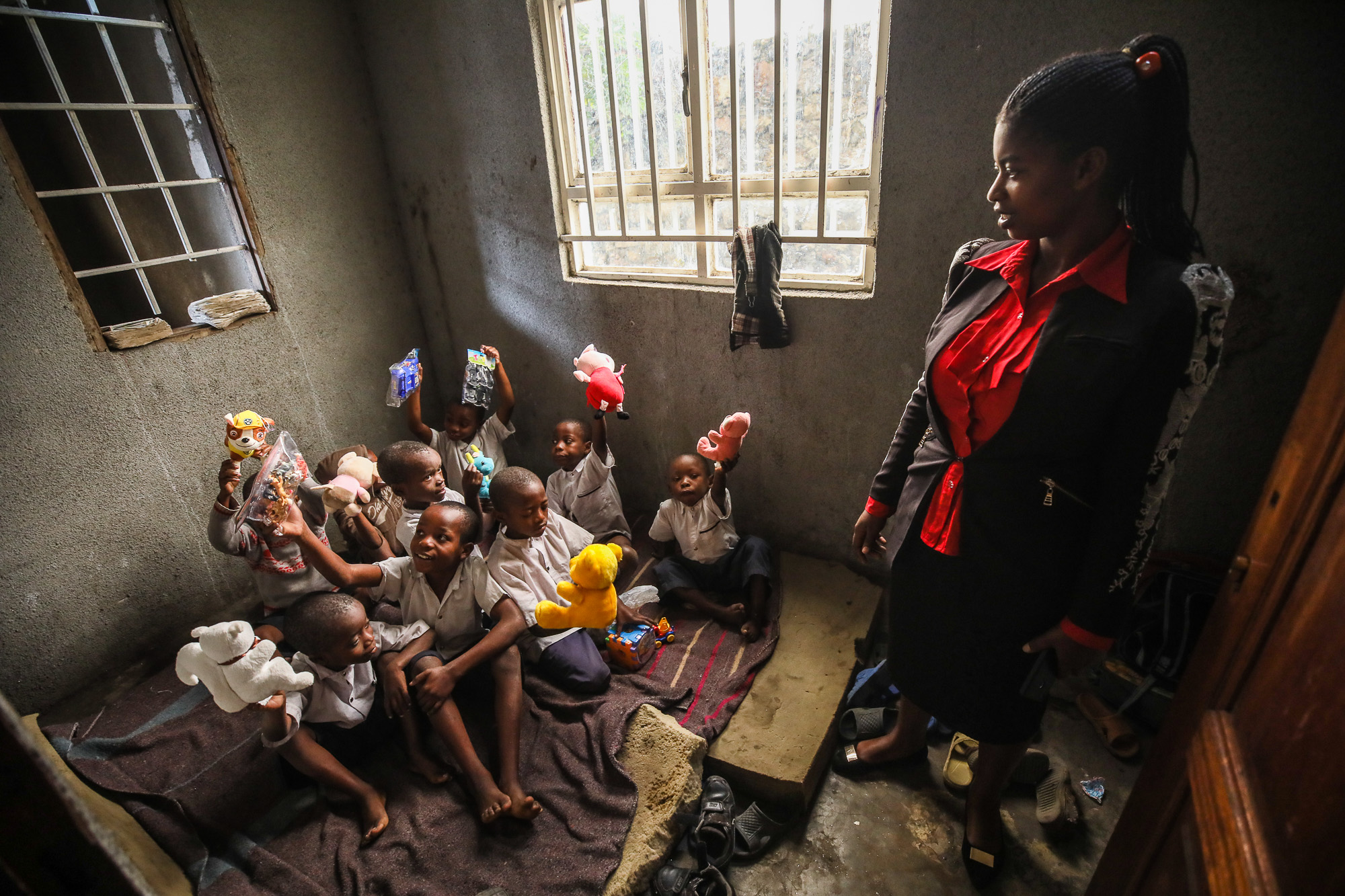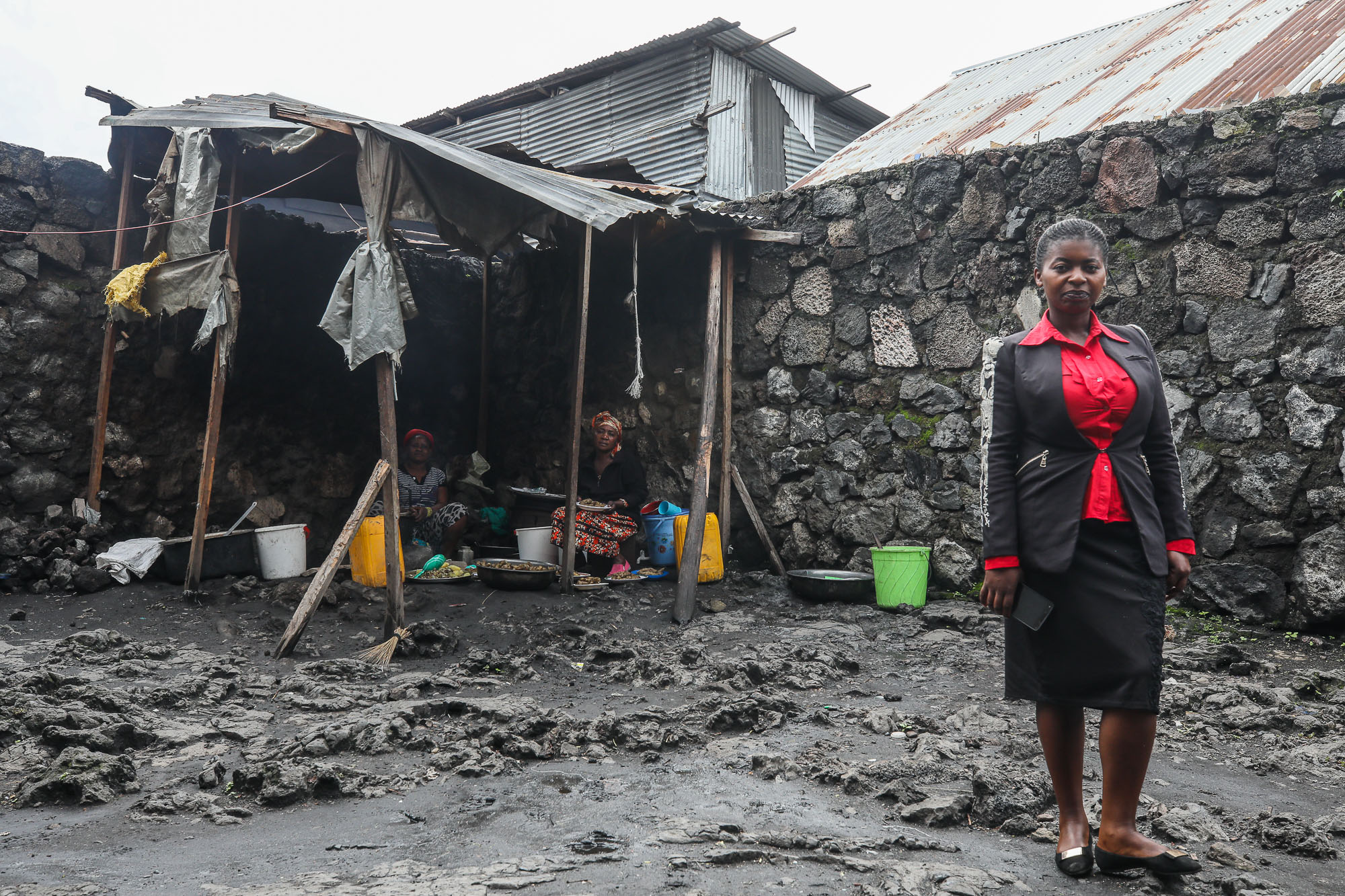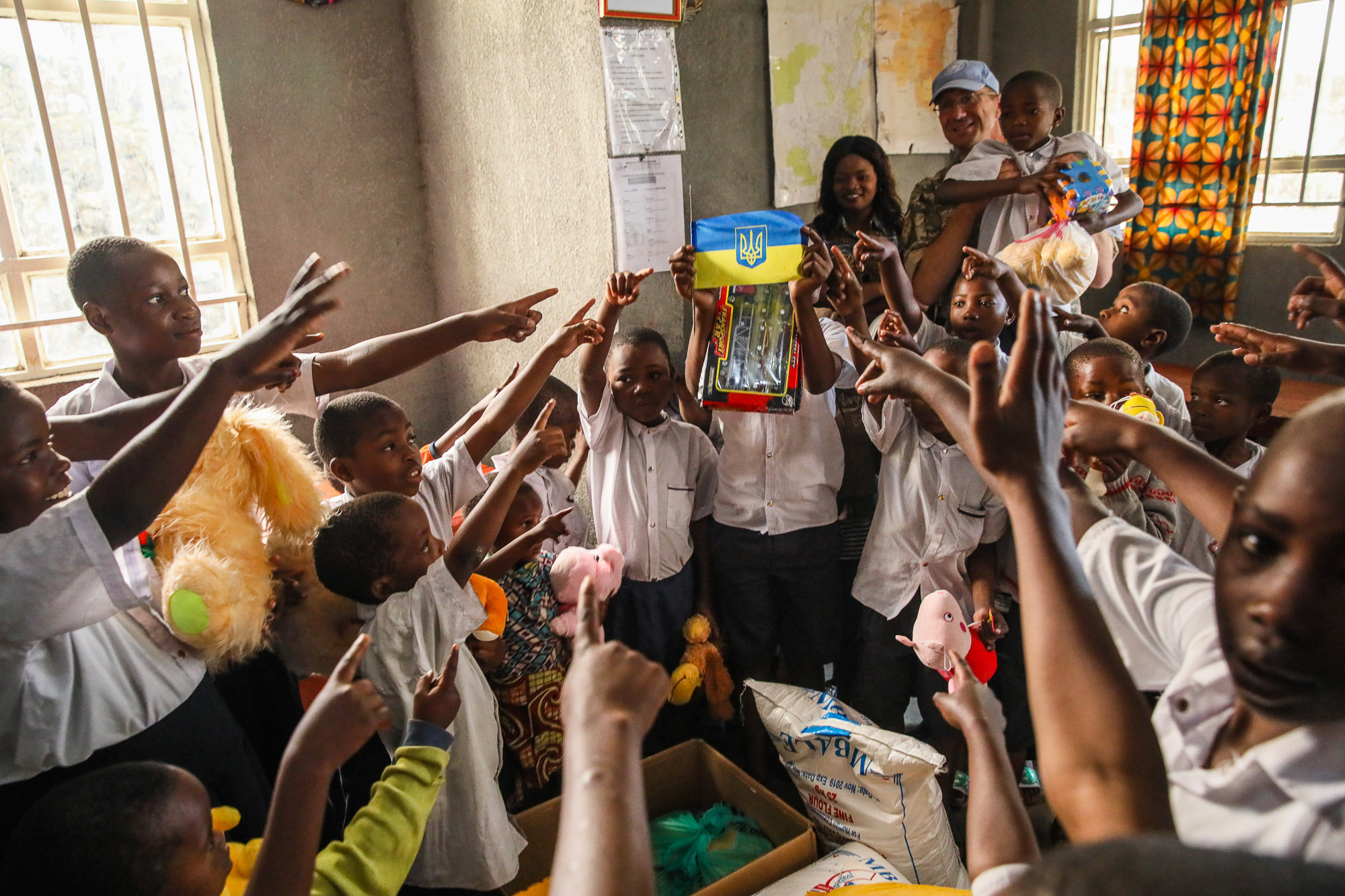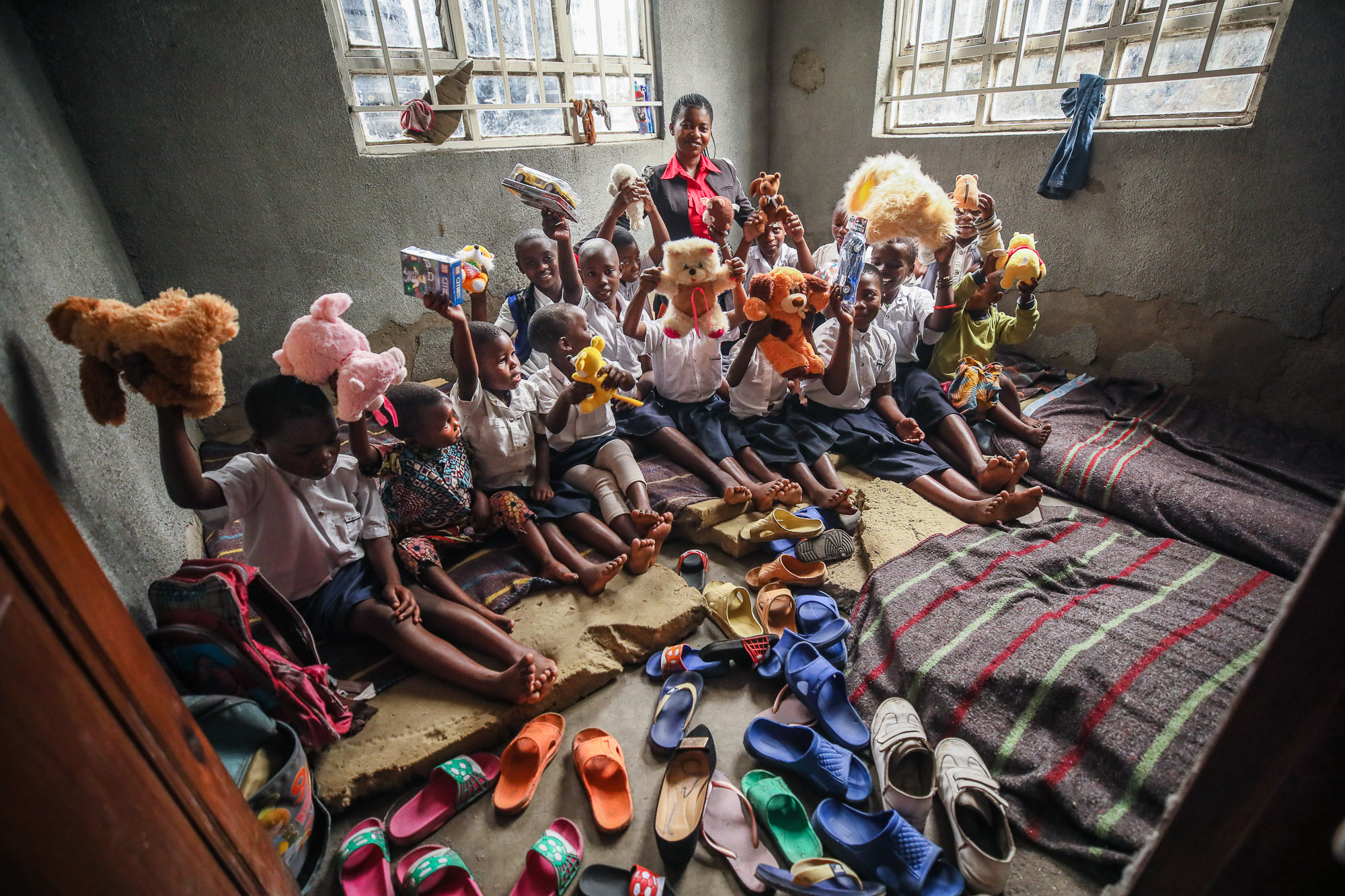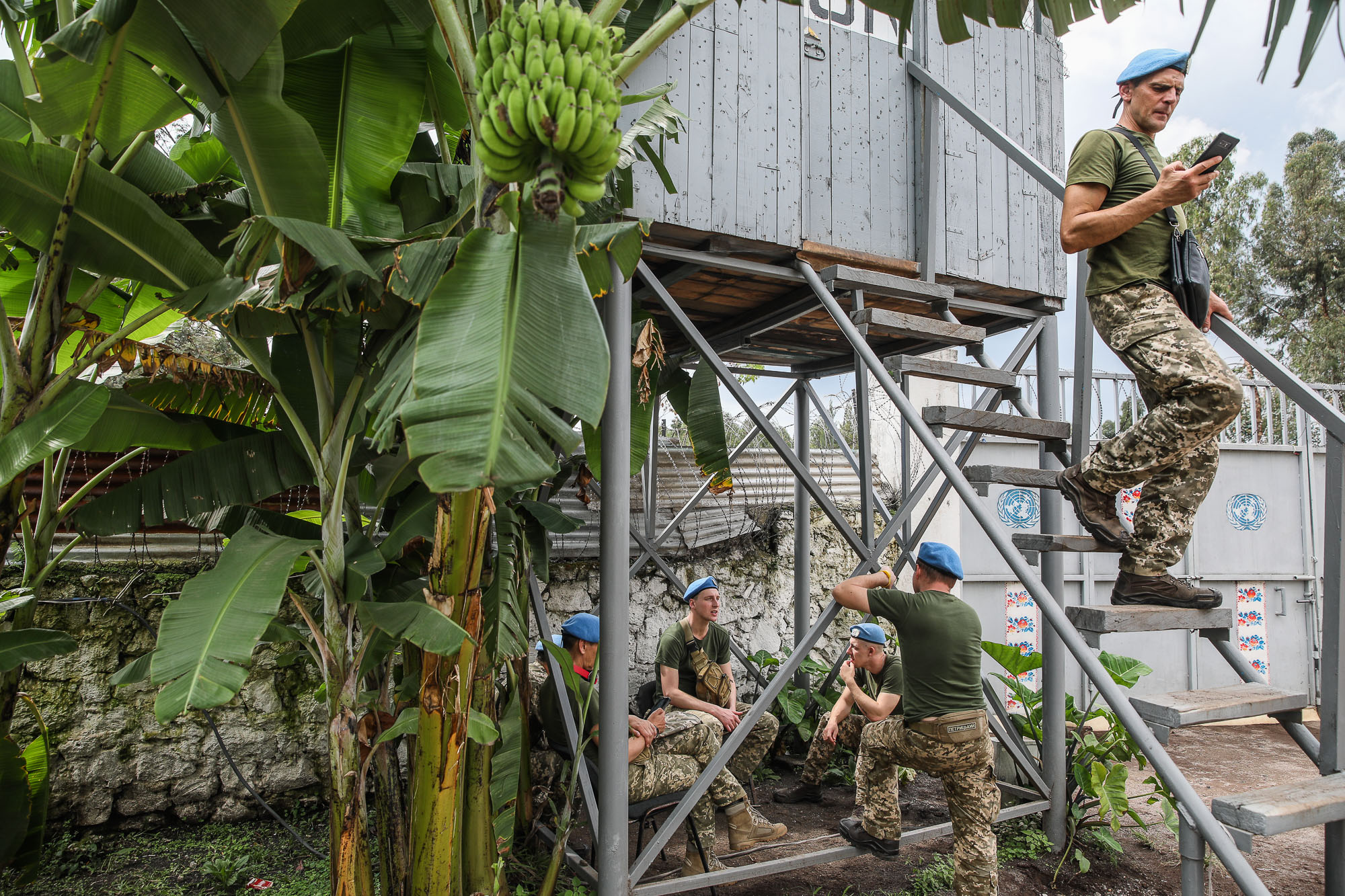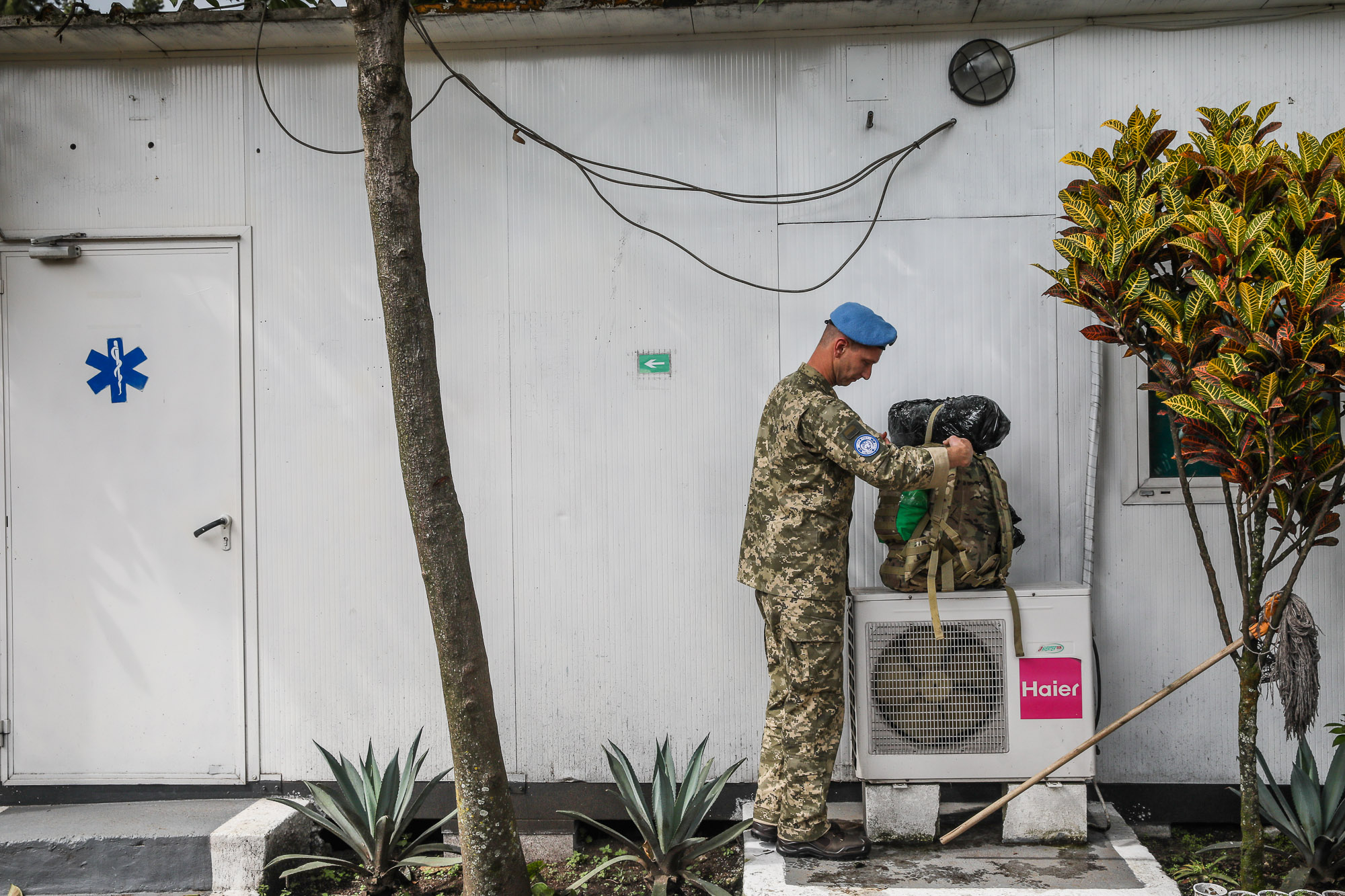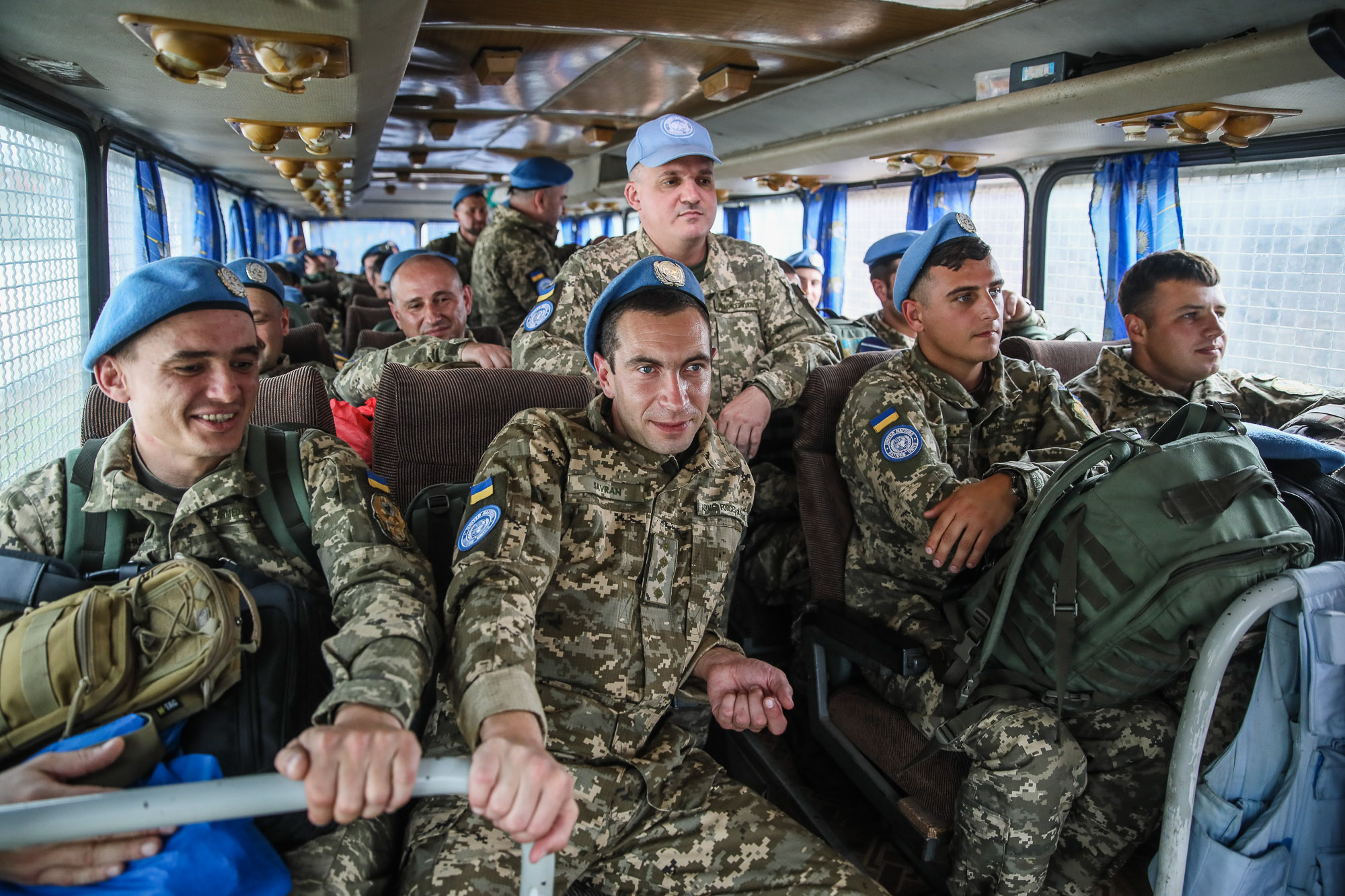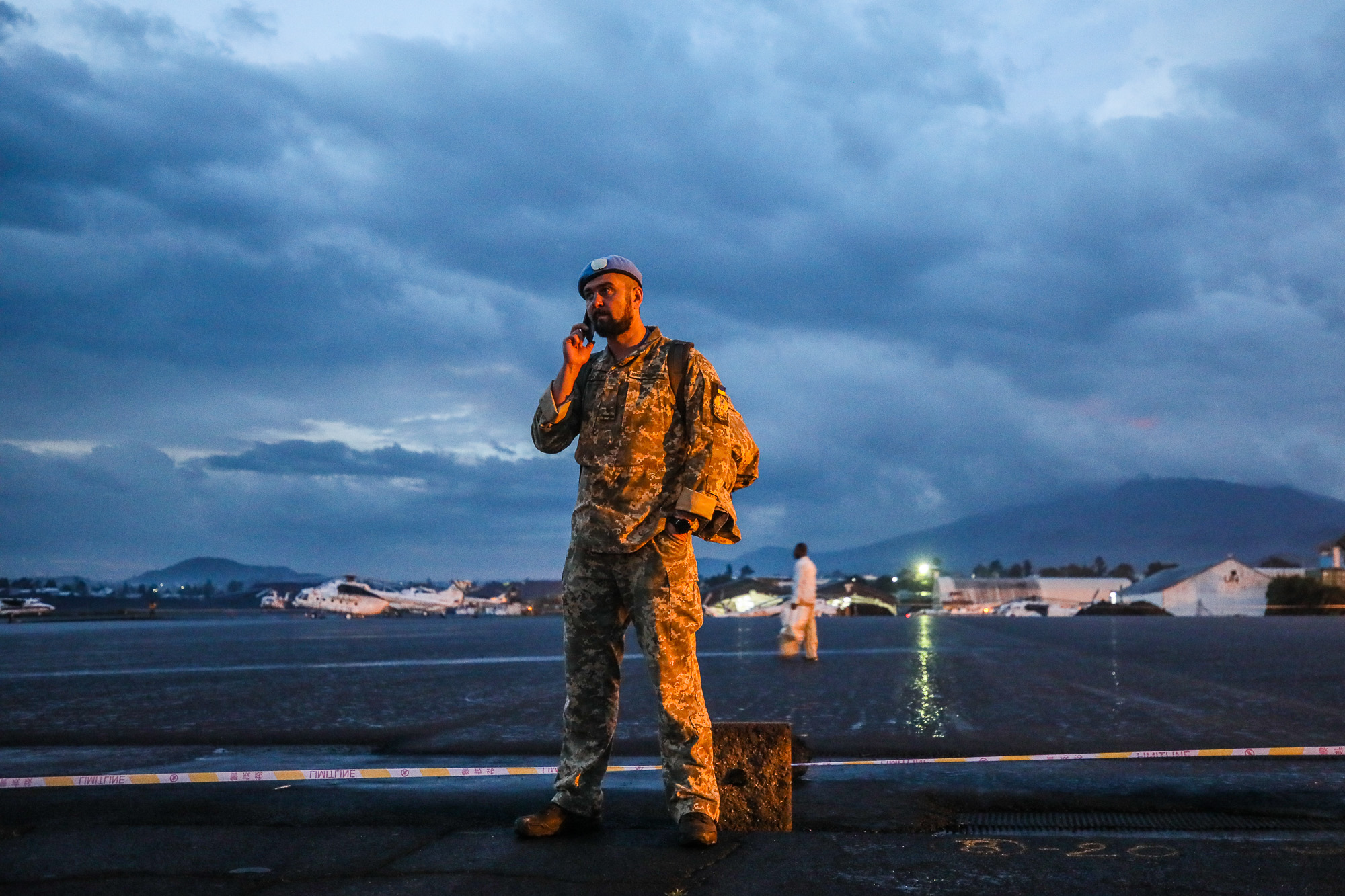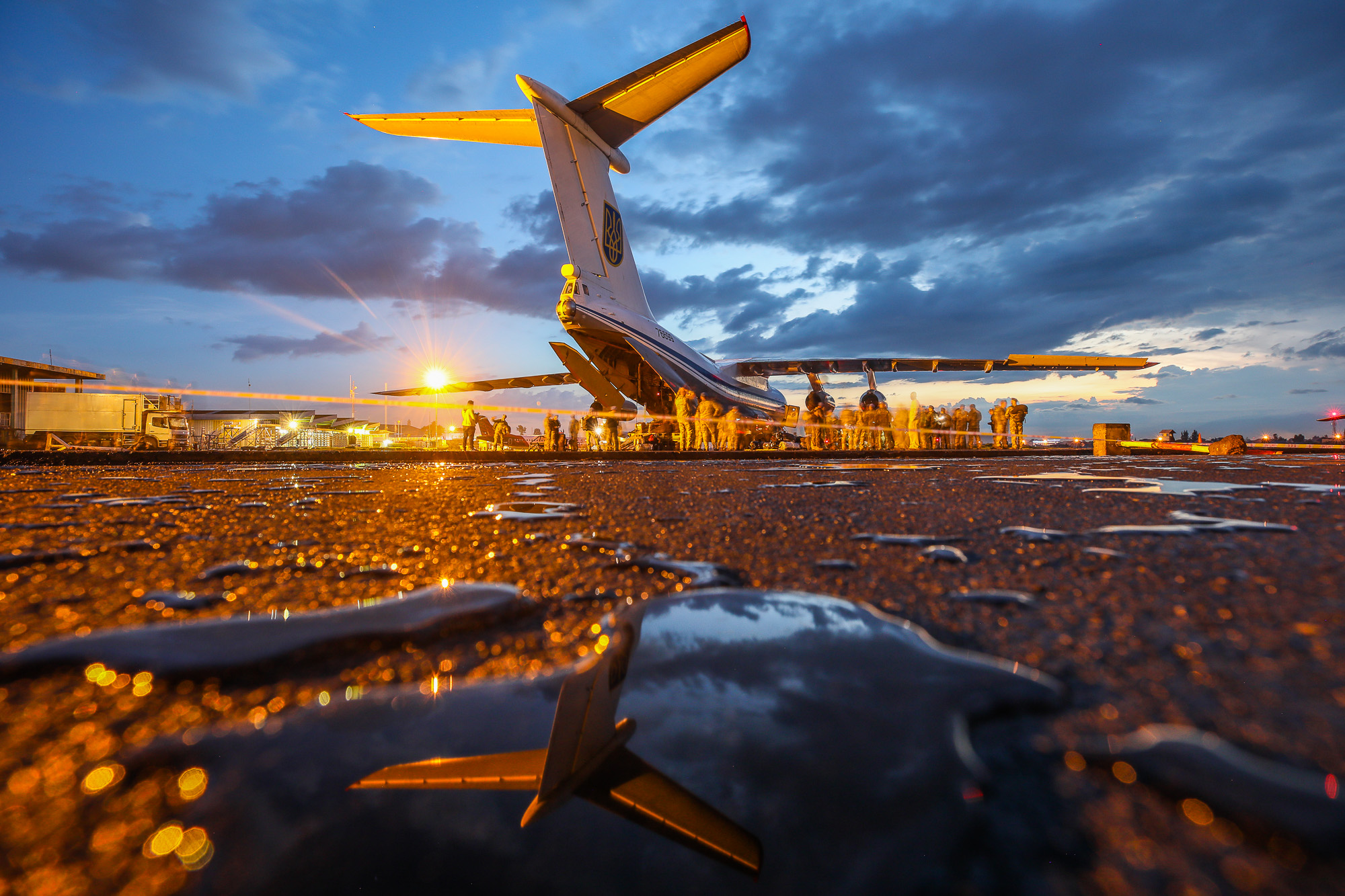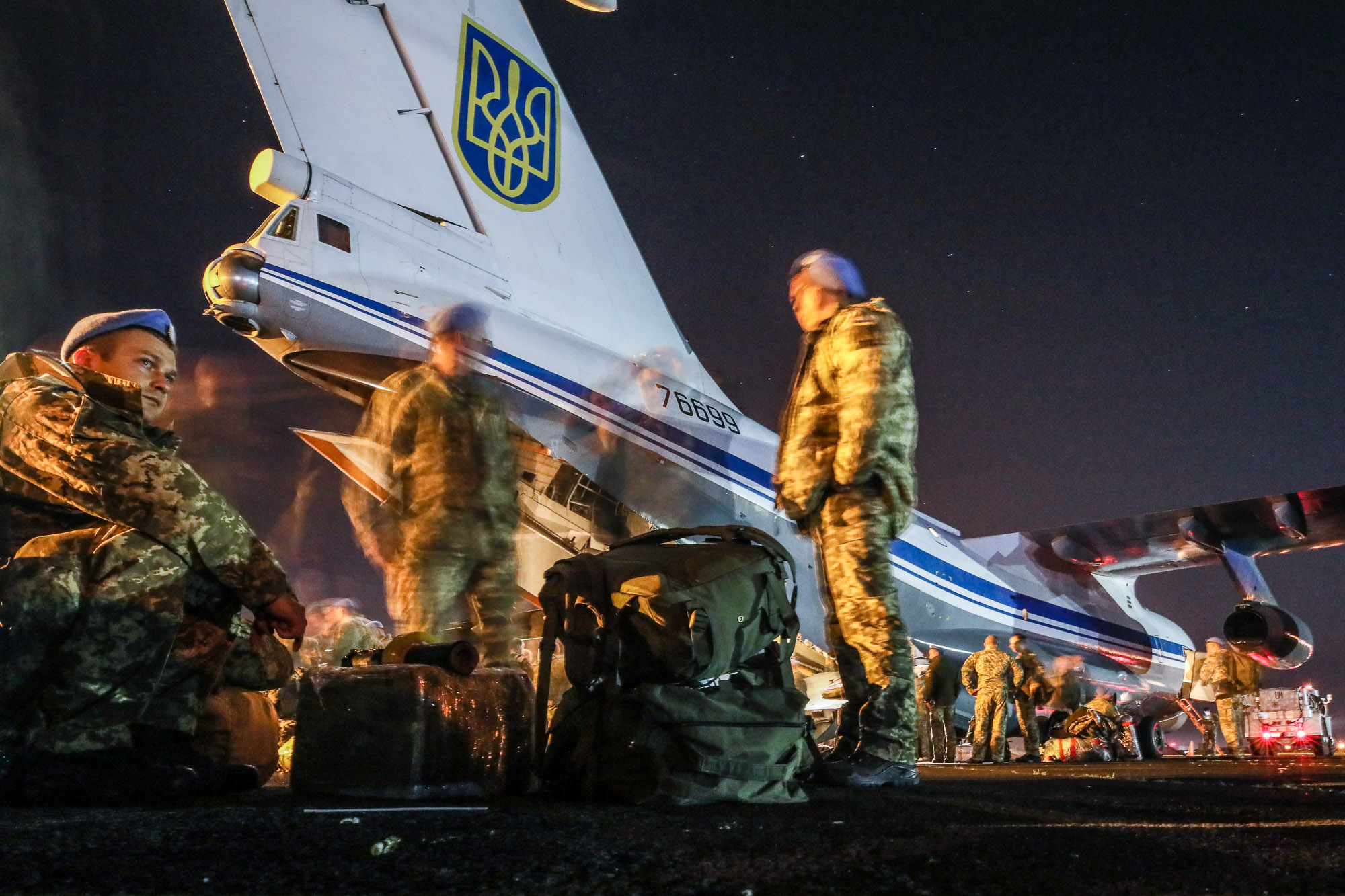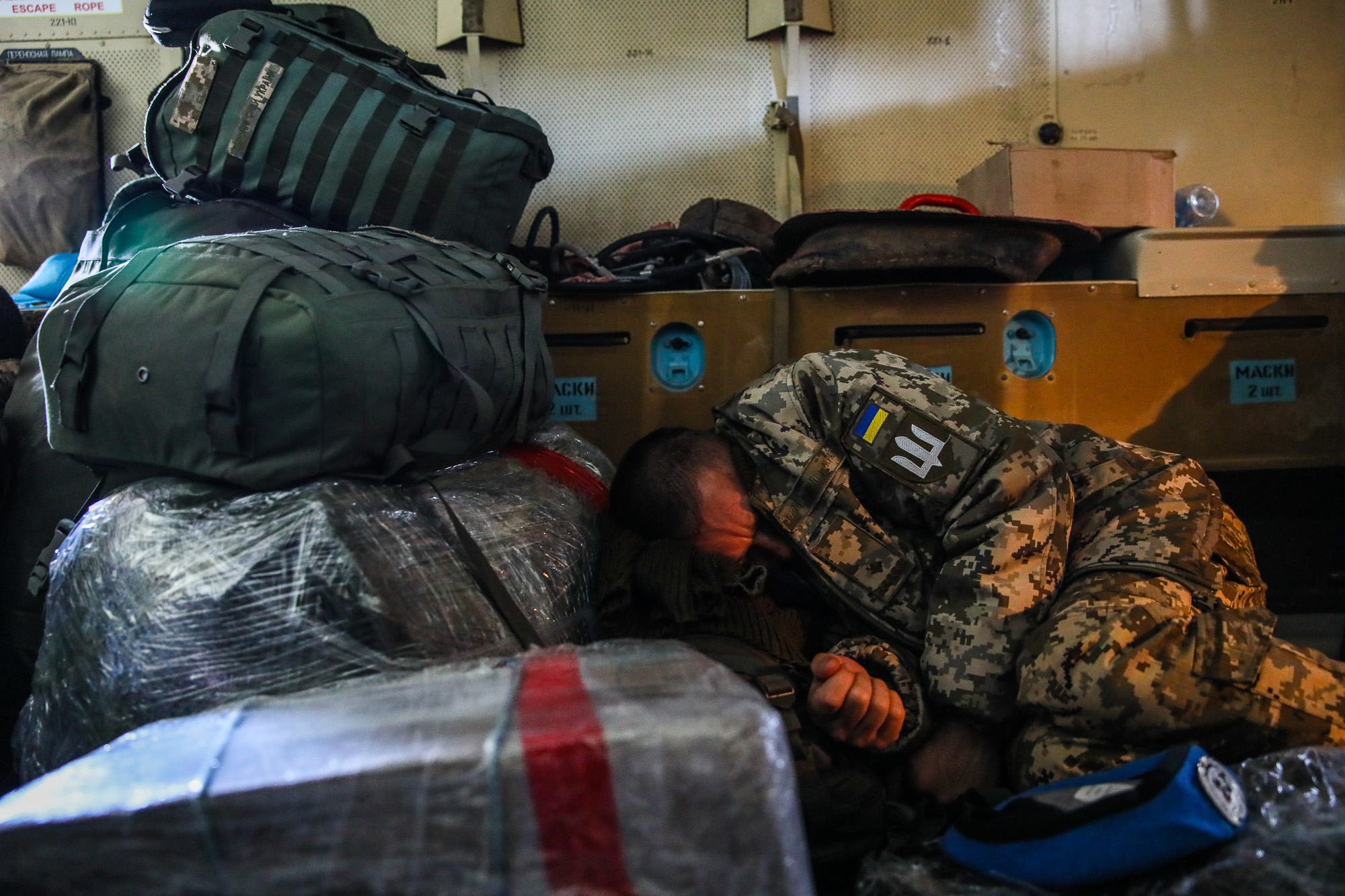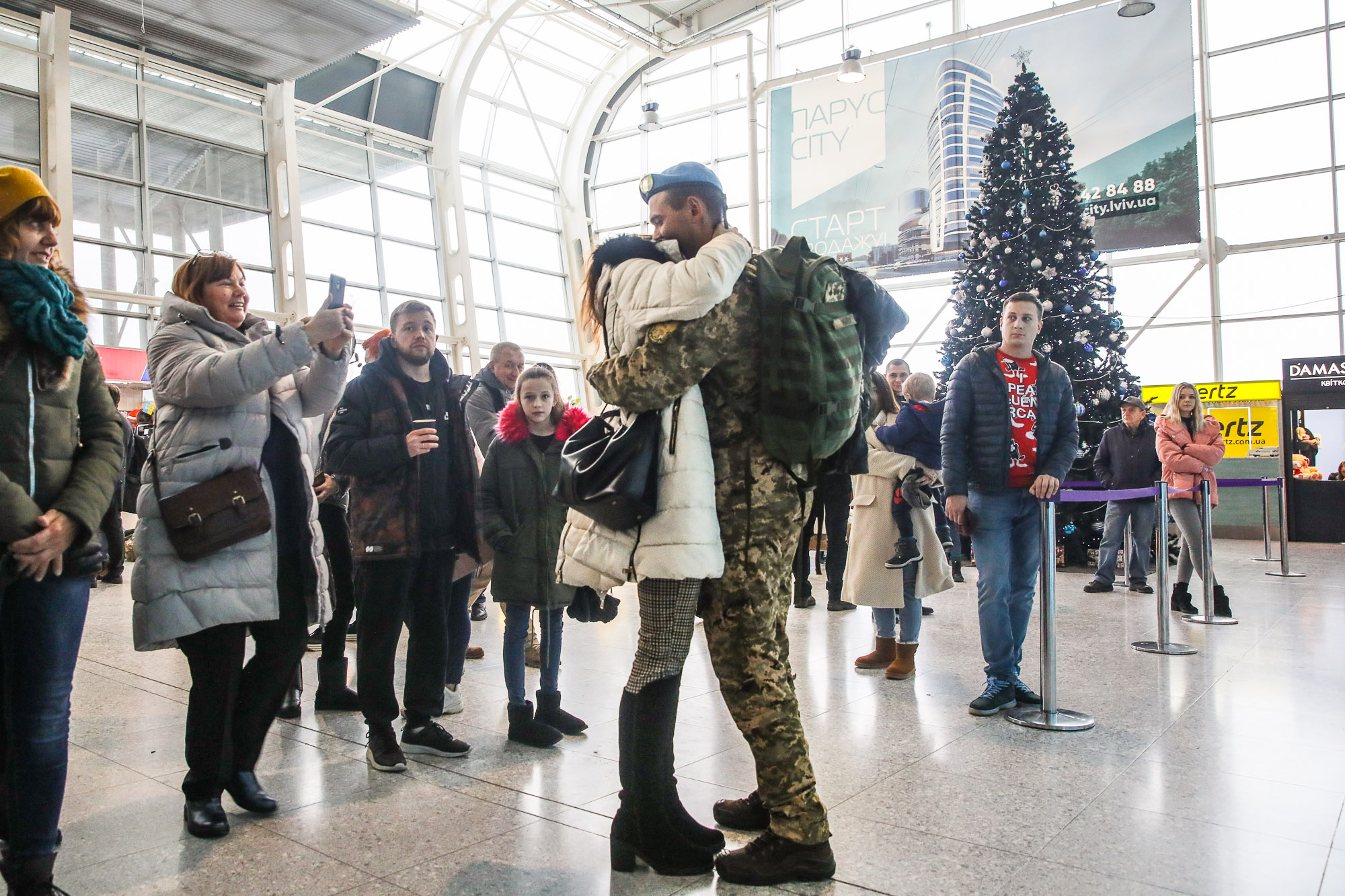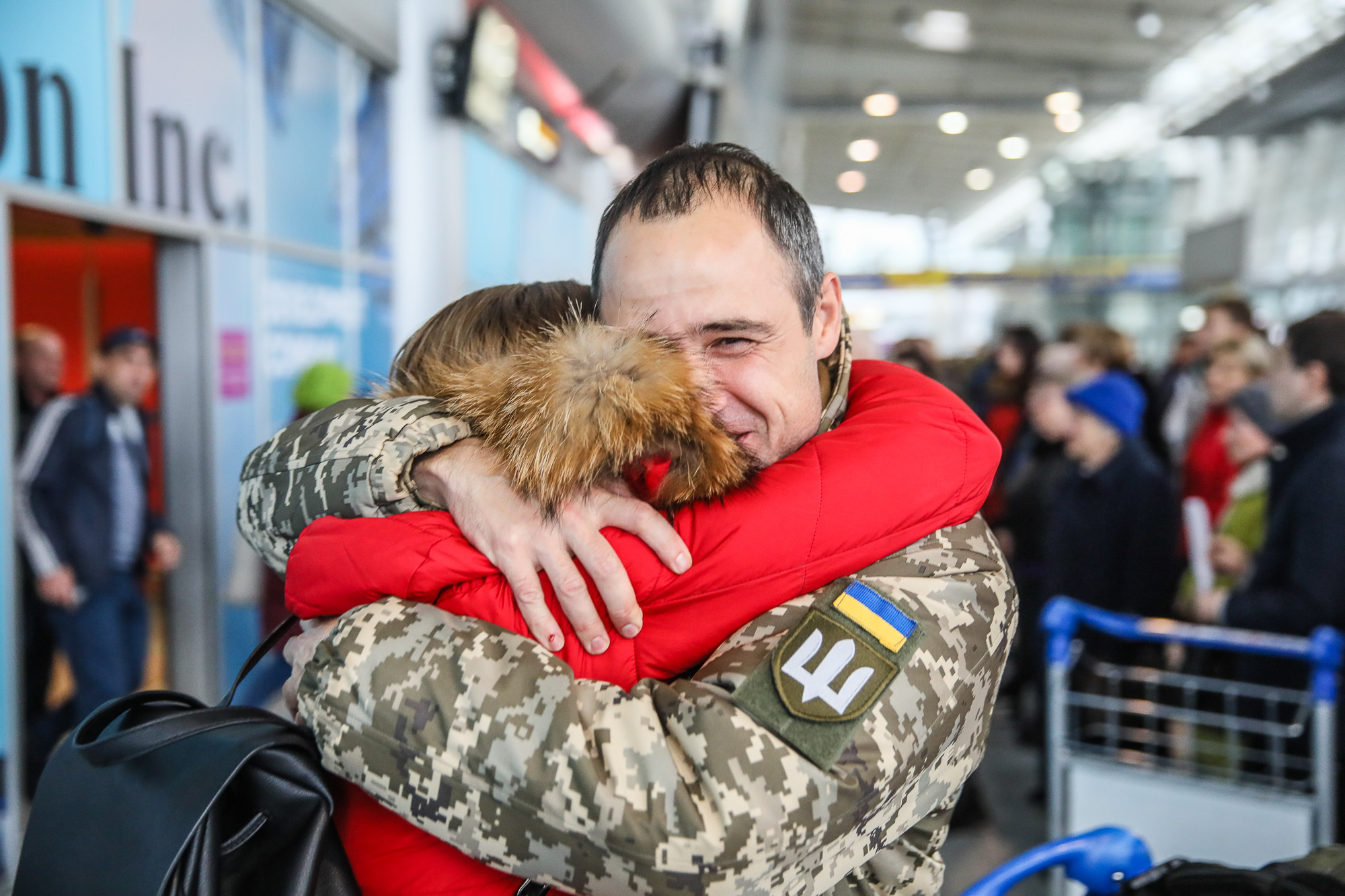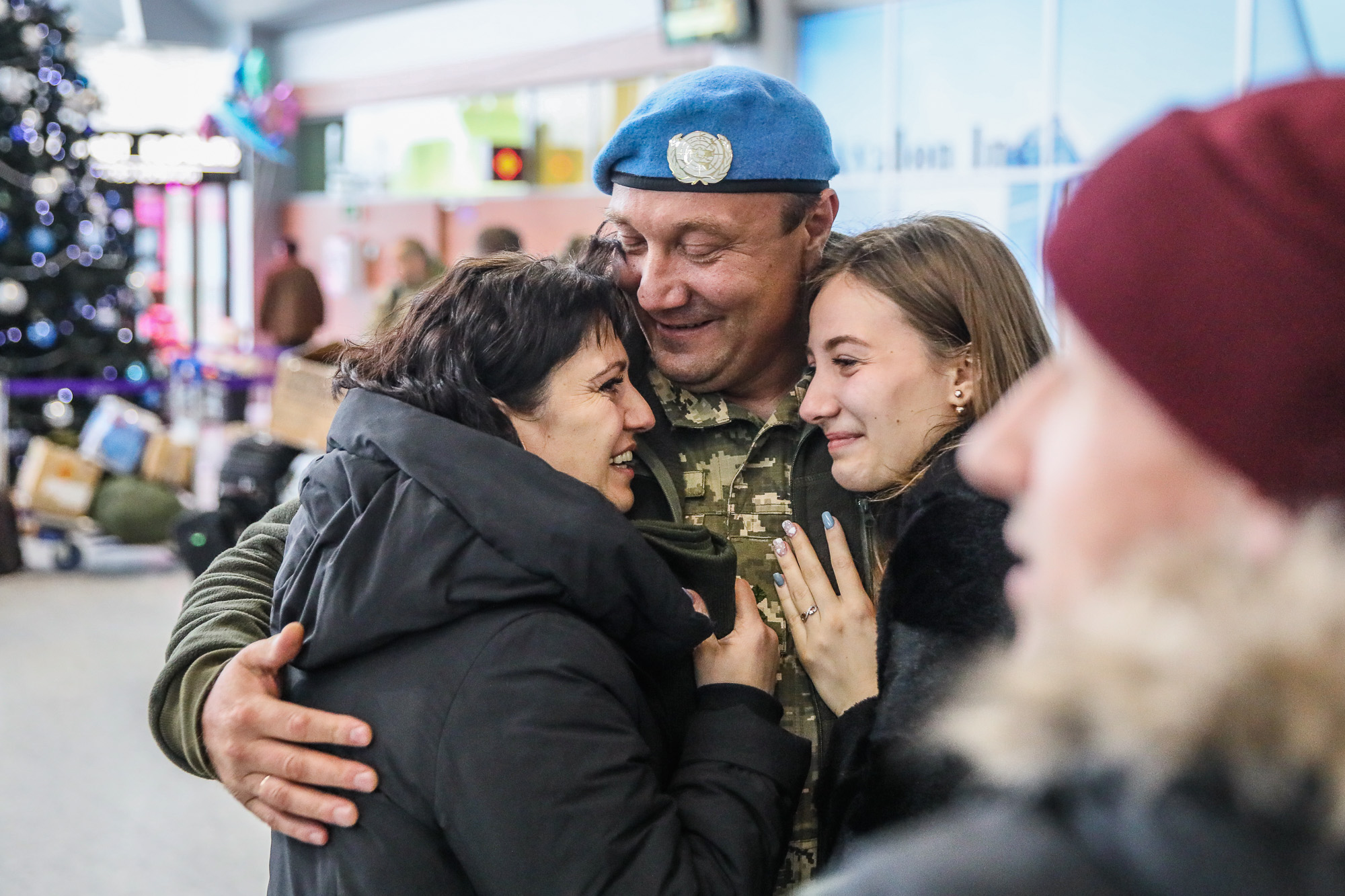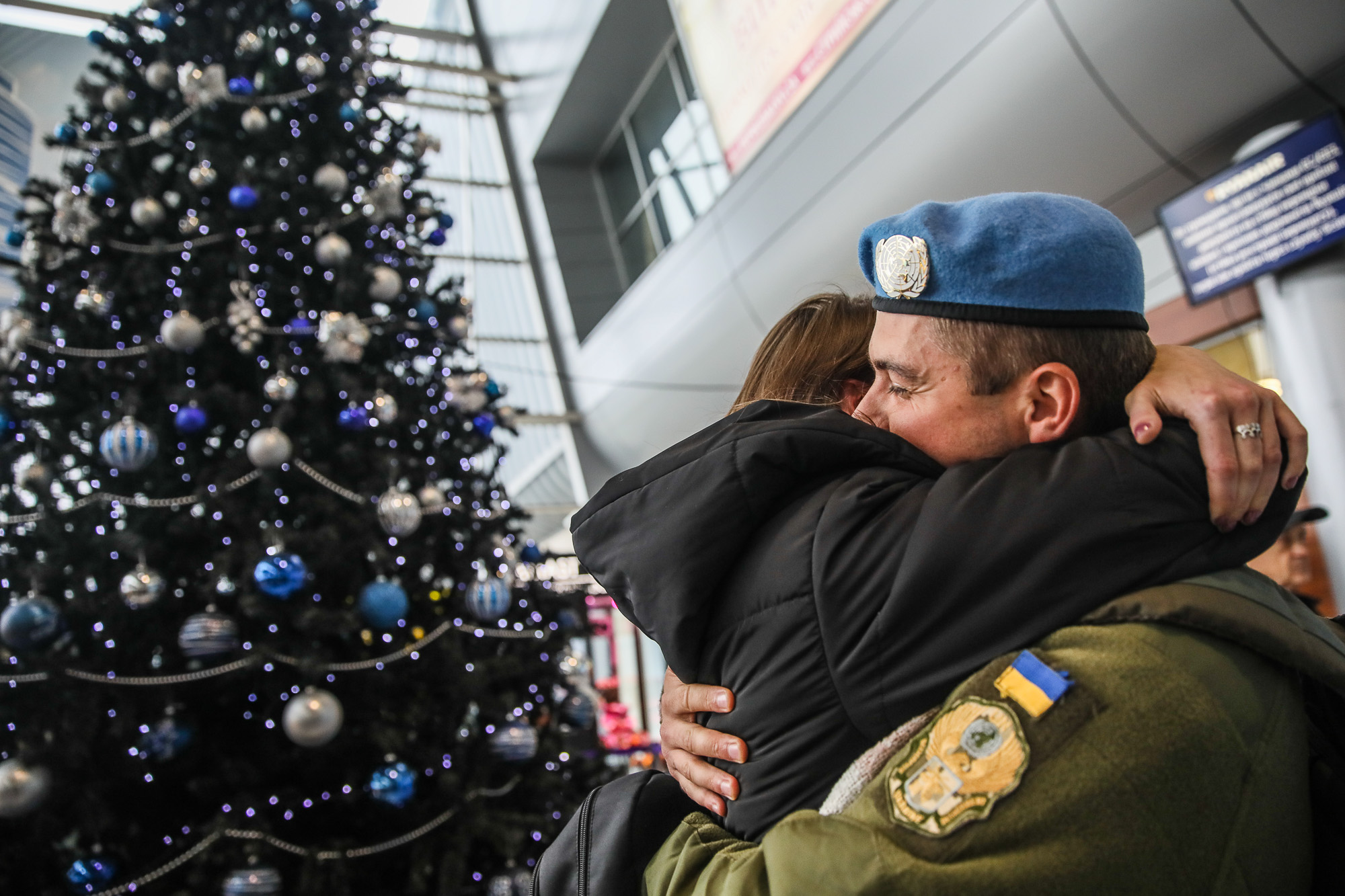Editor’s Note: The story was written following the Kyiv Post’s visit to the Democratic Republic of the Congo to embed with Ukrainian peacekeepers for two weeks in December. Some of the trip expenses were covered by the United Nations and Ukraine’s Armed Forces, but the coverage is independent of the donors.
GOMA, Congo — A Ukrainian Air Forces Ilyushin Il‑76 airlift roars loudly as it tears through the night sky bound due south at an altitude of 7,000 meters.
In its chilly, dimly lit cargo cabin, some 150 men in camouflage fatigues huddle on hard metal benches. Some struggle to find a comfortable position and take a nap on their comrades’ backpacks and shoulders. Others unwrap sandwiches and kill time staring at their smartphones.
On the sleeves of their jackets, the men wear the blue-and-white emblem of the United Nations.
On a frosty night in early December, they boarded this military transport plane at Lviv Airport in western Ukraine. Twelve hours later, they arrive in the land of permanent summer 6,000 kilometers away from home: the Democratic Republic of the Congo, a nation of 95 million people in the heart of Africa.
What lies ahead is yet another six-month deployment to the 18th Helicopter Detachment, the Ukrainian aviation unit in UN’s 20,000-strong peacekeeping mission to Congo.
Despite fighting a protracted war on its own territory, Ukraine sends its top helicopter pilots and technicians to Congo, a country tortured by endemic poverty, protracted armed conflicts, and deadly epidemics.
Their mission is to evacuate the sick and wounded, transport UN personnel, and even go into action.
The Kyiv Post spent two weeks in central Africa with the Ukrainian aviators. They help defend the Congolese people from the atrocities, save the lives of the wounded, and sometimes pull off daredevil missions in the air that few in their homeland ever hear about.
Armed peace mission
The Great African War of 1998–2003 — one of the deadliest conflicts in human history — formally ended long ago. It took over 5 million lives in Congo.
Since then, the country’s eastern provinces of North and South Kivu, which border Rwanda and Uganda, have never seen peace.
This land of dense rainforest and stunning chains of volcanoes remains a scene of cutthroat fighting between the Congolese government army and numerous rebel factions that have emerged and disappeared over the years.
According to the UN, over 160 armed groups with a total of 20,000 fighters are active in the region today.
They all seek the same thing: to gain control of the eastern Congo’s rich deposits of gold and coltan, which are sold abroad for immense profits.
This endless war for wealth takes an enormous toll on the local people.
Fighters conduct deadly raids on defenseless towns in retaliation for Congolese army operations. Mass rape and abduction for ransom are common. Young girls are forced into sex slavery. Boys are turned into child soldiers and forced to slaughter their own villages. Other children are enslaved and forced to work 48-hour shifts at far-flung illegal mining sites.
Most of the recent attacks have been committed by the Allied Democratic Forces (ADF), an Islamist group tied to the Islamic State.
The faction has earned a ghoulish reputation for readiness to commit extreme atrocities.
On the night of Nov. 14, ADF fighters attacked and looted the city of Beni — the region’s hotspot — killing at least 15 and slaughtering some of the victims with machetes. Seventeen more civilians were killed on Dec. 6. Two of them were beheaded. Another assault on Dec. 15 took the lives of 22 more civilians.
It is the ADF whose name strikes fear and anger in the villages and towns of Kivu. And they are the most vicious adversary for the UN mission, the world’s largest peacekeeping operation.
More than 60 nations contribute troops to the mission, called MONUSCO for short. Its mandate allows the peacekeepers to use force to protect civilians.
The 250-man Ukrainian contingent operates four Mil Mi‑24 attack helicopters and four more Mil Mi‑8 transporters. It is based in Goma, a city of 2 million people on the border with Rwanda.
The main Ukrainian base — an isolated trailer camp protected by high walls, barbed wire, and guard towers — is just several minutes’ drive away from Goma International Airport. Both day and night, UN airplanes and helicopters arrive and depart from this critical logistics center, which faces the magnificent outline of the Nyiragongo volcano.
The Ukrainian helicopters and their crews stay busy in Congo.
They bring Indian and Moroccan troops to flights in Goma that will take them home. They transport UN medics to the sick in distant villages. They protect South African helicopters flying across dangerous rainforests controlled by rebels. They recover the wounded and dead from the conflict zone.
In 2019 alone, Ukrainian crews spent over 3,800 hours in the air and transported 12,300 passengers and over 850 tons of UN cargo — which is “not bad at all,” pilots say.
Sometimes Ukrainian combat helicopters take on more dangerous missions. On Nov. 12, the ADF attacked a UN base on the banks of the Semulike River in North Kivu. In response, a Ukrainian Mil Mi‑24 helicopter fired missiles at the rebels and forced them to retreat into the rainforest.
For attack helicopter crews, this is the only opportunity to sharpen their skills in an actual war zone environment. In Donbas, combat aviation is banned under the Minsk agreements.
By all measures, the Ukrainians have been successful in Congo. MONUSCO is now requesting that Kyiv deploy two additional Mil Mi‑8 helicopters equipped for combat missions.
Behind the scenes, over 40 engineers keep the copters ready to take off in just 30 minutes. After all, an assignment from MONUSCO can arrive at any moment.
‘This land is blood-drenched’
It’s 7:30 a. m., but the Ukrainian technical maintenance team is already crossing the Goma airfield checkpoint. A duty officer enters the bus and sprays every man’s hands with antiseptic cream — just one of many routine precautions taken due to deadly Ebola virus raging in the city.
Despite this, for Ukrainian technicians, getting deployed to Congo is “like winning a trip to Disneyland,” they say.
“We have almost ideal service conditions here with the UN,” Lieutenant Colonel Serhiy Maguran tells the Kyiv Post over the roar of aircraft engines on the runway strip.
“Equipment support is way better here, so we can easily get any component any time. Back home, this is not the case. Too much bureaucratic runaround. This is a great professional experience for the future.”
The airfield looks like a buzzing provincial cargo terminal — peaceful and efficient. But beyond the palms and picturesque volcano chains, a different reality lurks: daily brutal bloodshed.
The peacekeepers cannot escape this reality, even on the base.
“Man, this is awful,” says chief service engineer Oleksandr Budovskiy as he watches a video on his smartphone during a coffee break.
The video supposedly shows a group of Beni civilians executing two fellow townsmen suspected of secretly collaborating with ADF. The alleged traitors lie still on the floor. Another man walks around and repeatedly hits them with a machete again and again. A bold chop leaves a bloody line on the victim’s neck. The executioner than slashes the half-conscious man’s ankle. A second alleged collaborator lies helpless, waiting for his execution.
Onscreen, the scene becomes so gory that onlookers intercede and try to call the man with the machete.
“Good God,” Budovskiy says, turning the video off. “This land is blood-drenched.”
Soon, the Ukrainian technicians get their orders, and begin loading stretchers into a Mil Mi‑8 cabin.
Six Congolese army soldiers were badly wounded while fighting ADF near Beni. MONUSCO has requested a medical evacuation to Goma.
The highest cause
There’s another side to the Ukrainian peacekeepers’ life on the base. When night comes and all their duties are done, the pilots love to sit down to talk over a glass of whiskey.
“Fighting rebels is hard,” says Senior Lieutenant Andriy Kulishov, a Mil Mi‑24 pilot. “No wonder the government army can’t cope with them. There are maybe just 850–900 guerrillas near Beni.
But they use hit-and-run tactics, and there’s no way you can stink them out of those impassable forests.
“It’s good that they have no weapons to down us with. We once had a recon flight in search of rebel outposts. And after landing in Beni, we discovered a hole in our hull. The bullet passed through just a hand’s distance from our radio guy’s head — the bastards tried to gun us down.”
The Ukrainians are hardly MONUSCO’s only helicopter force. But they have a reputation as hotshots ready to accept risky missions other contingents usually decline.
“They love us here,” a pilot laughs. “Who else would agree to fly half-blind through the tight fog in search of an Indian guy who got lost in Lake Kivu?”
The airmen respectfully lower their voices as they talk about Lieutenant Colonel Volodymyr Prokopenko, one of the detachment’s senior officers.
He and his mate, Lieutenant Colonel Oleksandr Suraykin, carried out their rotation’s most daring flight. MONUSCO later described it as “a remarkable act of valor.”
Among military aviators, boasting about one’s achievements is frowned upon. So it is not easy to coax the story out of Prokopenko, a robust 42-year-old with tired eyes.
The officer spends his evening sitting alone in the base’s garden. A patch on his sleeve reads “Sniper Pilot” — a title indicating the highest grade of expertise in Ukraine’s military aviation.
That mission took place on Nov. 11, when the Ukrainian unit received a call for help from MONUSCO. A Pakistani peacekeeper, Sergeant Ubiad Ullah, at the Salamabela outpost was in critical condition with malaria. He needed immediate evacuation to a hospital in Goma.
The clock was ticking and there were very few hours of daylight left. A medevac helicopter would have to fly through inclement weather and pull off a night landing at a site totally unprepared for it.
“The area was full of extremely troublesome heavy cloud cover,” Prokopenko says. “The visibility was very limited in the twilight. Also, Goma is at a height of 1,500 meters, and you have to be careful gaining altitude as the air is thin. In this highland, there’s every chance to end up slamming into a mountain.”
At nearest UN airfields, there was no one ready to set off a flight so soon and in such danger. The Ukrainian unit decided to take the risk — and an hour after the call, a Mil Mi‑8 was already in the air.
Against all odds, Prokopenko and Suraykin eventually made it to the Salamabela outpost. Having taken the dying peacekeeper, they rushed back to Goma flying blind through the night and simply following a fail-safe GPS track recorded during the first flight.
“Don’t even think of presenting this as some heroic thing,” Prokopenko says.
“This is our job, the essence of our profession. This is what they teach us in flying schools as our foremost goal: To save a life. We did this so many times in Donbas, and we keep doing our job in Congo. The main principle remains the same.”
Rumors in the base, however, were saying the story had a tragic ending: Despite all the efforts, the Pakistani died in hospital.
Prokopenko smiles when asked about this.
“Look what I just got here.”
He shows a certificate mailed to him and Syriaikin by MONUSCO south sector commander Kashif Abdullah. The Pakistani general renders the warmest thanks to the Ukrainian pilots for the daring sortie that saved yet another life — the highest cause for a medevac pilot.
“This extraordinary display of professionalism under challenging circumstances…sets an example for all professional pilots to emulate,” the letter of appreciation reads.
“It is due to the efforts of officers like these that Ukrainian aviation continues to maintain its reputation as a potent and professional military force.”
The breakthrough
It’s just another morning in Goma, and a UN bus comes out of the Ukrainian base’s gates. Laughing and chanting, local kids run behind it down the dirty, unpaved lane.
A thick metal grid shields the vehicle’s windshield and windows. Its doors are reinforced with metal bars.
The bus is carrying 20 Ukrainian peacekeepers to the local UN headquarters to getting their new ID cards. It’s hardly a remarkable trip.
Then the bus turns onto Lake Avenue. Suddenly, the road is blocked by crowds gathered in the street.
“Oh god,” the bus driver sighs. “Not again.”
That’s the thing about Goma: Just a spark can set off the whole city.
This morning, a rumor swept town claiming that the bodyguard of a senior Congolese official had killed a child near the airport. Thousands of protesters immediately rushed to the province administration office, which is located not far from the UN headquarters.
The Ukrainian bus stops before a mass of large stones blocking the road. Angry civilians often create these barricades during disturbances in the city to impede the movement of government and UN forces.
“We’re screwed,” a peacekeeper says. Now they are stuck in the middle of the infuriated crowd.
Tensions are still boiling in the city after civil unrest swept the entire region in late November.
On Nov. 24, ADF forces conducted a night raid on Beni, killing at least eight civilians and taking nine prisoner. The attack triggered violent protests against the UN and Congolese authorities. Locals demanded that the peacekeepers take action against the ADF or leave the area.
Protesters blocked and trashed MONUSCO bases near Beni, plundering and burning the mission’s buildings and vehicles. In the following days, the wave of indignation toward the UN also spread to Goma and other cities.
The people of Congo are weary of abject poverty and war. Sometimes, they project that anger onto foreigners — even those who have been sent to help.
That anger is visible in the eyes of the people blocking the Ukrainian bus.
“Don’t take pictures,” peacekeepers shout. “Remove your cameras, you’re provoking them.”
Crowds in Goma regularly hurl stones at UN vehicles. And if things go very wrong, they could potentially topple the bus and drag the peacekeepers out — despite the vehicle’s armor.
Everybody is nervous. There are no weapons on the bus.
The Ukrainian peacekeepers believe the unrest must be unfolding in much of the city: Two UN helicopters observing the situation roar overhead.
The driver squeezes the wheel: “Guys, we’ve gotta get out of here.”
Then, a blue Toyota pickup pulls up in front of the bus carrying several men dressed in heavy armor and riot helmets.
The Congolese police have arrived just in the nick of time. Another group of police arrive down the street and begin removing the rocks from the road. Finally, the bus begins to slowly move forward as the police gradually clear the way.
Almost immediately, there knocks and booms. Some of the street protesters have started kicking the bus and throwing rocks.
“To hell with those IDs, let’s get back to the base,” a Ukrainian peacekeeper shouts. There’s no way the bus can make it to the UN office amid such mayhem.
The driver steps on the gas and abruptly turns left at the nearest intersection, leaving the raging main street.
The Ukrainian base in Goma, along with all other UN sites, takes additional security precautions for the rest of the day. All visits to the city are forbidden, armed patrols are increased, and all guards on watchtowers are ordered to report on the situation every 15 minutes.
Amid the protests in the city, occasional bursts of gunfire ring out.
“My heart bleeds for these kids”
A persistent drizzle falls on the Marché Alanine, a major marketplace in Goma as a group of Ukrainian officers approaches a store filled with sacks of vegetables and grain.
After a long bargain in a mixture of broken English and French, the store’s pot-boys drag heavy sacks to a van parked nearby. The peacekeepers have bought a hundred kilograms of flour, 100 kilograms of rice, 50 kilograms of charcoal, 30 kilograms of sugar. Now, the van leaves the messy market and heads north to the poorest part of the city.
A young, local man rides with the Ukrainians in the vehicle, pointing out the way and happily taking selfies with the uniformed peacekeepers.
His name is Fabrice Tsongo, and he is a charity worker at one of Goma’s orphanages. Every once in a while, he accompanies Ukrainian peacekeepers bringing loads of provisions to the children’s home.
“The guy just came to our base’s gates maybe six months ago asking for help,” says Lieutenant Colonel Serhiy Sklabin, looking back from the front seat.
“Since then, every month the whole detachment chips in $1–2 each to buy something for those kids.”
Of all the UN contingents deployed to the city, only the Ukrainian unit agreed to help the orphanage.
For many in the unit, it is a symbolic continuation of what they did while deployed to the war zone of Donbas: supporting local orphanages and homes for disabled children.
The van rolls through impoverished slums where people live in crowded wooden cabins amid muddy puddles and volcanic rocks. Tsongo finally stops the driver at the red metal gates of one of the districts’ more or less “well-to-do” houses.
This is their destination.
Whenever someone mentions the Goma orphanage during a conversation at the Ukrainian base, it tends to spoil the mood.
The conditions for the 30 children who live there are appalling.
The main house lacks almost any furnishing except for the simplest long benches.
Each of the house’s several empty rooms has nothing but a paper list of names on the wall and a foam mattress on the floor. The children on the list sleep there shoulder to shoulder.
Several workers do all the cleaning and washing for the kids, and also cook them meals over an open fire in the backyard. They have neither a kitchen, nor running water and indoor sanitation.
Some of the children are coughing very hard, which everyone hopes is not a symptom of pertussis.
“The orphanage survives mostly thanks to aid from Christian charities,” Tsongo says. “And it’s good that the peacekeepers agreed to help us, too. The children can attend school every day and live here, without begging for food and money.”
The Ukrainian officers, together with the orphanage workers, unload the coal and food from the van. But there’s something more: The detachment’s new rotation also brought them several boxes of soft toys from Ukraine as a gift of friendship from Ukrainian children to their Congolese peers.
The orphans thank the officers by singing a song in their honor.
“Good God, my heart bleeds for these kids,” one of the officers sighs nervously as he walks back to the van.
“But that’s much better than the streets.”
Coming home
Washed in pouring rain, the Goma airfield runway strip shines brightly in the light of the Ukrainian Air Forces Ilyushin Il‑76.
The airlift full of uncomfortable benches is back to bring 150 more Ukrainian peacekeepers home. But the men in blue berets are not happy.
The day before departure, the detachment’s command said that each serviceperson can bring no more than 35 kilograms of luggage back. But when the whole force had passed through passport control and security checks, it turned out that the real limit was only 30 kilograms.
The aircraft crew was only given enough money for fuel to carry this amount of cargo to Lviv with a short refilling stop in Egypt.
Some will have to say goodbye to African souvenirs, elite alcohol and gifts they planned to bring their loved ones.
“Can you believe this?” peacekeepers say in anger. “We have done so much for our country, and we end up facing this humiliation.”
Tensions run high. Everybody knows what happened during the previous flight: Peacekeepers had to throw away much of their carry-on luggage, and airport employees reportedly snatched it up right from the tarmac.
That’s about to happen again.
As peacekeepers stand in line to weigh their luggage near the aircraft, a crowd of people ready to profit off this situation gathers: children, government army soldiers, airport employees.
They wait impatiently for someone to start opening his backpack and dropping items on the ground.
A Ukrainian officer angrily abandons a pack of dull machetes and coconut cream bought in a souvenir store, and the crowd of treasure seekers starts pushing and shoving to claim them. Another peacekeeper prefers to smash a bottle of fancy Indian rum on the runway strip rather than give it away.
Fortunately, the tension soon dies down. Only a few peacekeepers had no other choice but to ditch their belongings. Thankfully, others found space for most excess items in their bags.
Closer to midnight, the peacekeepers start to board the plane.
“Goodbye, Red,” an engineer says, patting a stray dog that lives in the Ukrainian airfield sector. It lies near the aircraft’s loading entrance, sorrowfully watching the airmen leave forever.
“Take care of the new guys.”
Finally, after the men take a few farewell selfies and all systems are checked, the Ukrainian peacekeepers leave Congo to celebrate the New Year with their families back home.
